

One of the most unique parts of the United States from a geographical standpoint is the string of islands that make up the Florida Keys. Running for more than a hundred miles from the southeastern corner of Florida, the Keys are a fascinating place from a geological, historical, and cultural perspective. The islands and their main town of Key West have long been home to a collection of outcasts and misfits, ranging from the pirates of the colonial period to the LGBTQ community in more recent years. The Keys are a place unto themselves that have served as a place for freedom of expression of all sorts, largely due to their remote and isolated location. Just reaching Key West can be a daunting task due to the way it sits perched way out in the Gulf of Mexico. The town is closer to Cuba than it is to Miami, and the cultural influence of the Spanish-speaking islands to the south can be felt throughout the Keys.

I had wanted to do a trip through the Keys for many years. I used to look at maps of the continental United States and see this tiny archipelago of islands off to the south of Florida and wonder what it would be like to travel there. When I had a work conference in Miami in January 2016, I realized that I had an opportunity for a very brief trip to Key West. My itinerary had me flying into Miami at about 9:00 AM on a Tuesday morning but my work conference wouldn't begin until the next day, leaving me free to do some sightseeing during the rest of that initial day. It's a long way from Miami to Key West, about 170 miles / 270 kilometers by road on US Highway 1, but that was short enough to be doable in a single day. I planned to fly into Miami in the morning, pick up a rental car and drive to Key West, then drive back to Miami the same day in the evening, returning my rental car and then heading to the hotel for my work conference. That would make for an insanely busy travel day but it was the only way that I would have the chance to do this trip. Every other day of my work conference would be full from morning to night.
I picked up my rental car at the Miami airport and began the long drive down to the Keys. This was the morning following the 2016 college football national championship game played the night before, with Alabama winning its fourth title in the Nick Saban era, and I distinctly recall the sports talk radio station that I was listening to having a big debate about where Alabama ranked in comparison to other historical dynasties. As for the drive itself, it was uneventful and less interesting than I had hoped during the initial stretches. There were a lot of cheap and tacky tourist attractions along the road, souvenir stands and fast food places, that sort of thing. It also wasn't apparent from the road that I was driving along a series of tiny islands. For the most part the drive was indistinguishable from any other part of southern Florida, aside from the large number of hotels that I kept passing. The Upper Keys - the islands closest to the Florida mainland - were a bit of a disappointment.
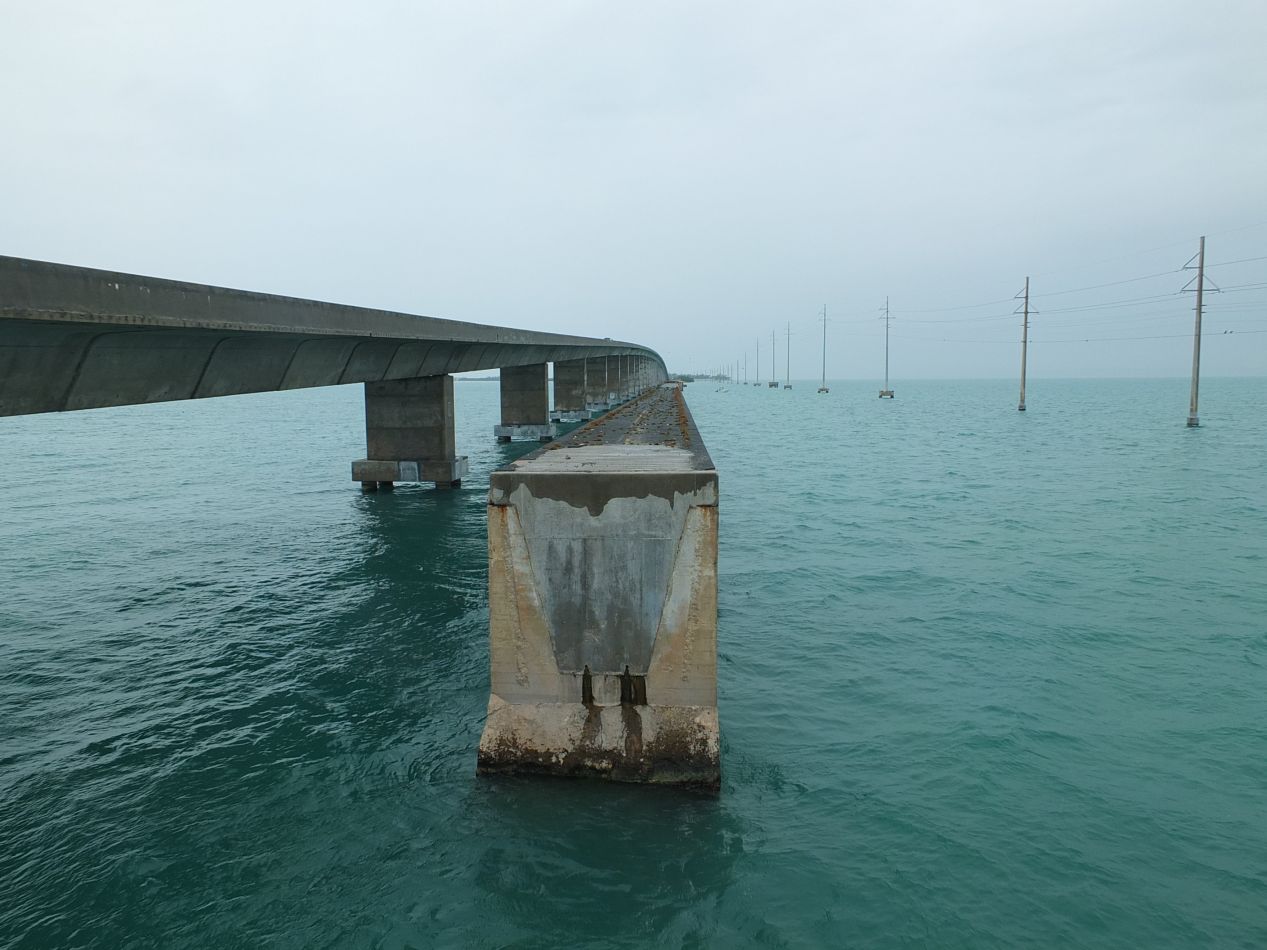
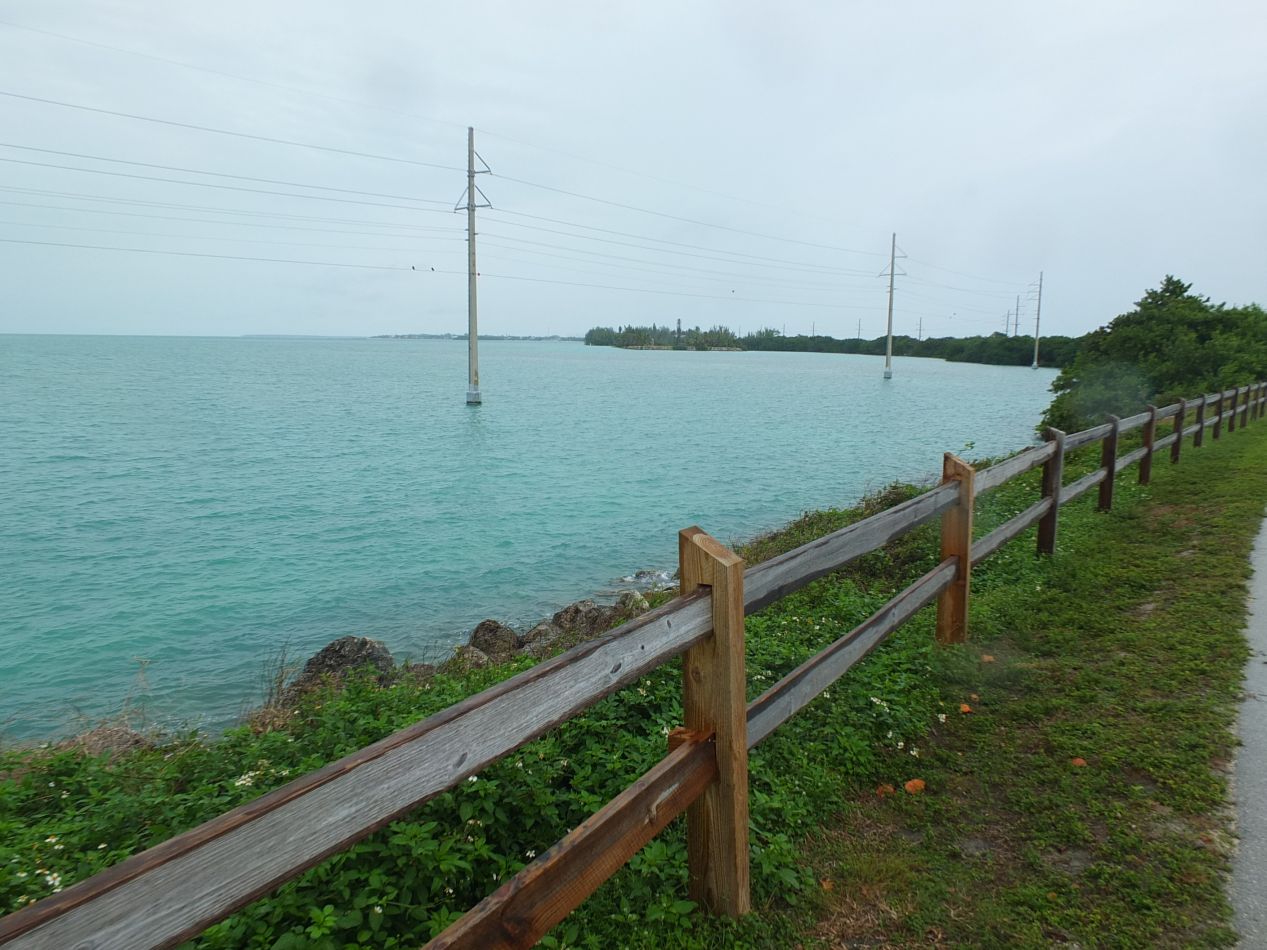
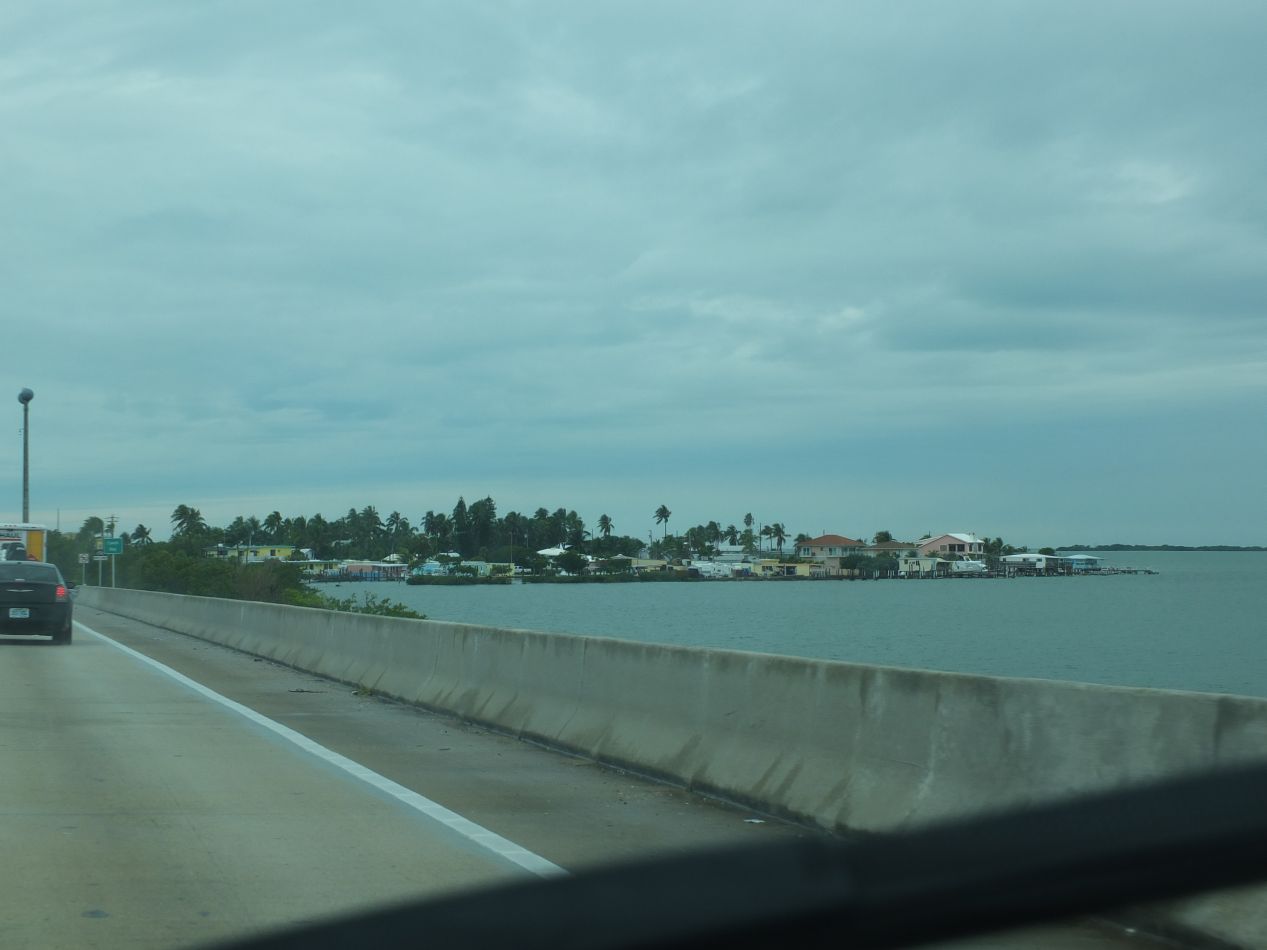
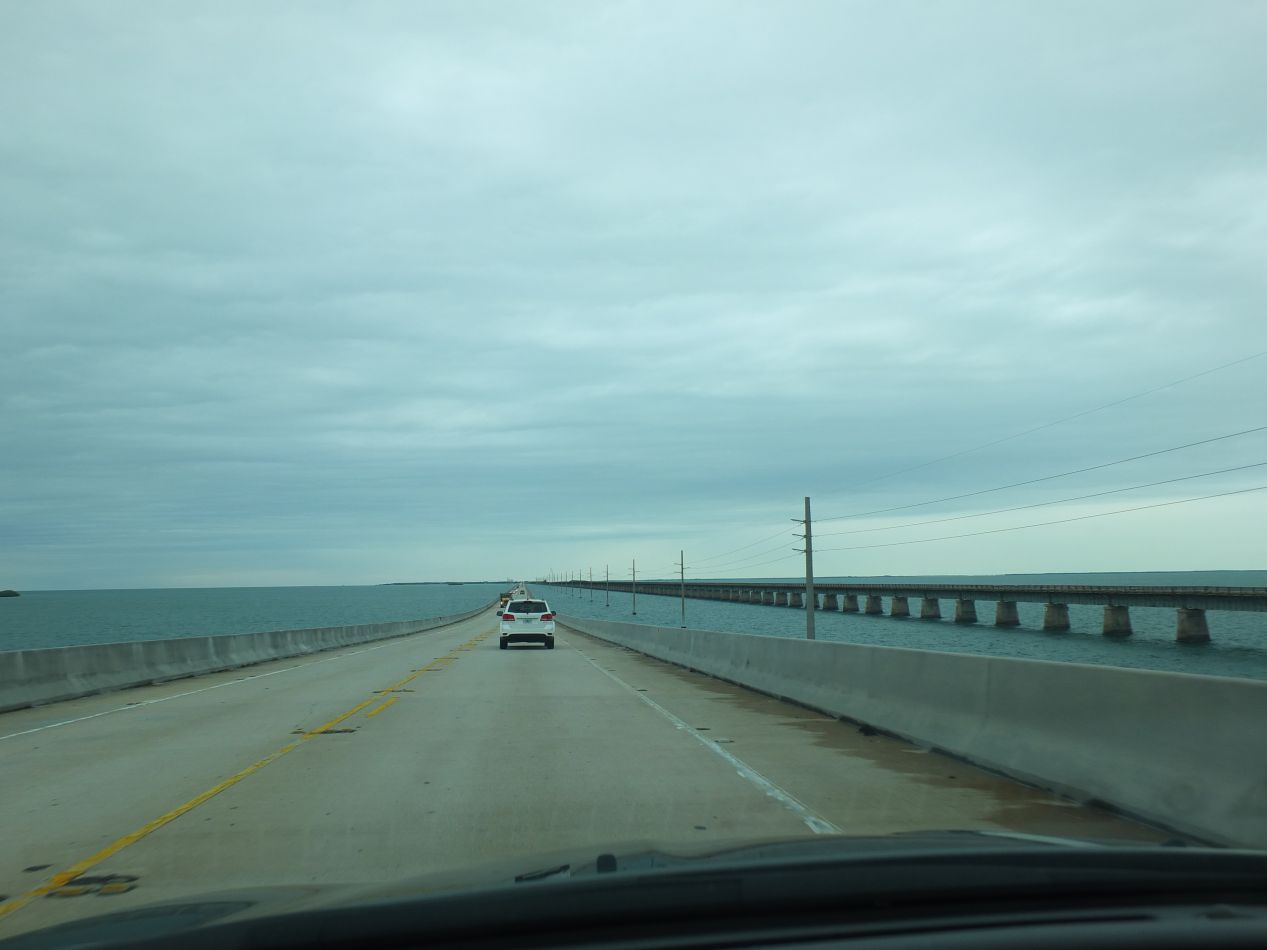
Things started to pick up when I reached the Middle Keys roughly halfway along Highway 1 (about 60 miles / 100 kilometers out from Key West). It started to become more apparent that the Overseas Highway was crossing between the fingers of an archipelago and increasingly longer bridges were needed to connect them together. Unfortunately this was a travel day where the weather wasn't cooperating, as it was overcast and raining throughout much of the drive. I wouldn't be able to get any of those gorgeous pictures of dazzling sun and sea that you can see in stock images of the Keys. The pictures above show some of the bridges running through this portion of the Keys along with the electrical poles paralleling them in the water. The last picture is an image of Seven Mile Bridge, the longest bridge in the Keys and the longest in the world at the time of its original construction in the 1930s. It's a poor image because I had to take it while driving the car itself; I would get some better pictures once I had a chance to stop.
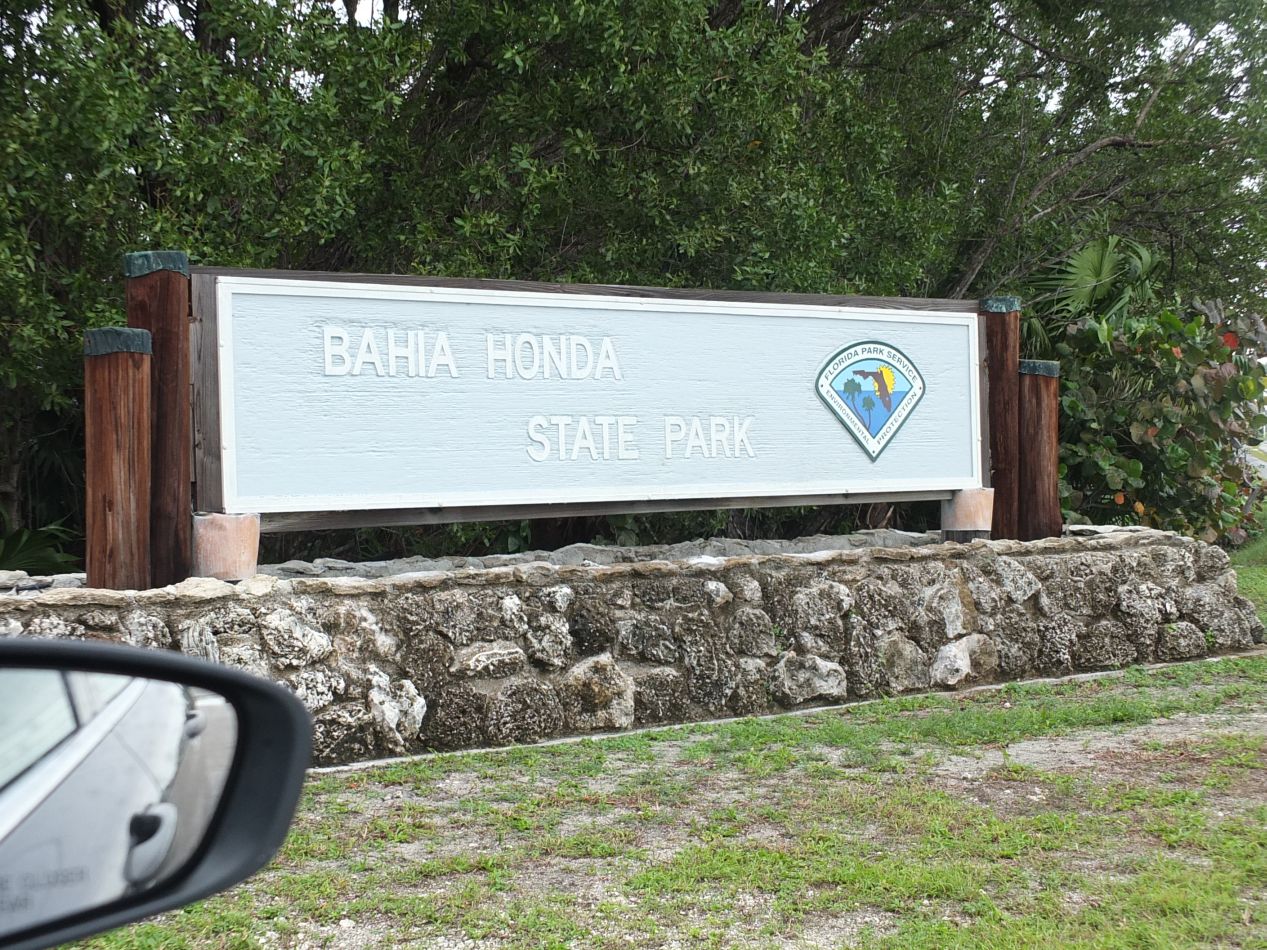
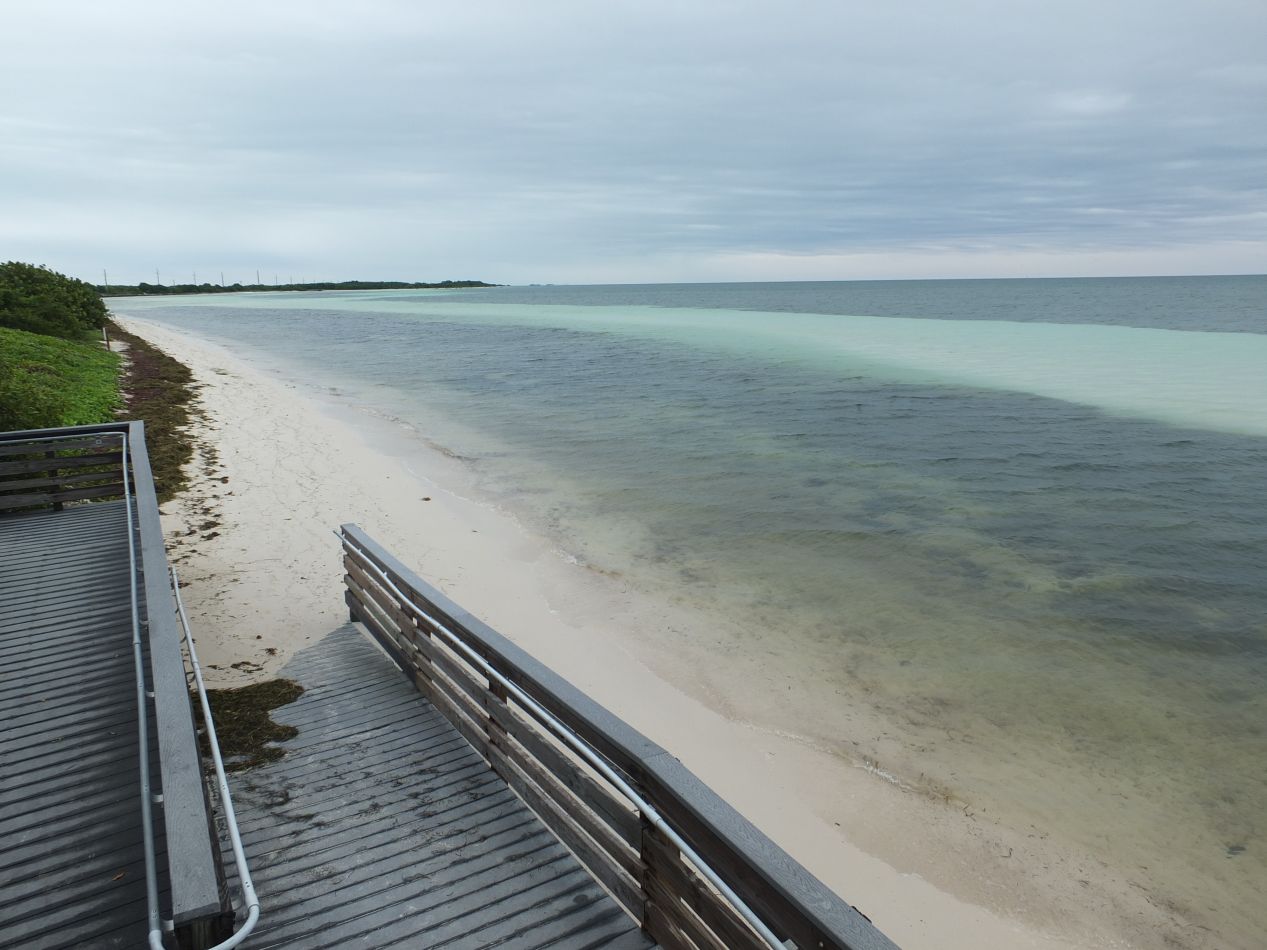
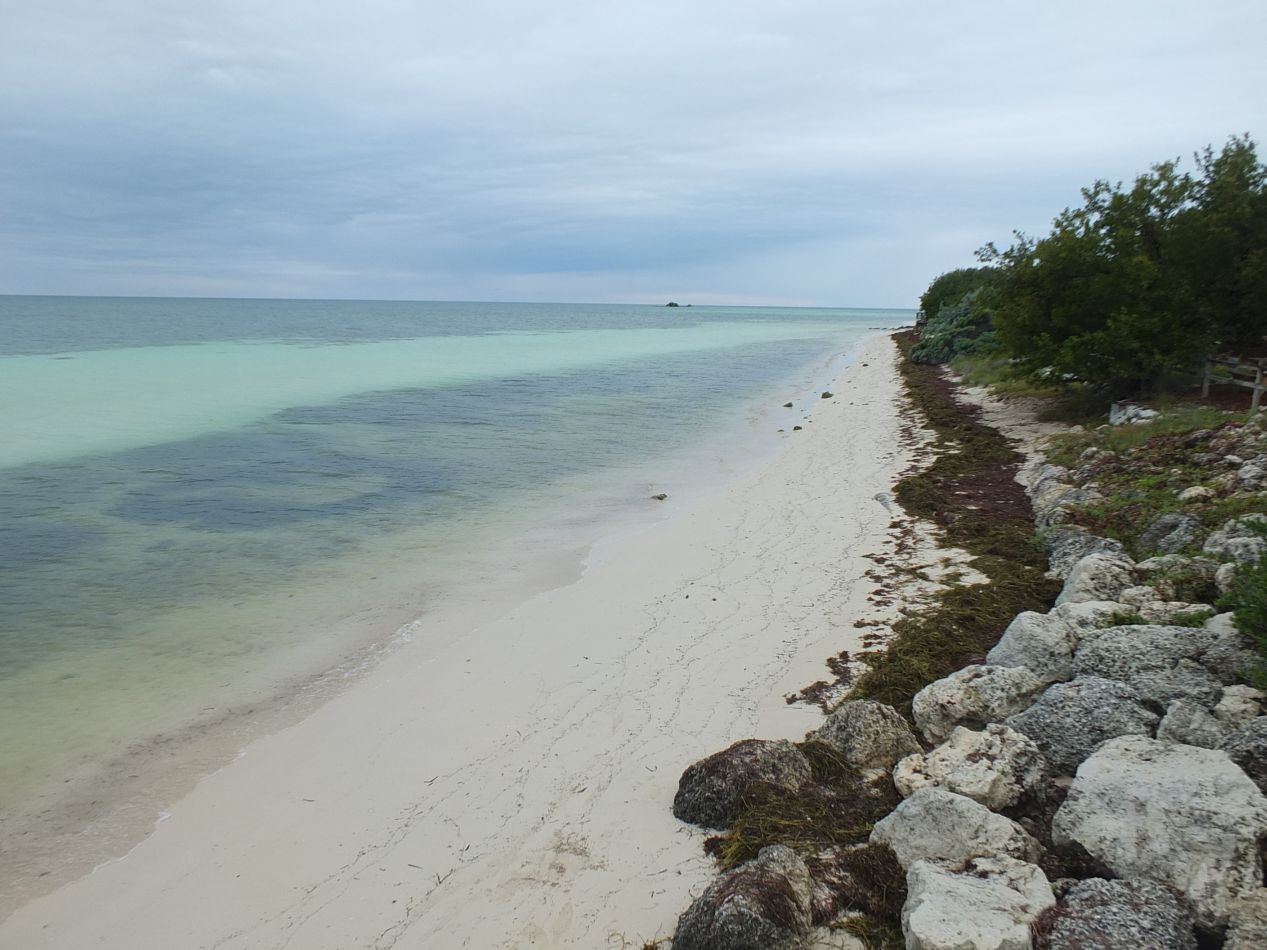
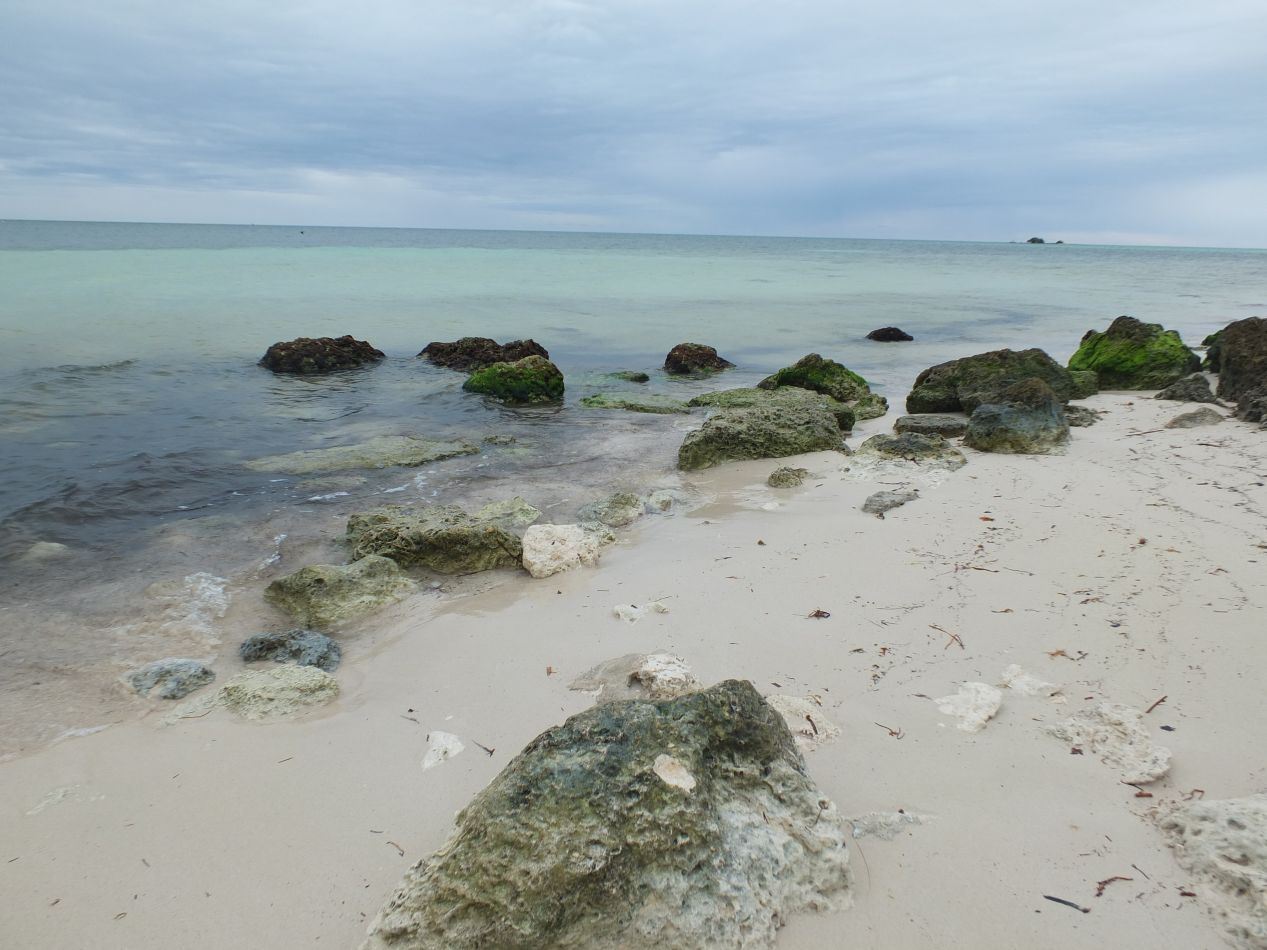
The first place that I stopped was here at Bahia Honda State Park. This park takes up almost the entirety of Bahia Honda Key, with the name meaning "deep bay" in Spanish. The white sand beaches in this park have often been rated as among the best in the United States, and I could see the attraction of the gentle waves of green-tinted water that ran along the shoreline. On this overcast day in January, however, the park was almost completely deserted and had an isolated feel to it. This was not a day for swimming.
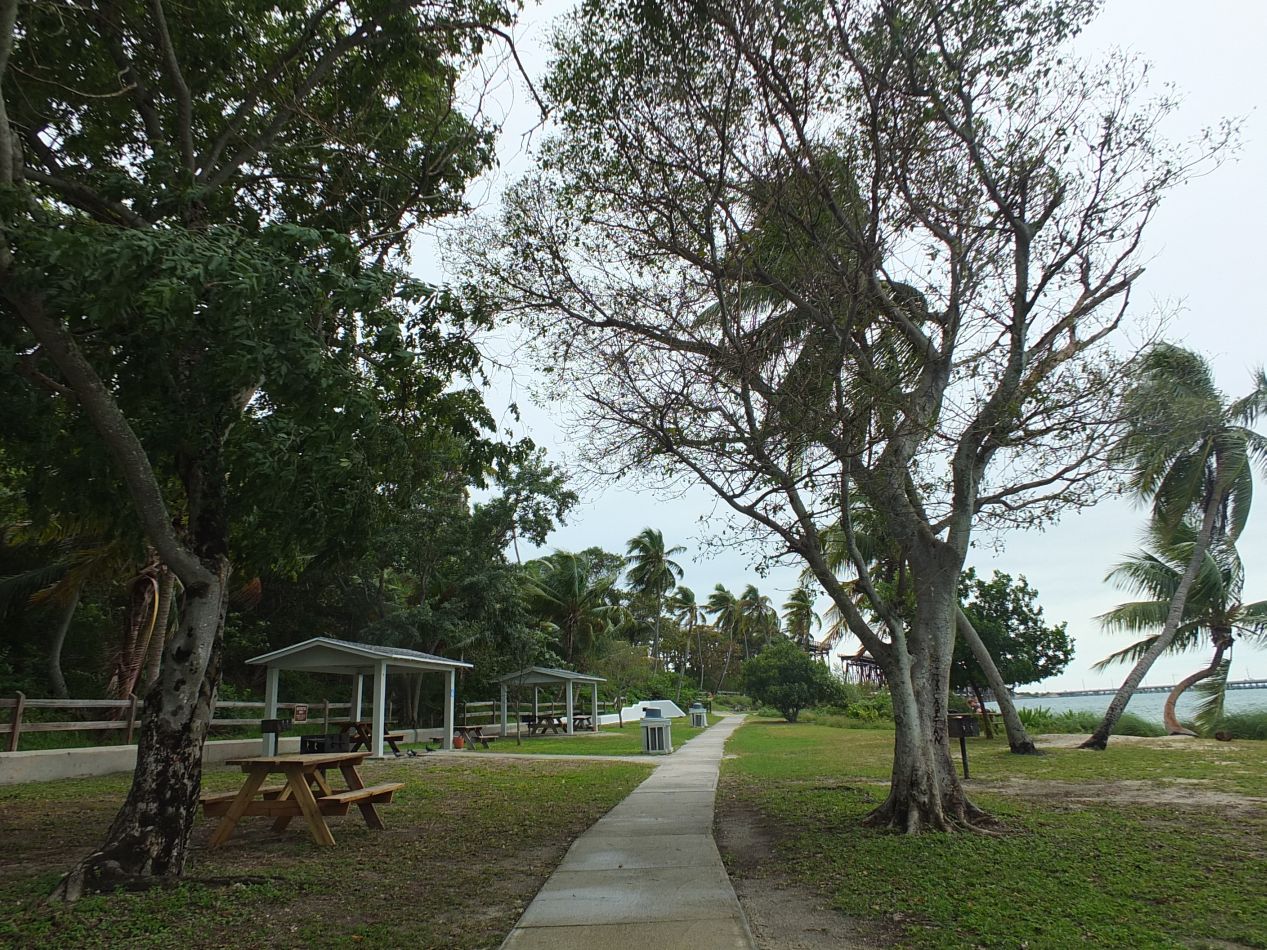
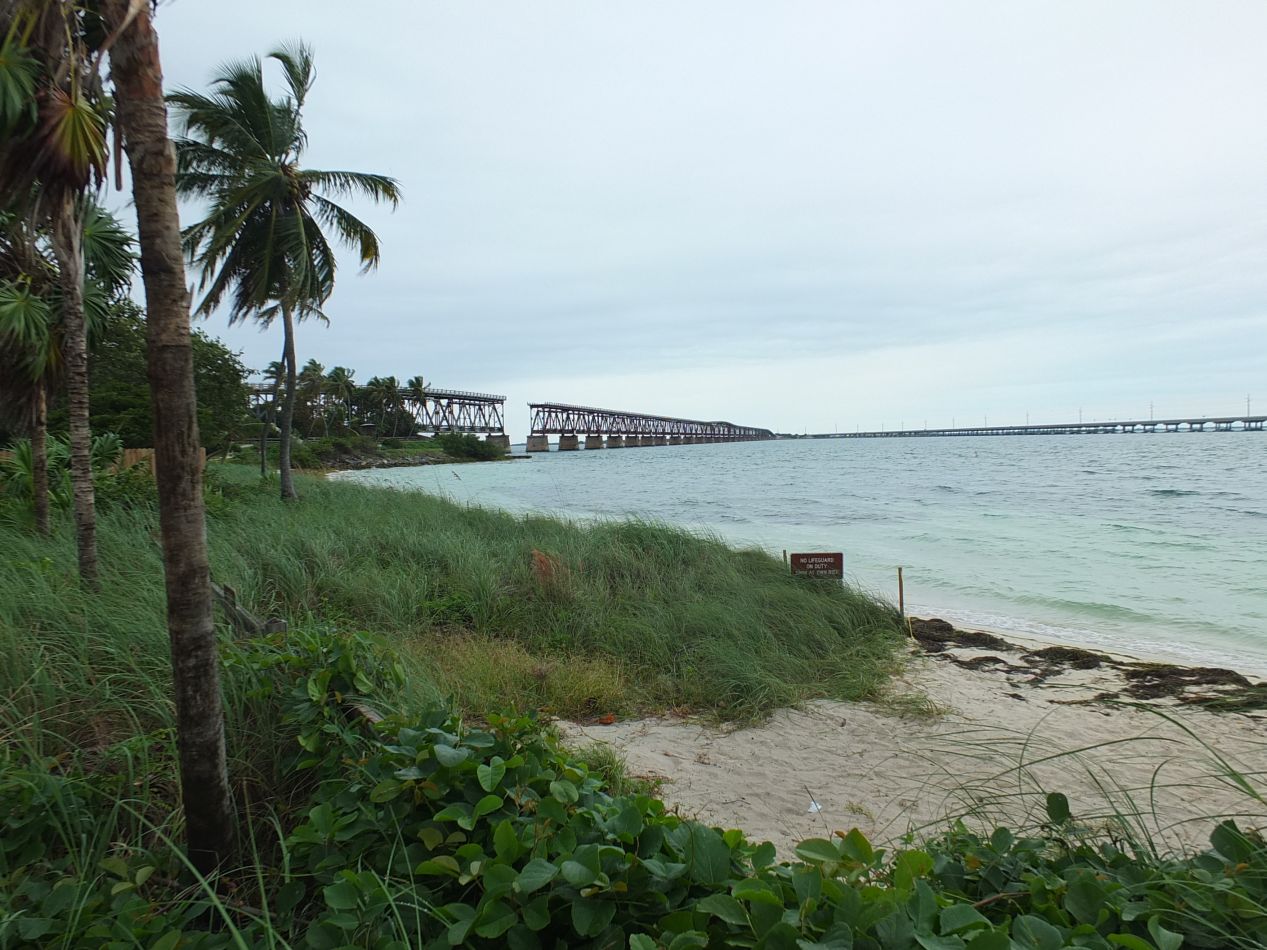
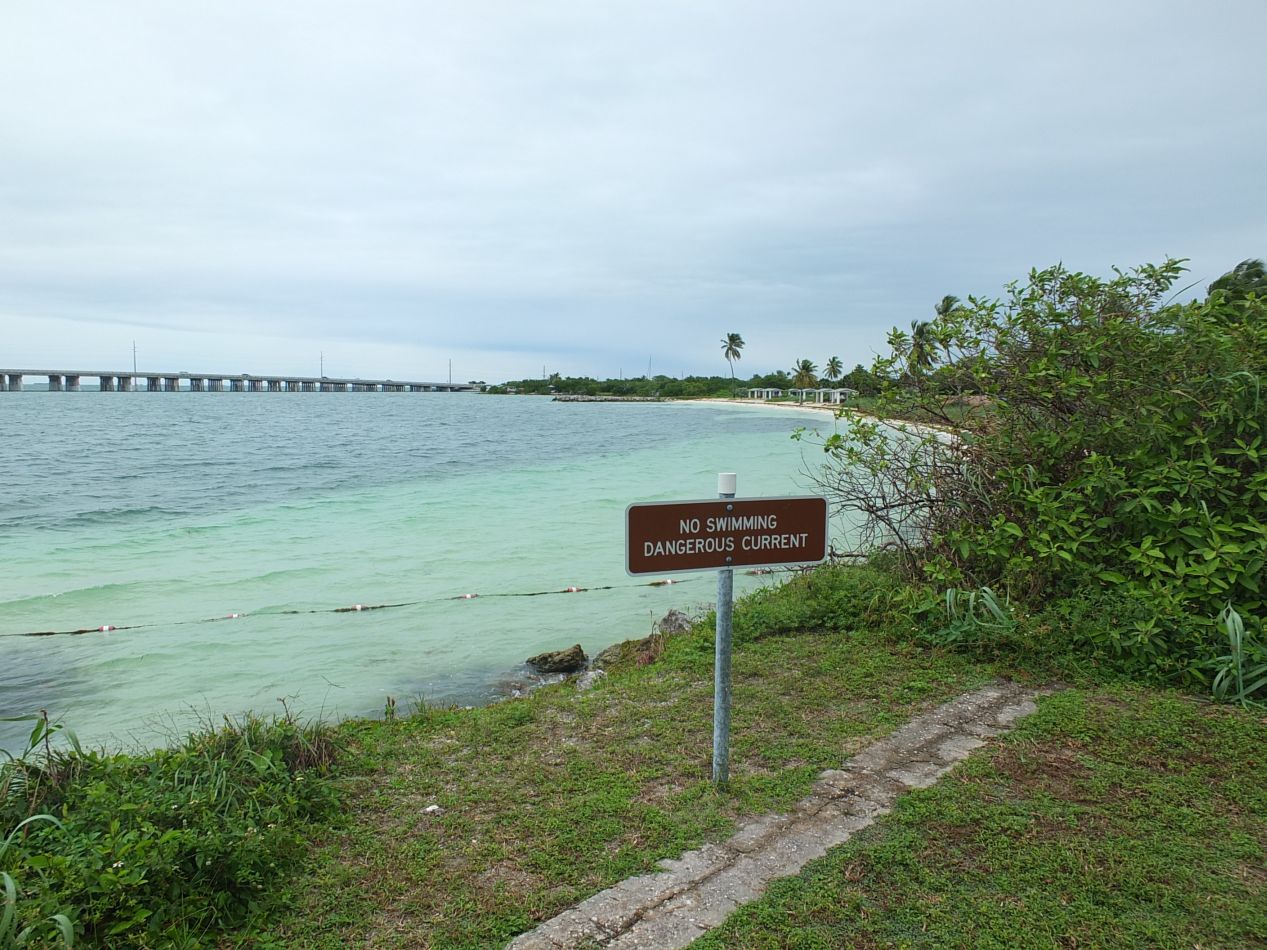
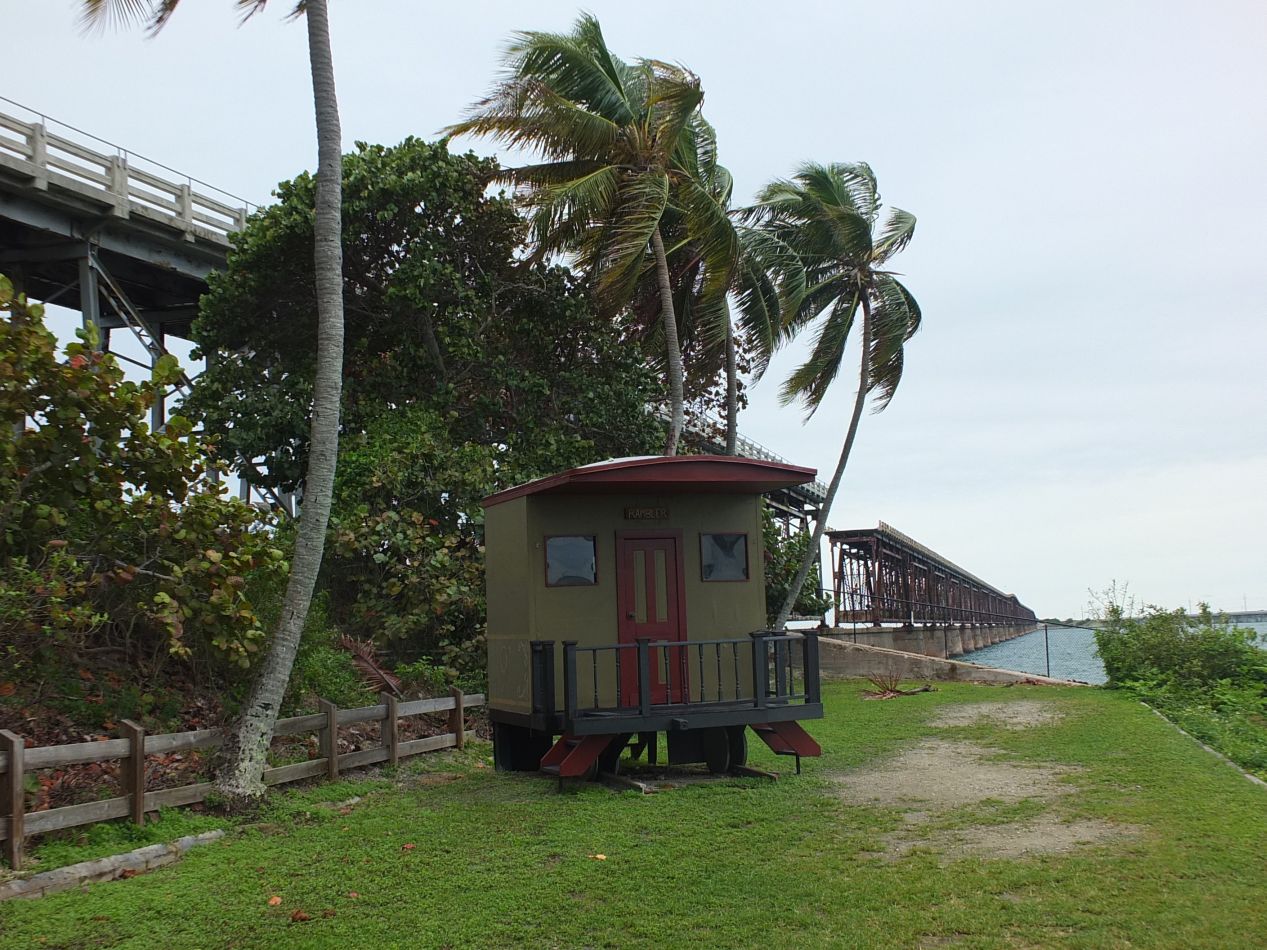
Bahia Honda Key is only a couple of hundred feet wide, and it was narrow enough that I could walk from the southern side to the northern side in a minute or two. The northern edge of the island had the more interesting sights, a larger swimming area known as Calusa Beach as well as a small marina for boats to dock. The Overseas Highway was easily visible as it ran across the water towards the next key in the chain. There was also this little hut on wheels with the word "Rambler" written above the door. I suspect that this little vehicle sells something in the summer months of the year, maybe a place to get something to eat or drink? It was closed up tight today.
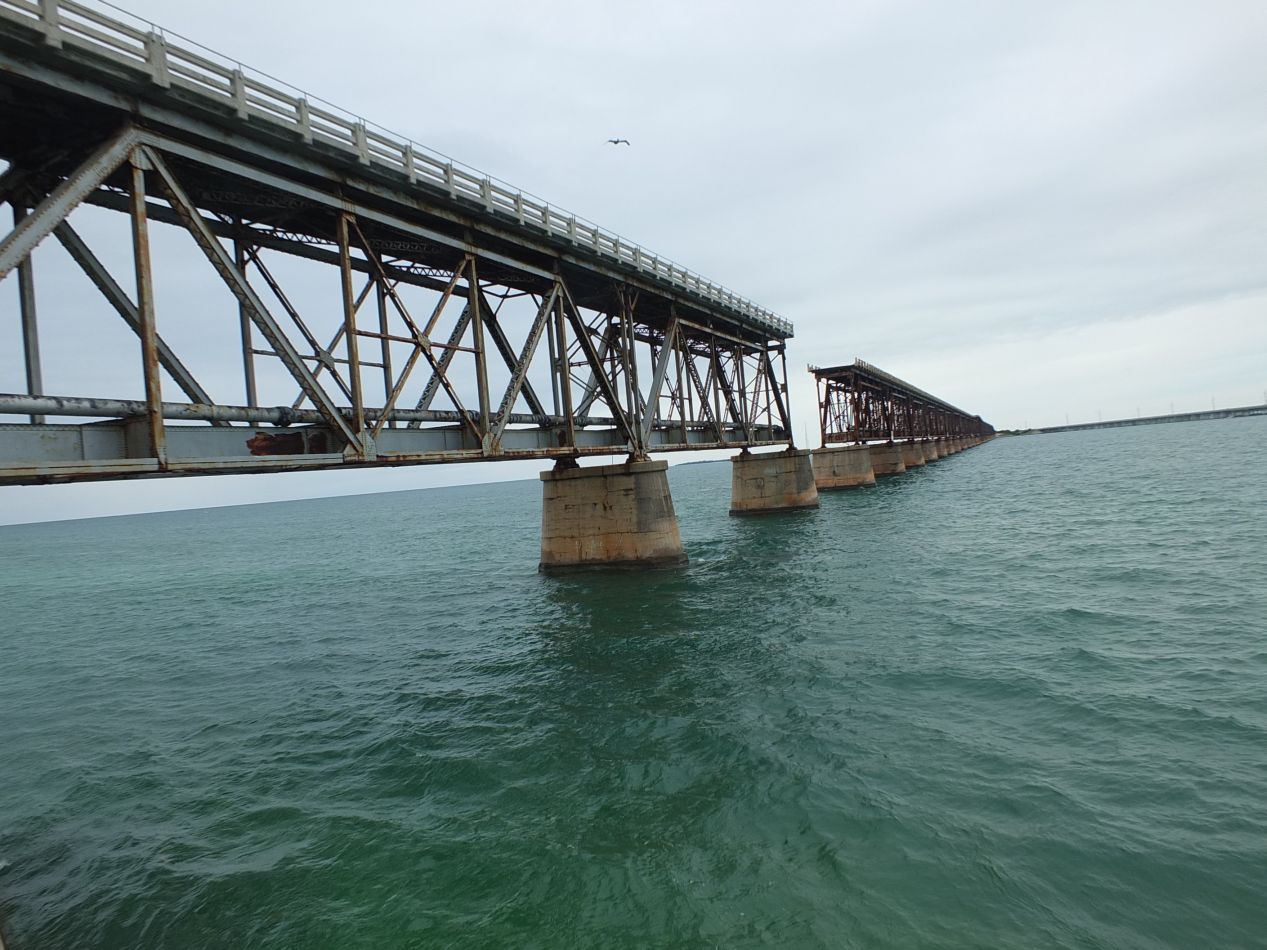
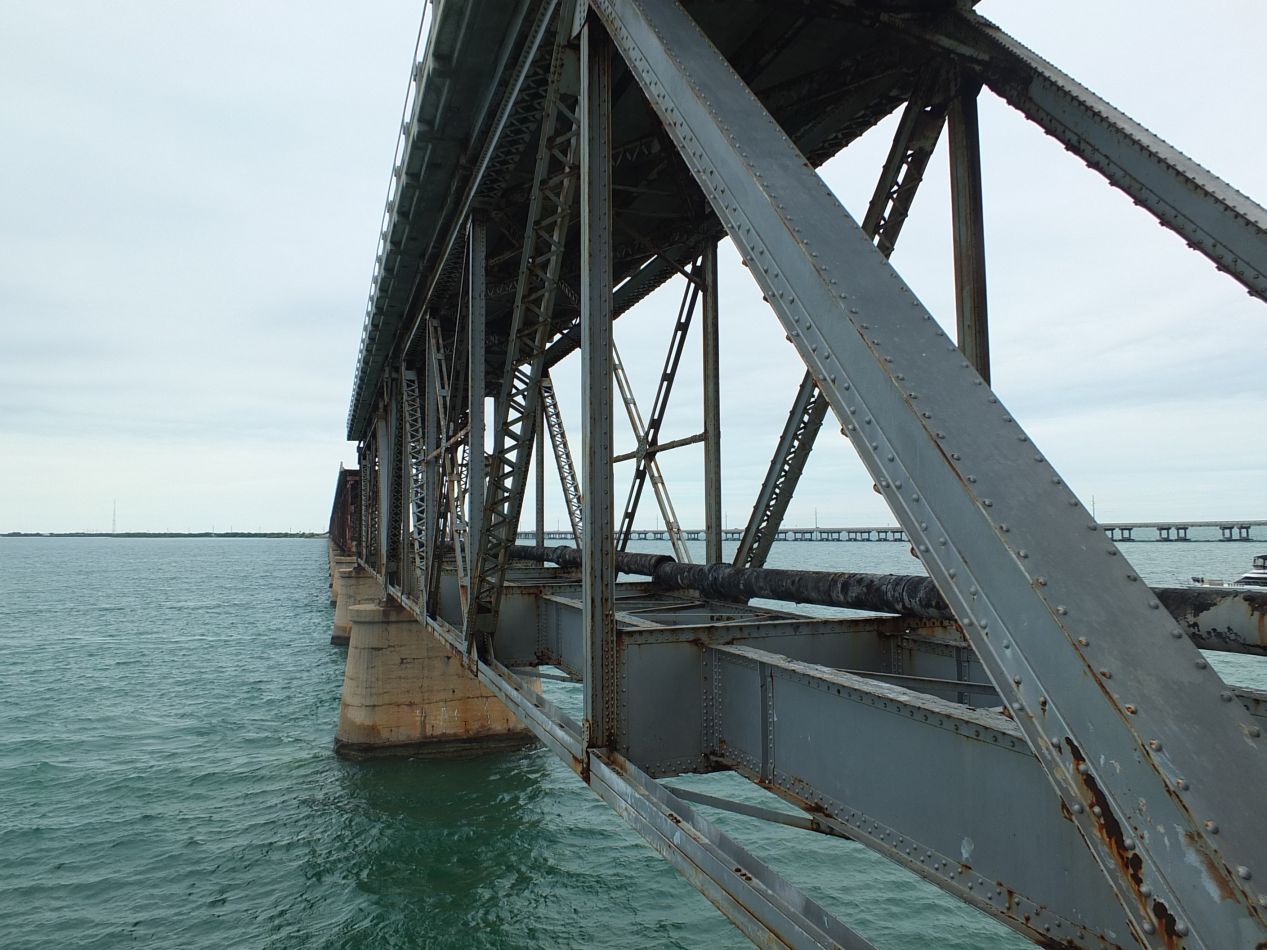
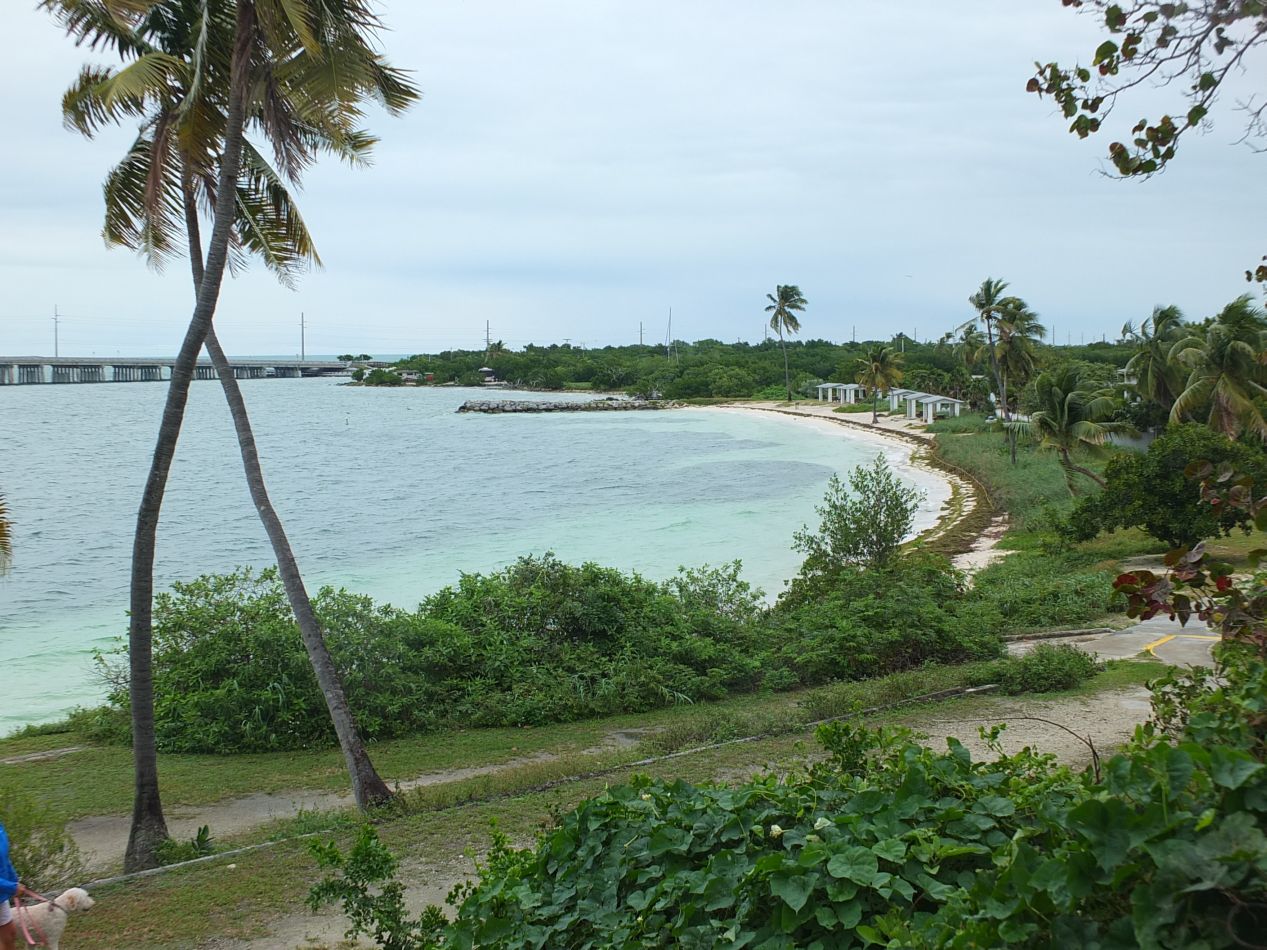
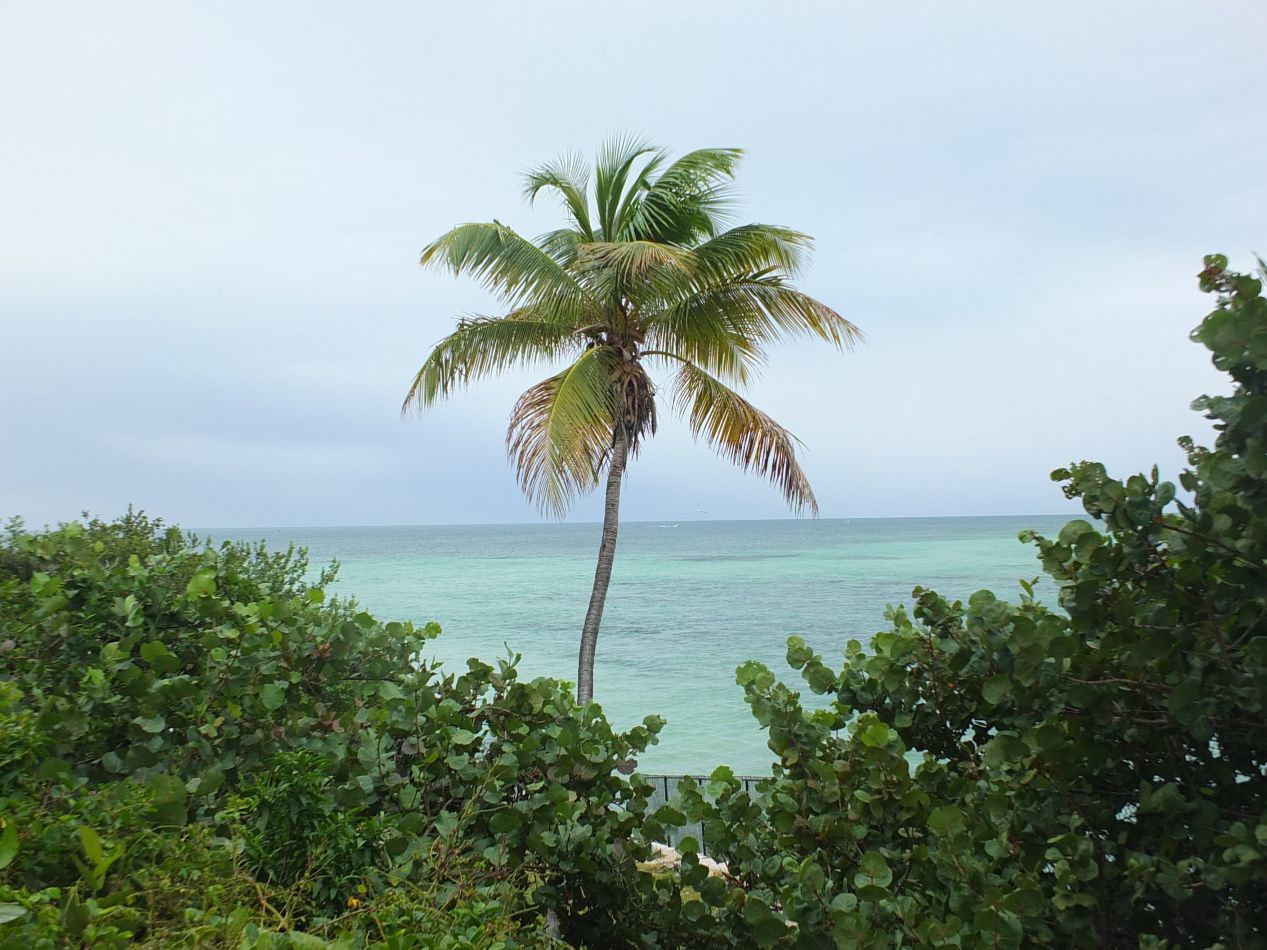
A walking path on the island led right up to the base of the old railroad bridge. Back before any road was built connecting the Keys, there was a railroad running between them constructed by Henry Flagler in 1912. It ran from southern Florida out to Key West, but it was destroyed in the terrible Category 5 hurricane that hit the Keys on Labor Day in 1935 and was not rebuilt afterwards. Bahia Honda is one of the places to see the remnants of the railroad bridge, which is mostly standing with some pieces missing in places. It's a silent testimony to the difficult natural hazards needed to establish transportation links this far out in the waters of the Gulf of Mexico. The land where the railroad bridge reached Bahia Honda Key was slightly elevated and provided a good place for views of the rest of the island. I would love to come back here on a day when it wasn't overcast and I had more time available.
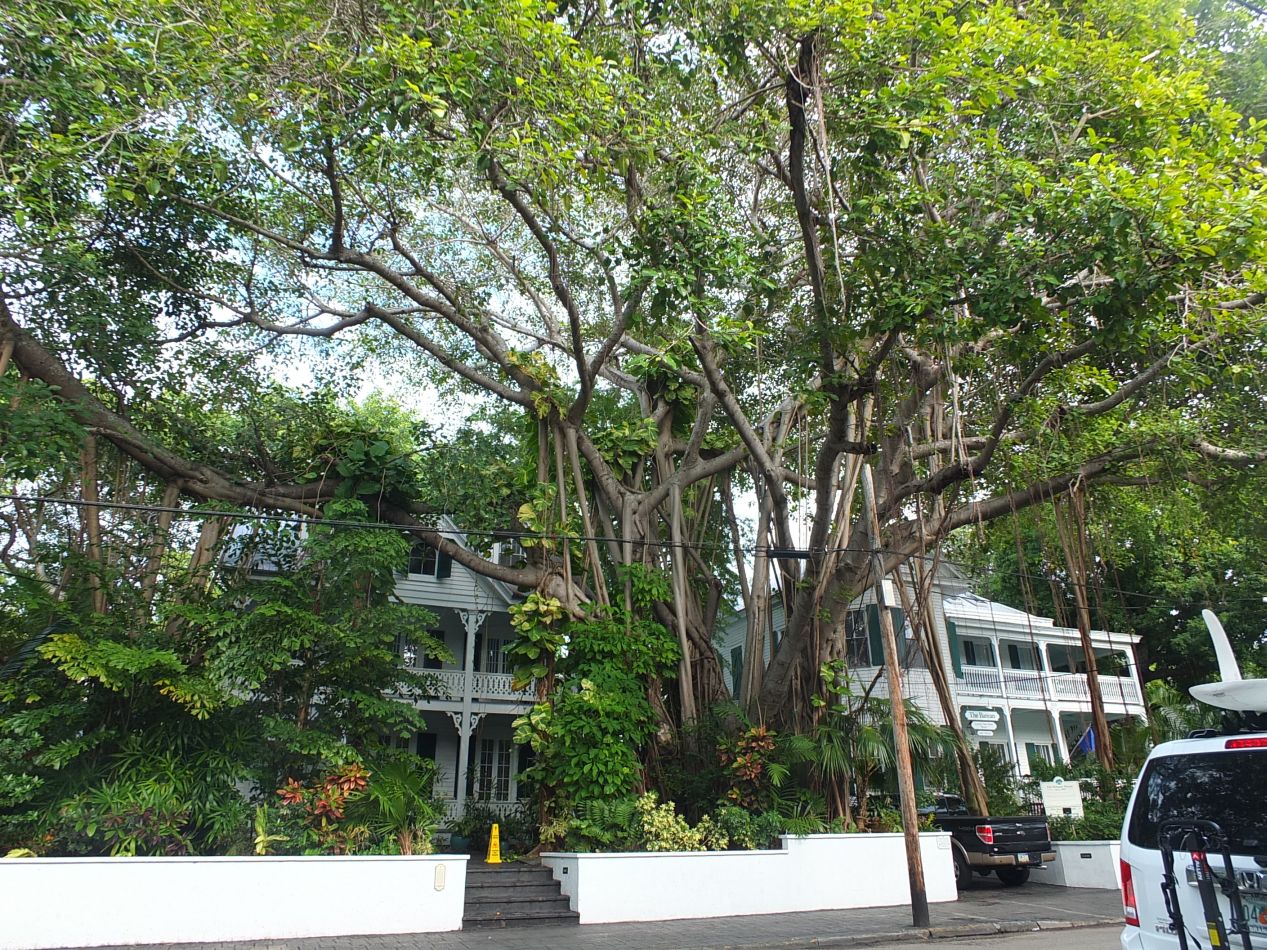
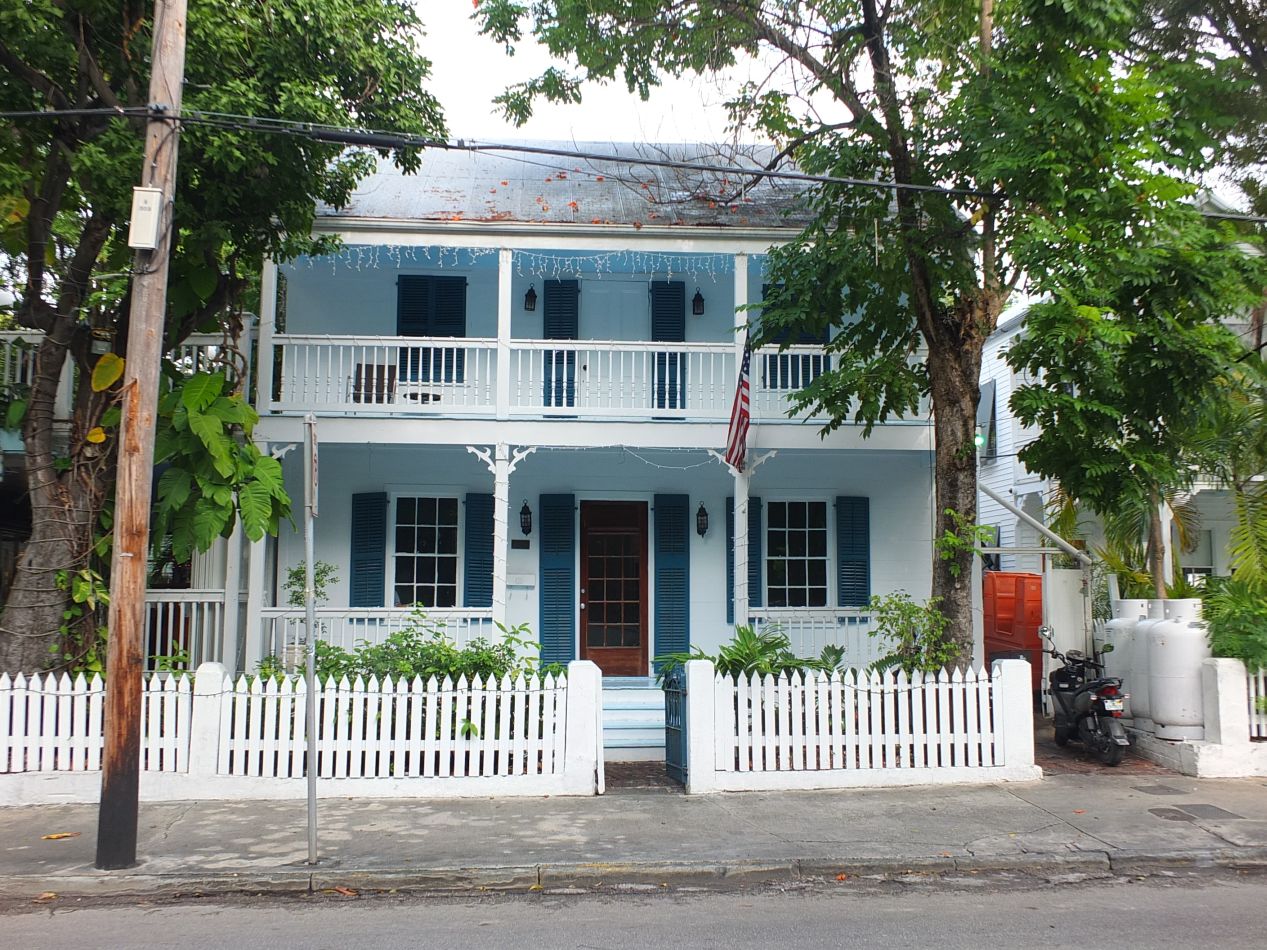
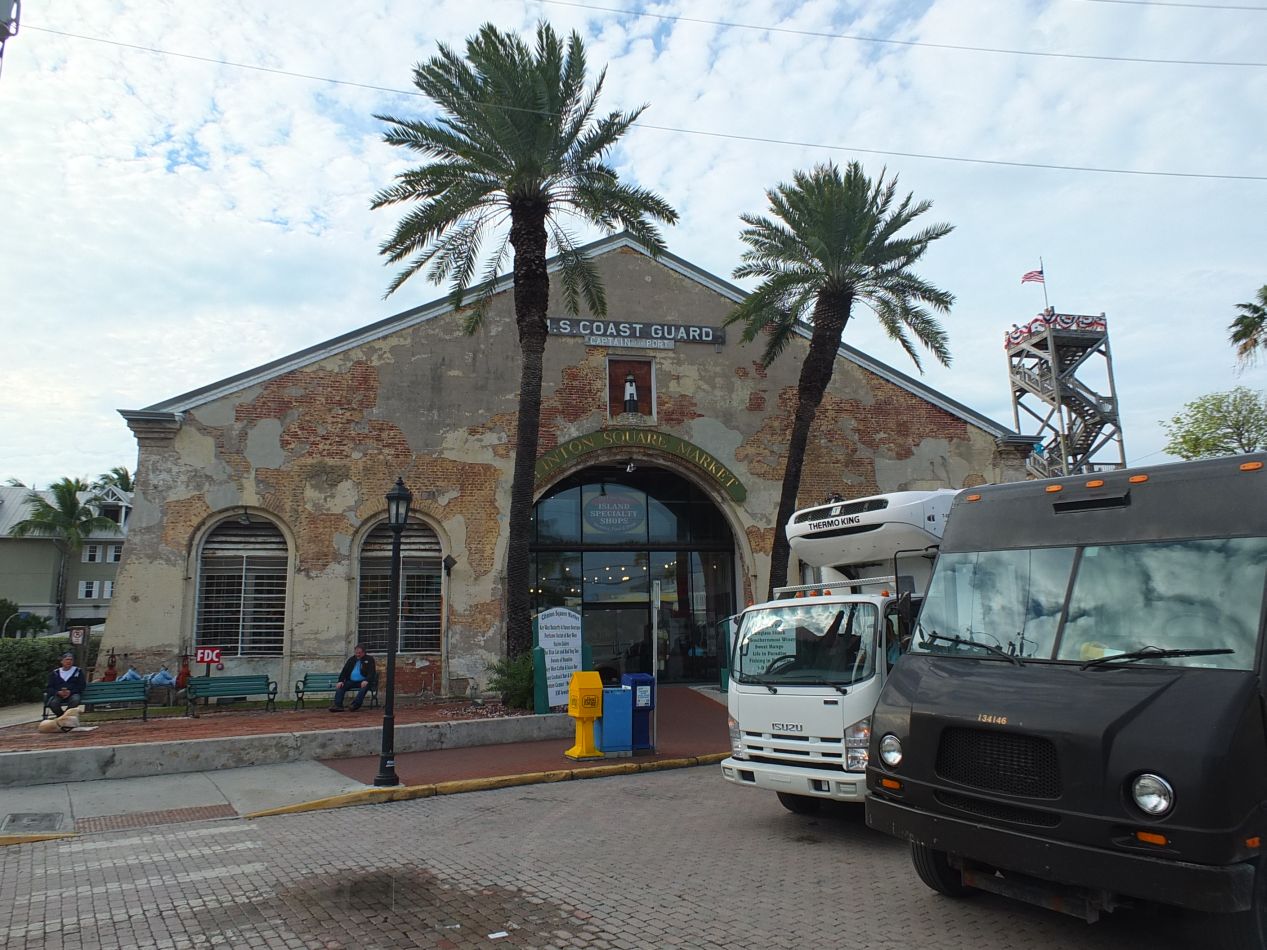
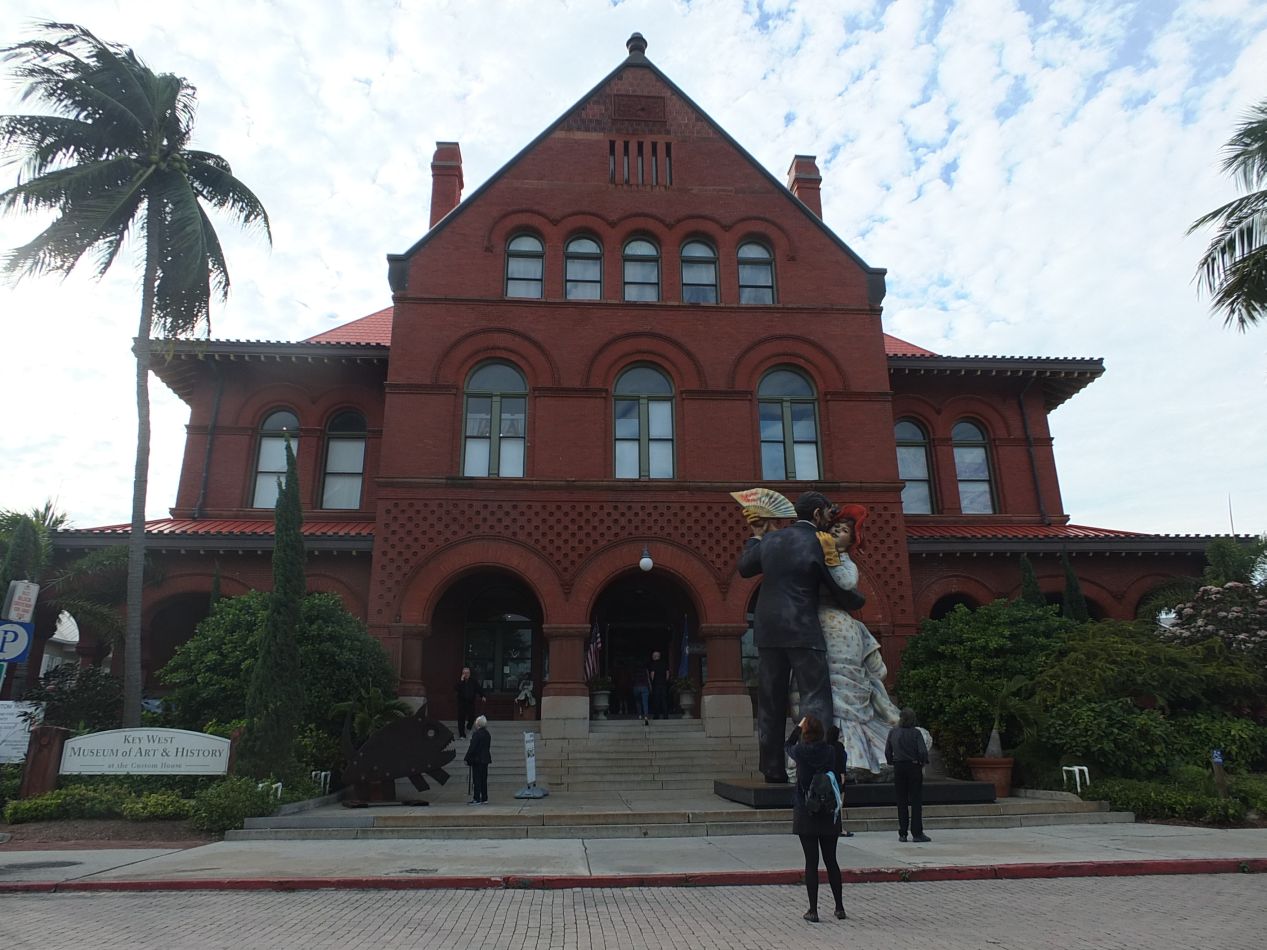
After a little less than an hour of further driving, I arrived in Key West itself. This town is the home to more than a third of the population of the Keys although it's still relatively small with only about 25,000 permanent residents. It was already midafternoon by the time that I arrived, and I planned to limit myself to two hours of sightseeing due to the need for the long return trip back to Miami. The first thing that struck me about Key West were the homes on display. There were many of these towering plantation-style dwellings to be found, often draped with flowering trees and vines. Key West has a tropical climate and the plant life here matches the permanently warm and wet climate. Other buildings in the public portions of the town showed evidence of the Spanish colonial style of architecture, in particular the former US Coast Guard building that had been converted into Clinton Square Market. That brick building would have been a perfect fit for the American Southwest.
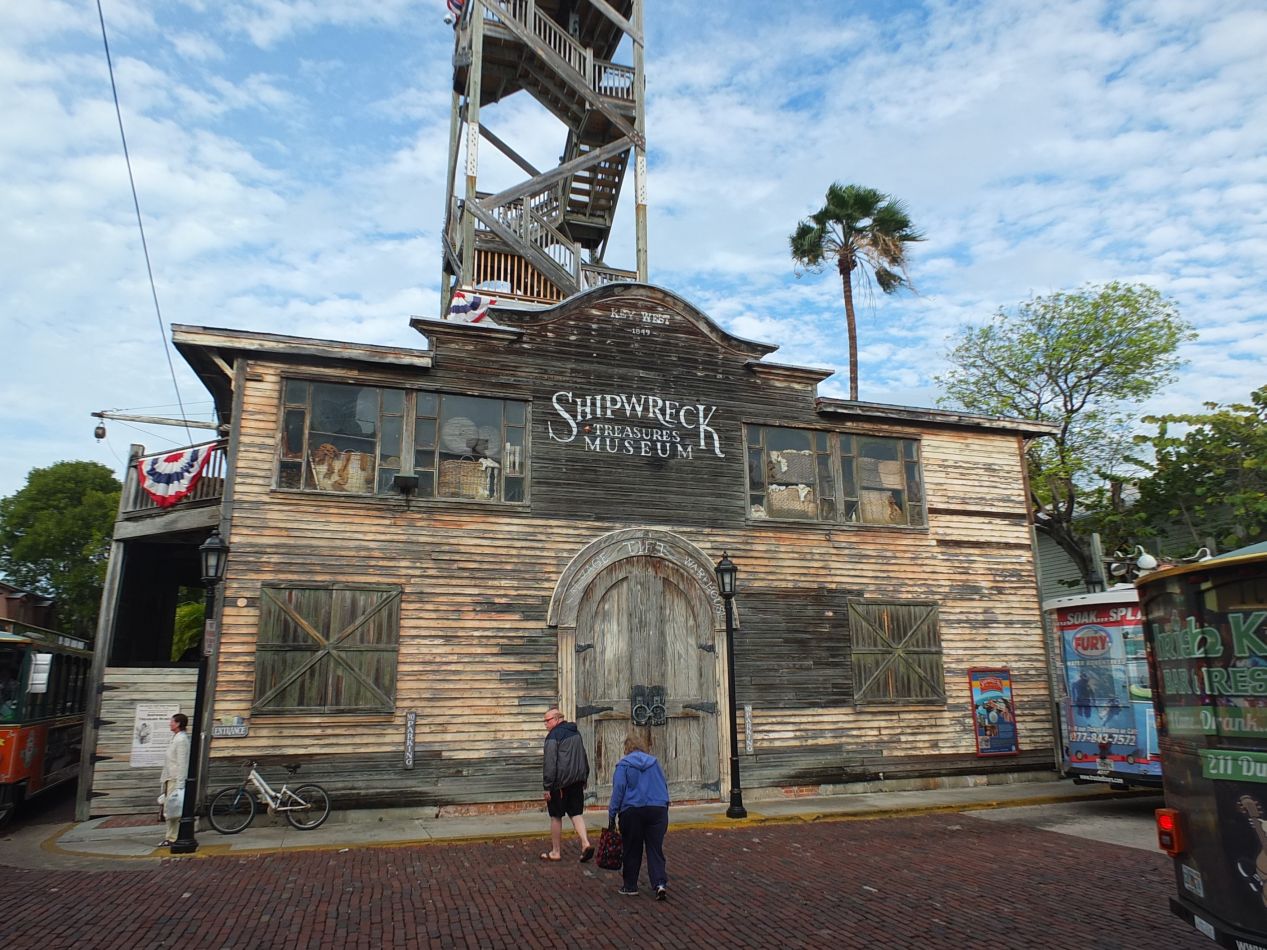
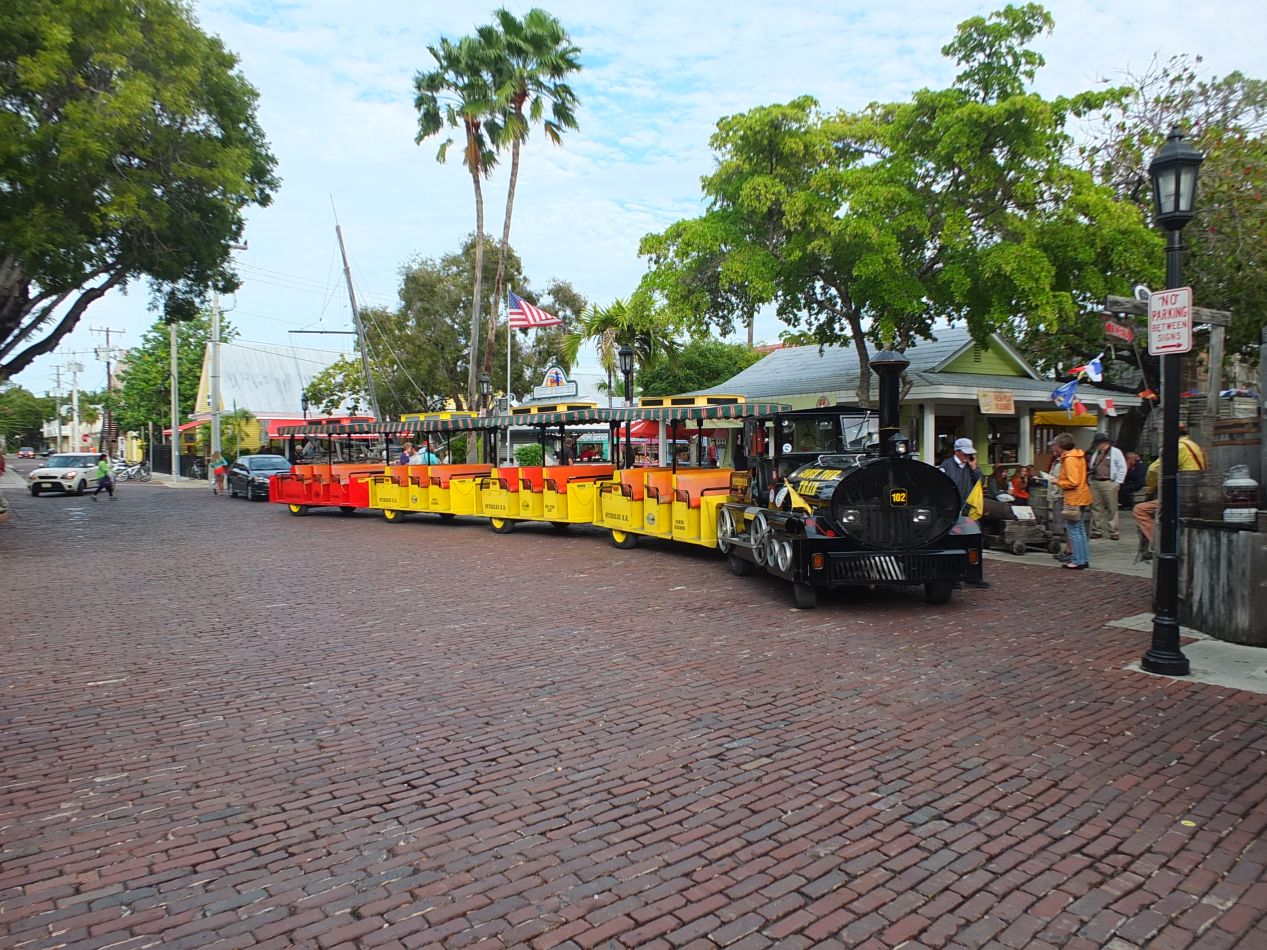
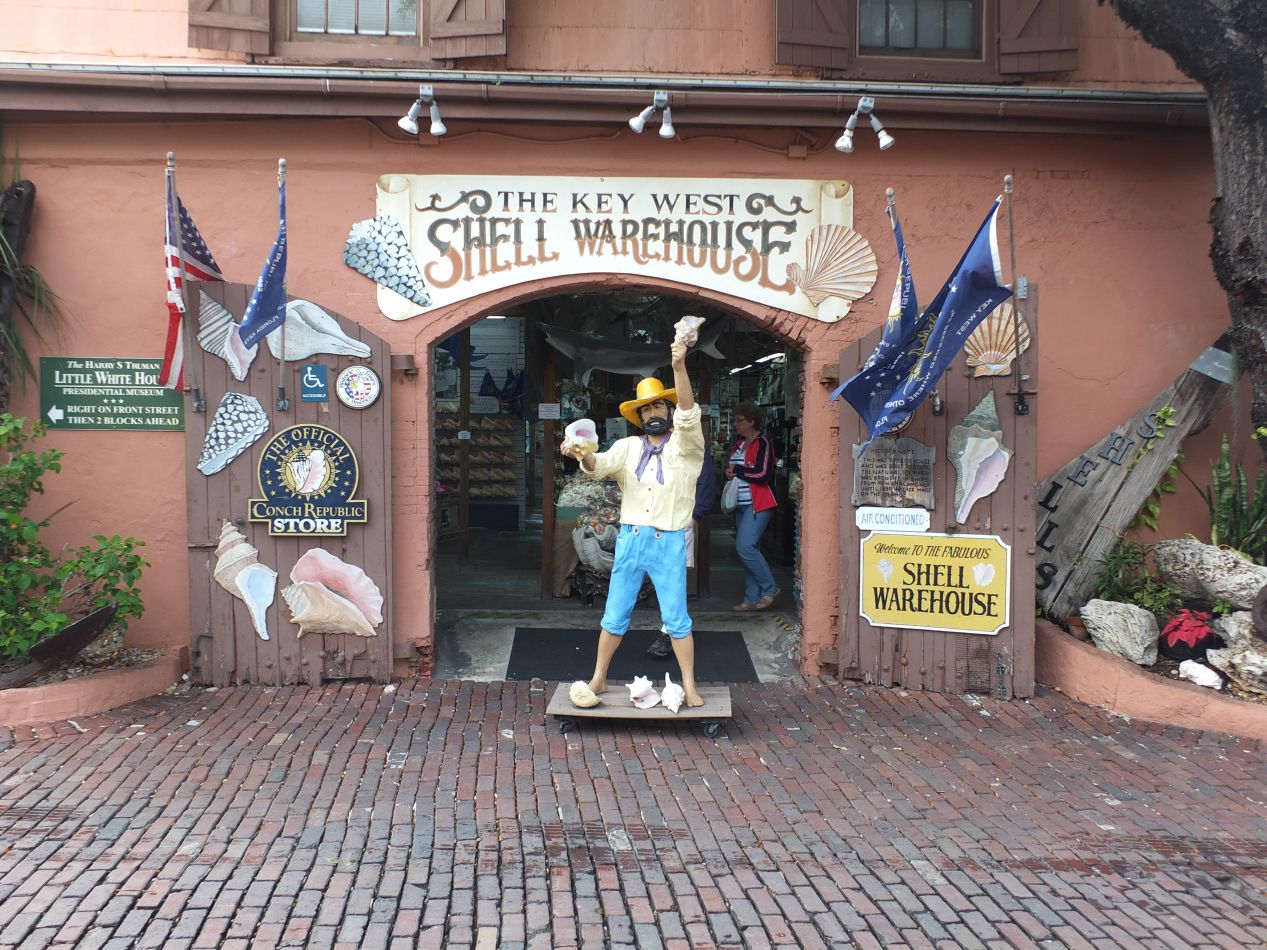
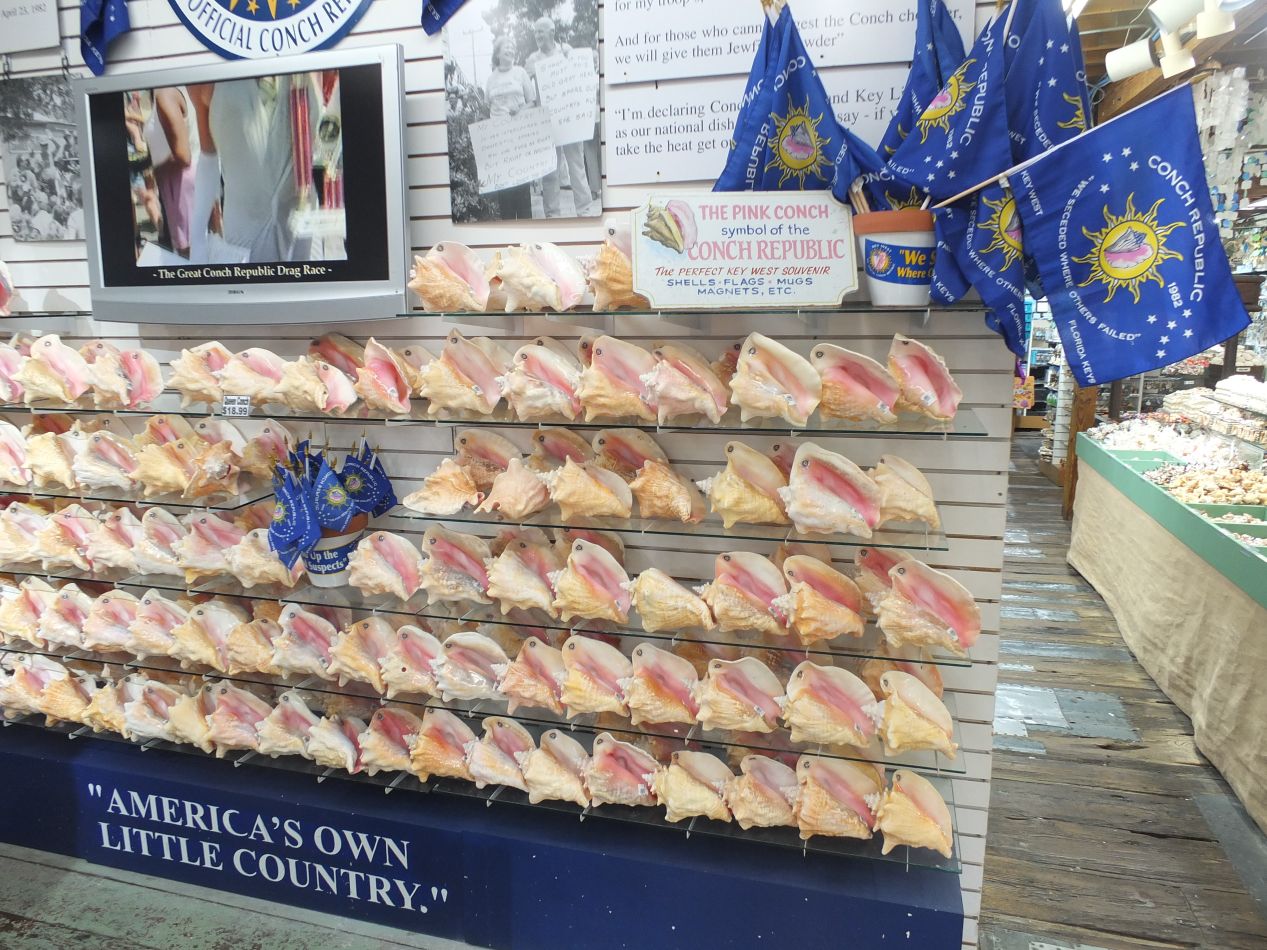
I soon made my way to the Old Town portion of Key West. This historic area at the western edge of the town is home to a whole bunch of touristy stuff, lots of shops and restaurants and bars, that sort of thing. The little train pulling a series of cars is indicative of the type of attraction that can be found here. Some of the buildings in the Old Town date back more than a century, however, and it's still worthwhile to walk through the brick streets in this section of Key West. The Shell Warehouse store pictured above sold, well, all different types of shells that could be found in the Keys, which I might have considered purchasing if I'd had a way to get them home without breaking. It also advertised itself as the official store of the "Conch Republic", a reference to a protest stunt from 1982 when the city of Key West declared that it was seceding from the rest of the United States. This was in reference to a US Border Patrol blockade that had been set up on the main highway and was searching every car for illegal drugs and immigrants, which caused huge traffic jams and stifled the tourism-dependent city. The Conch Republic stunt drew enough publicity that it successfully managed to get the blockade removed, and merchandise advertising the Conch Republic has been a mainstay in Key West ever since.
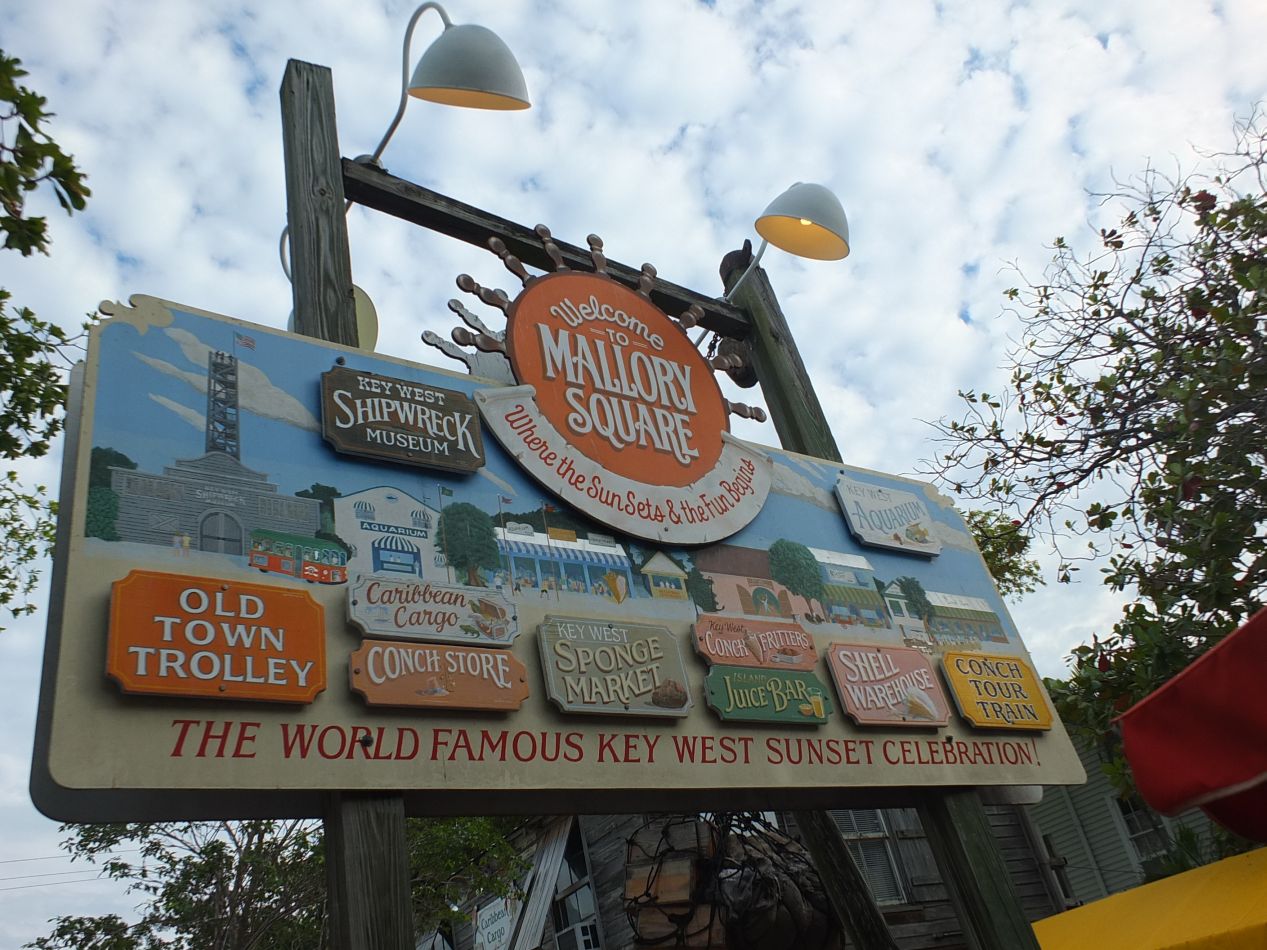
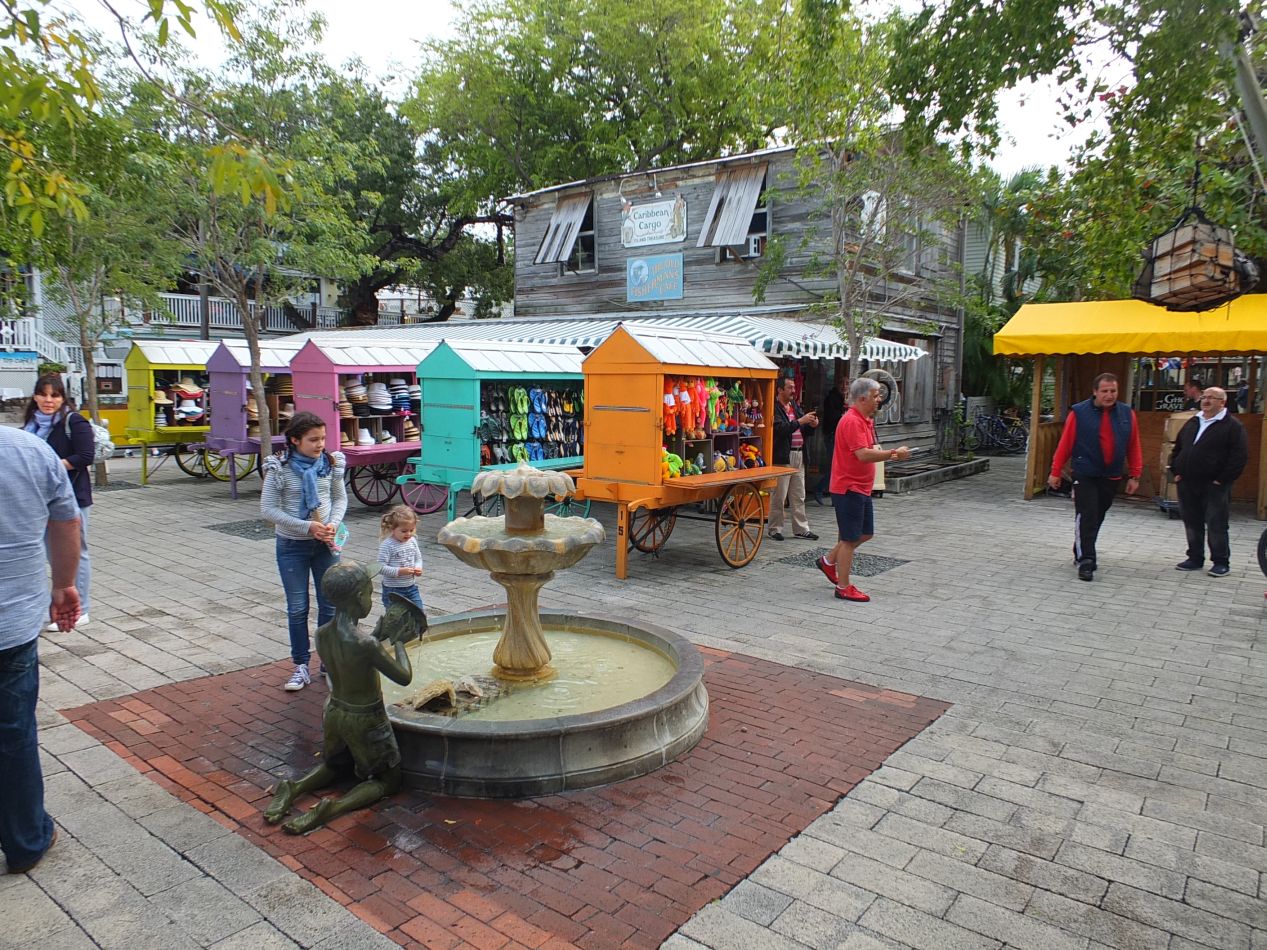
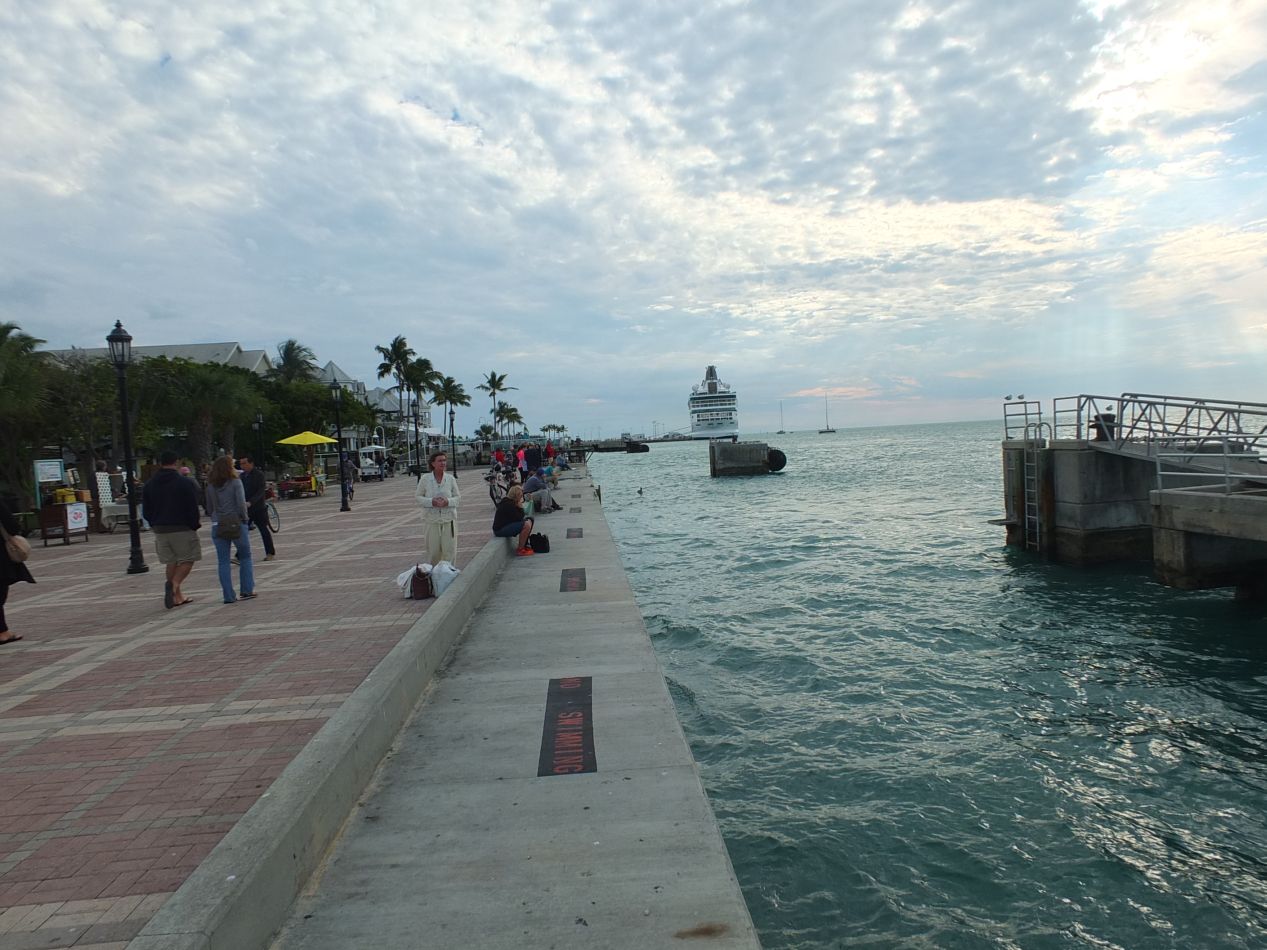
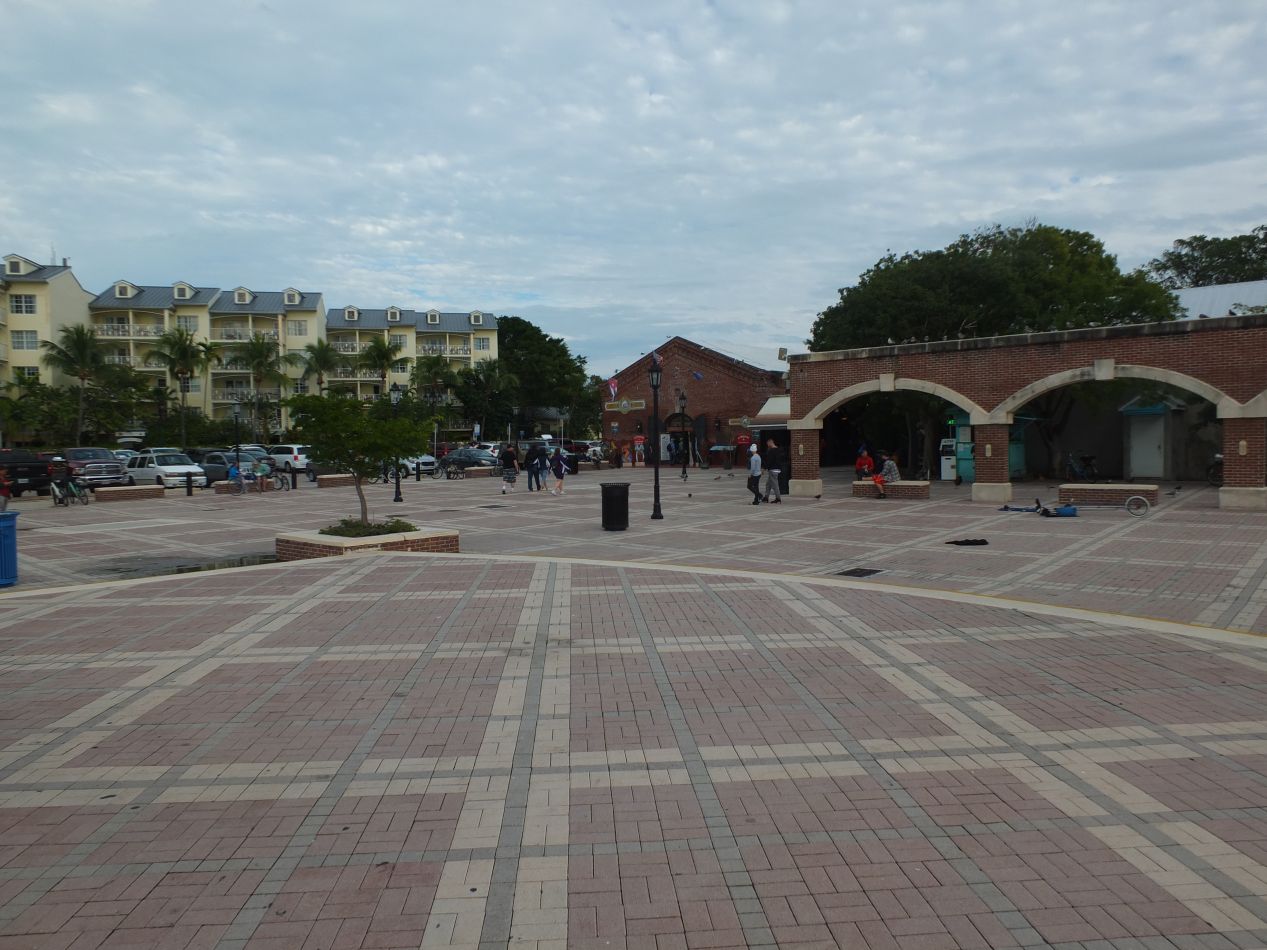
Mallory Square is a plaza located in the heart of the Old Town district of Key West. This place is known for hosting the "Sunset Celebration", where tourists arrive each evening to watch the sun set over the waters of the harbor immediately to the west of the square. The festivities involve street performers, food vendors, and (as always for Key West) lots of drinking. There's actually a city ordinance that requires the cruise ships to leave the harbor for a few hours at sunset to avoid blocking the view. I was surprised at how small Mallory Square turned out to be, and it was full of mobile vending stands that could be carted away each day. I would not be able to stay for the Sunset Celebration, unfortunately, and with the weather it wasn't a particularly good day for the spectacle anyway. I did walk over to the waterfront nearby where I spotted one cruise ship off in the distance. Cruises have become a major way that people visit Key West in recent years, although most still drive down along the Overseas Highway. This was the busiest area that I visited, with lots of pedestrians walking around and checking out the sights.
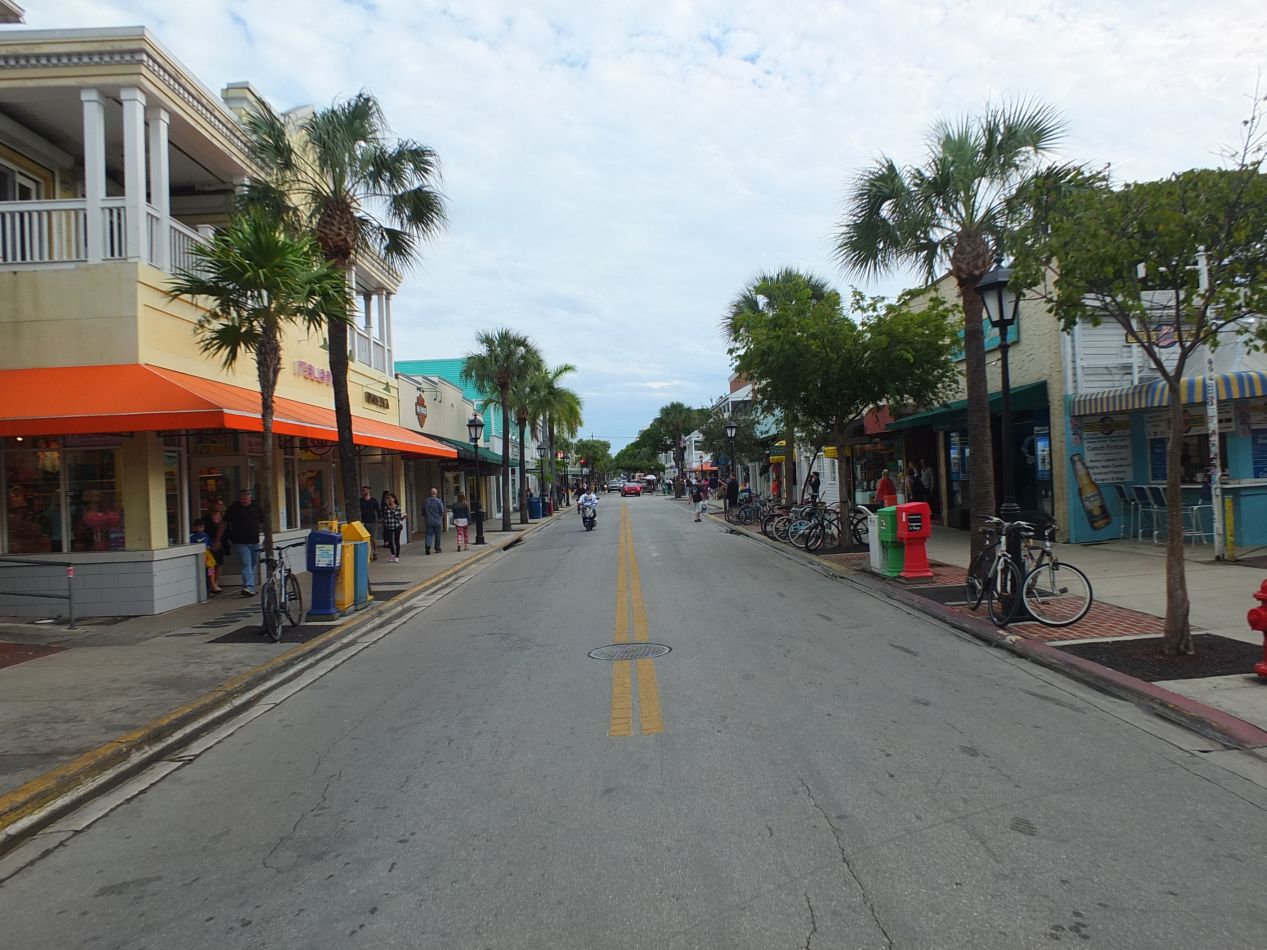
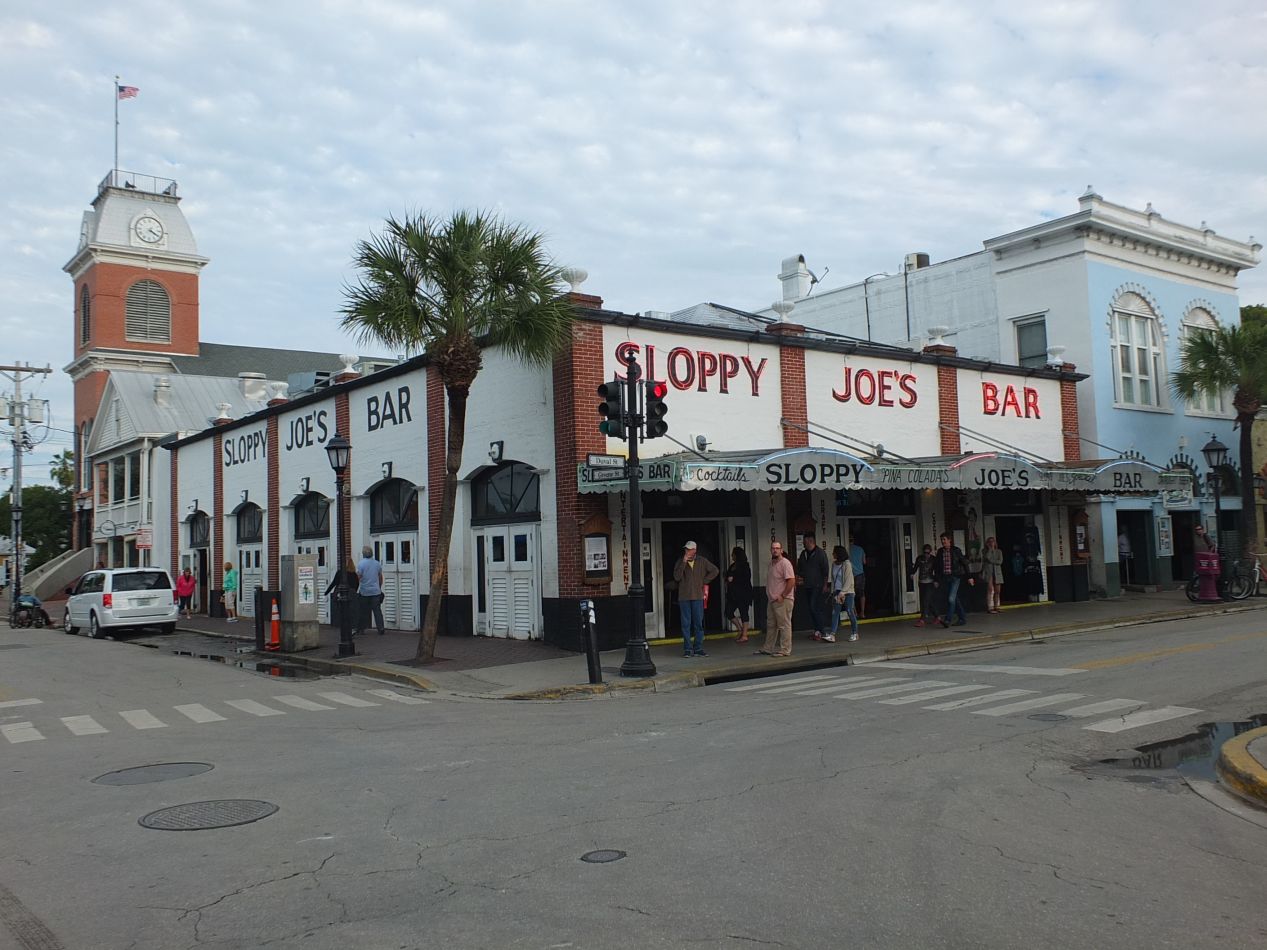
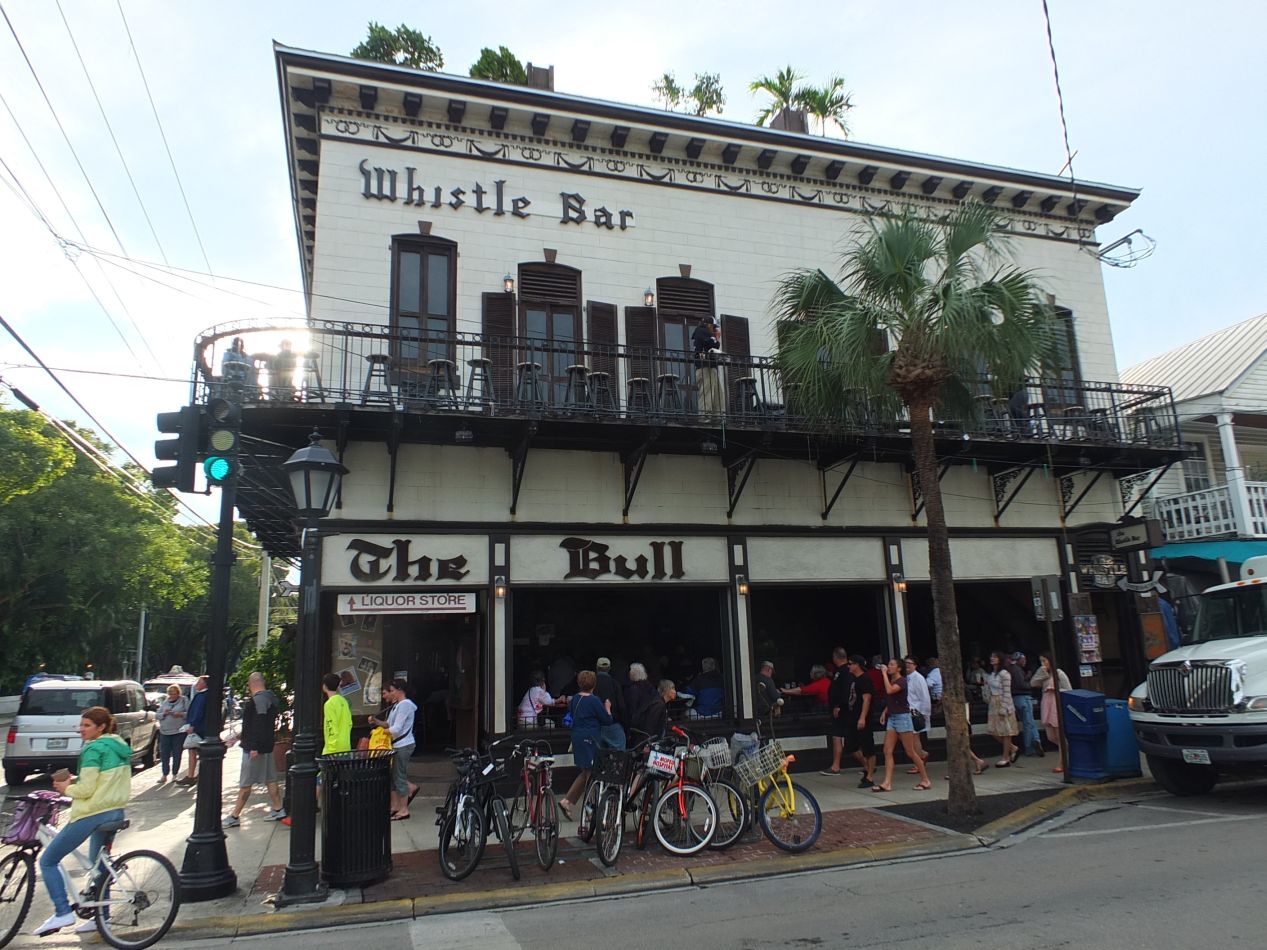
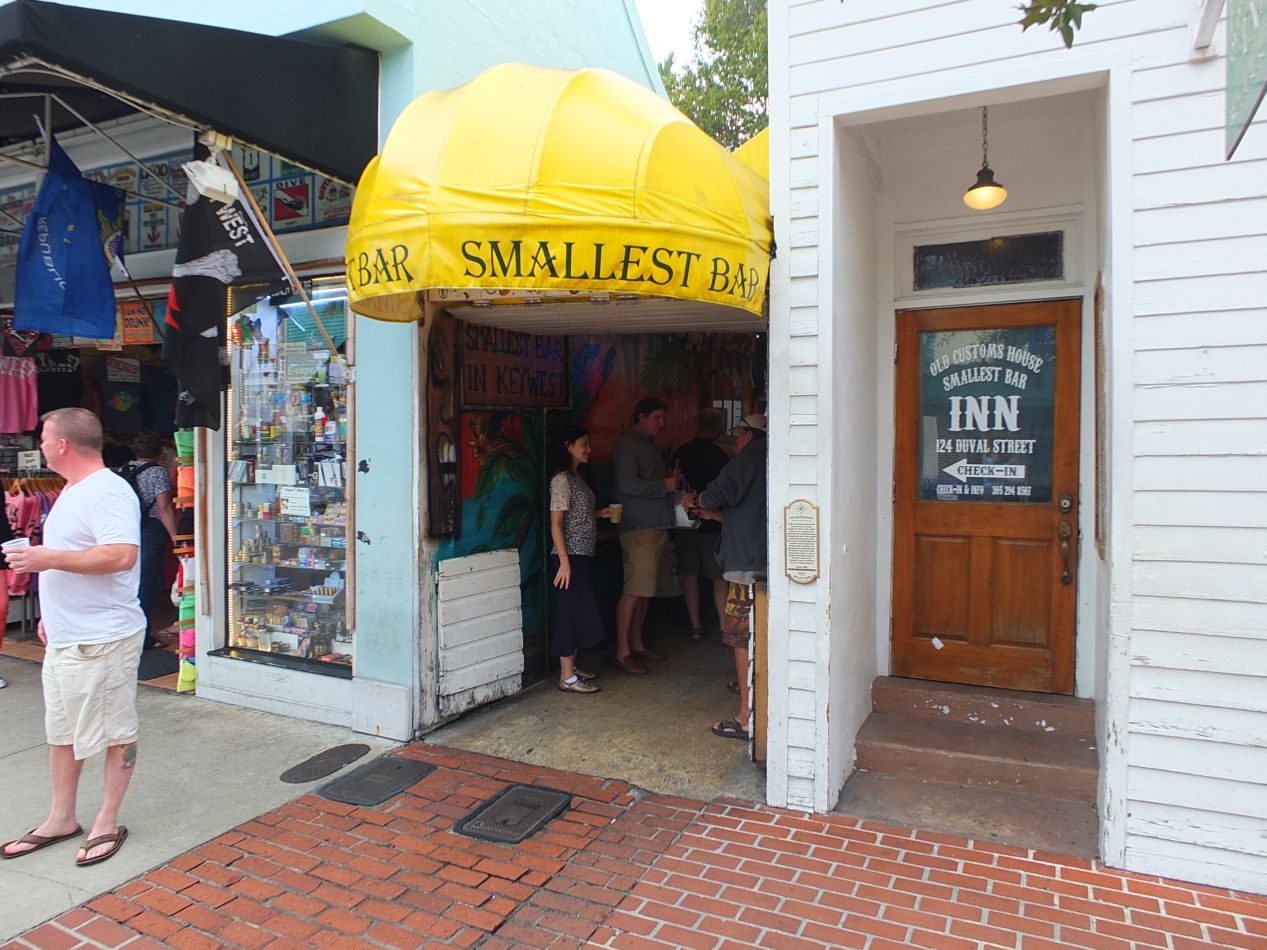
Leading away from Mallory Square is this road known as Duval Street. The northern end of Duval Street is the most touristed part of Key West and contains a long string of infamous bars running in succession. Key West is known for its reputation as a party town, and this is where the celebrating takes place as visitors pub crawl from one bar to the next. I'll admit that I did enjoy the "Smallest Bar in Key West" squeezed into a cubbyhole between two different buildings. Outside of the watering holes, there are more restaurants and hotels here that cater to the tourist need for food and lodging. One nice thing about Duval Street is that there are few large chain stores here; most of the retail outlets on display are locally owned and operated.
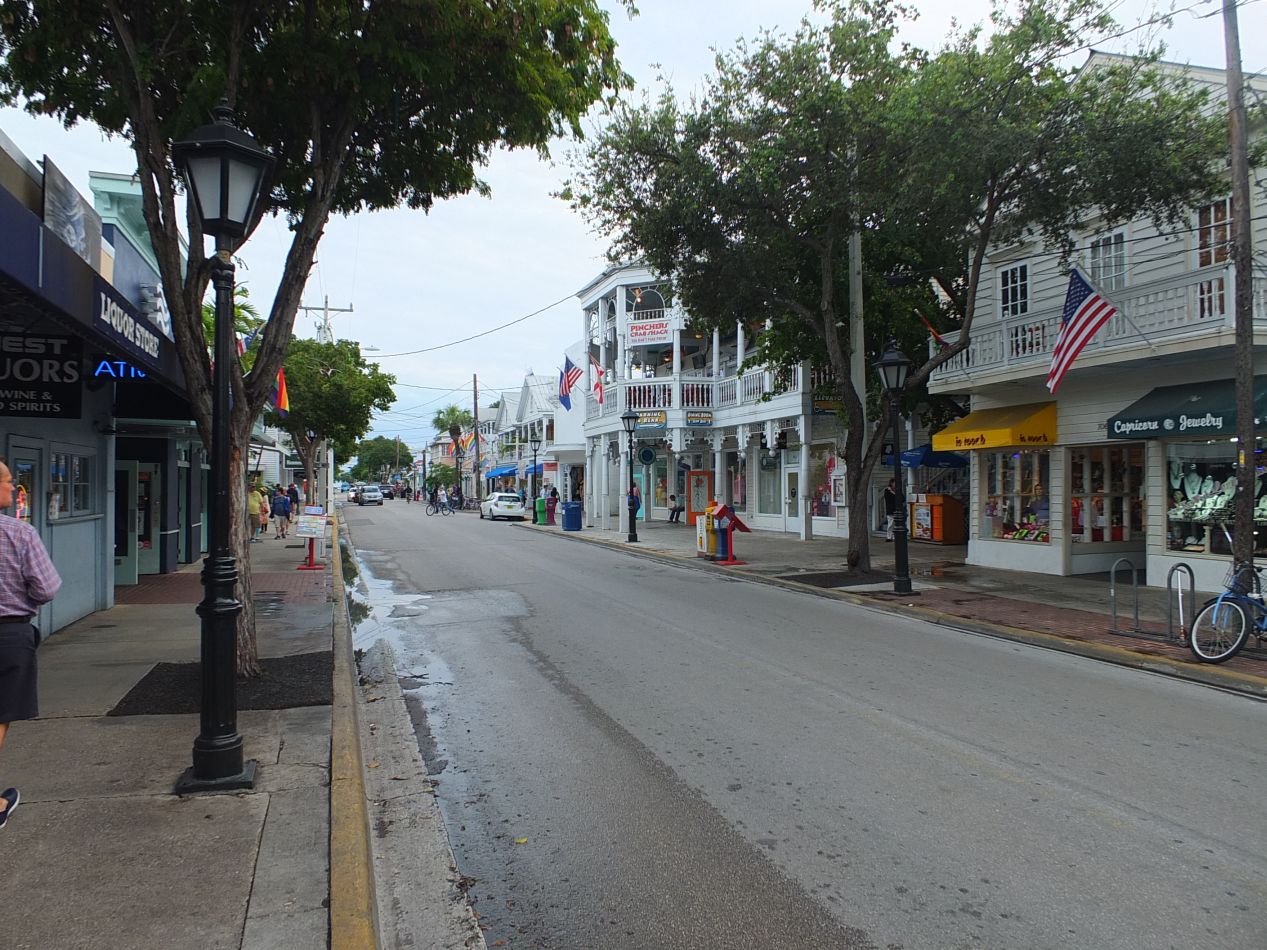
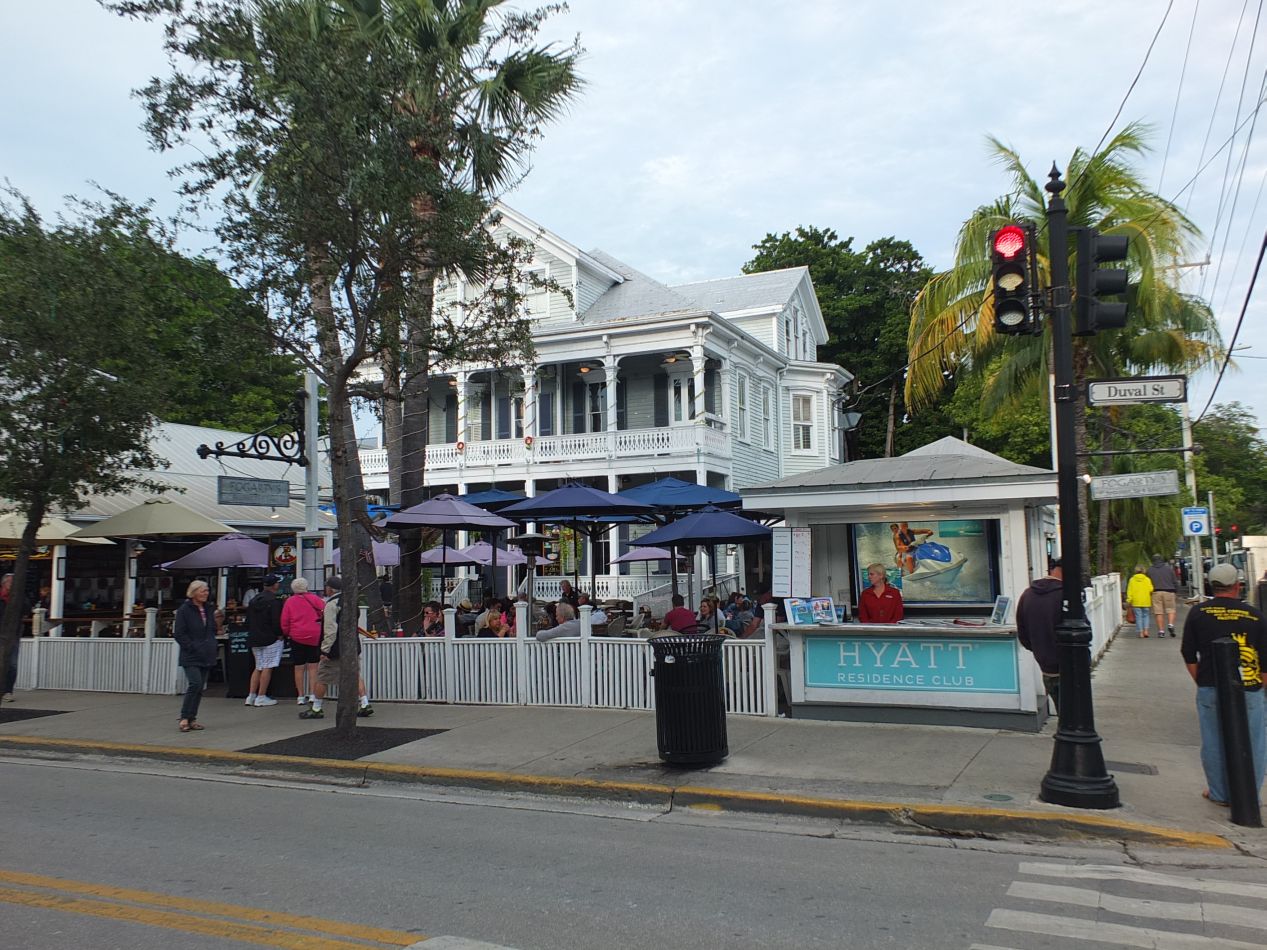
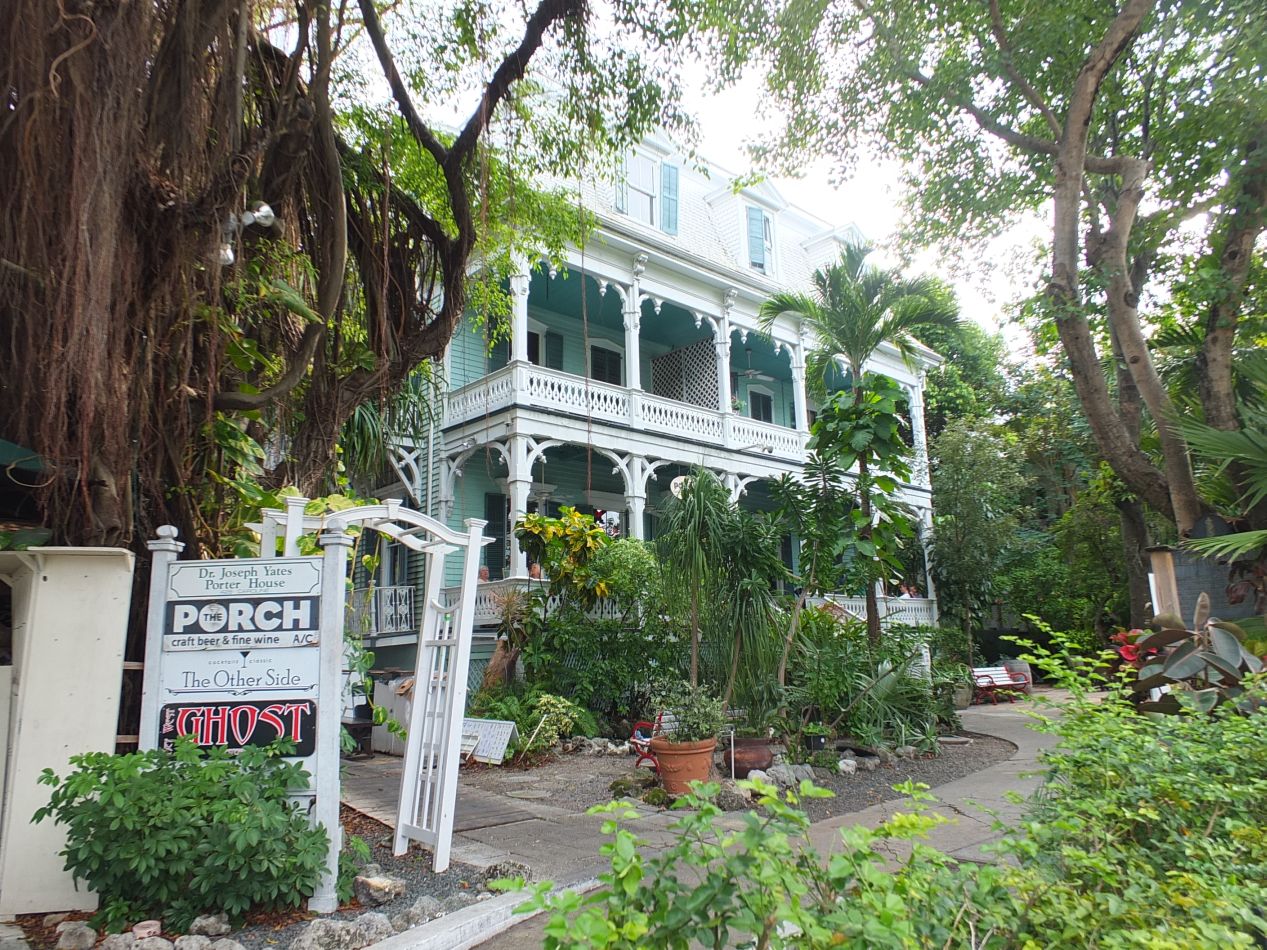
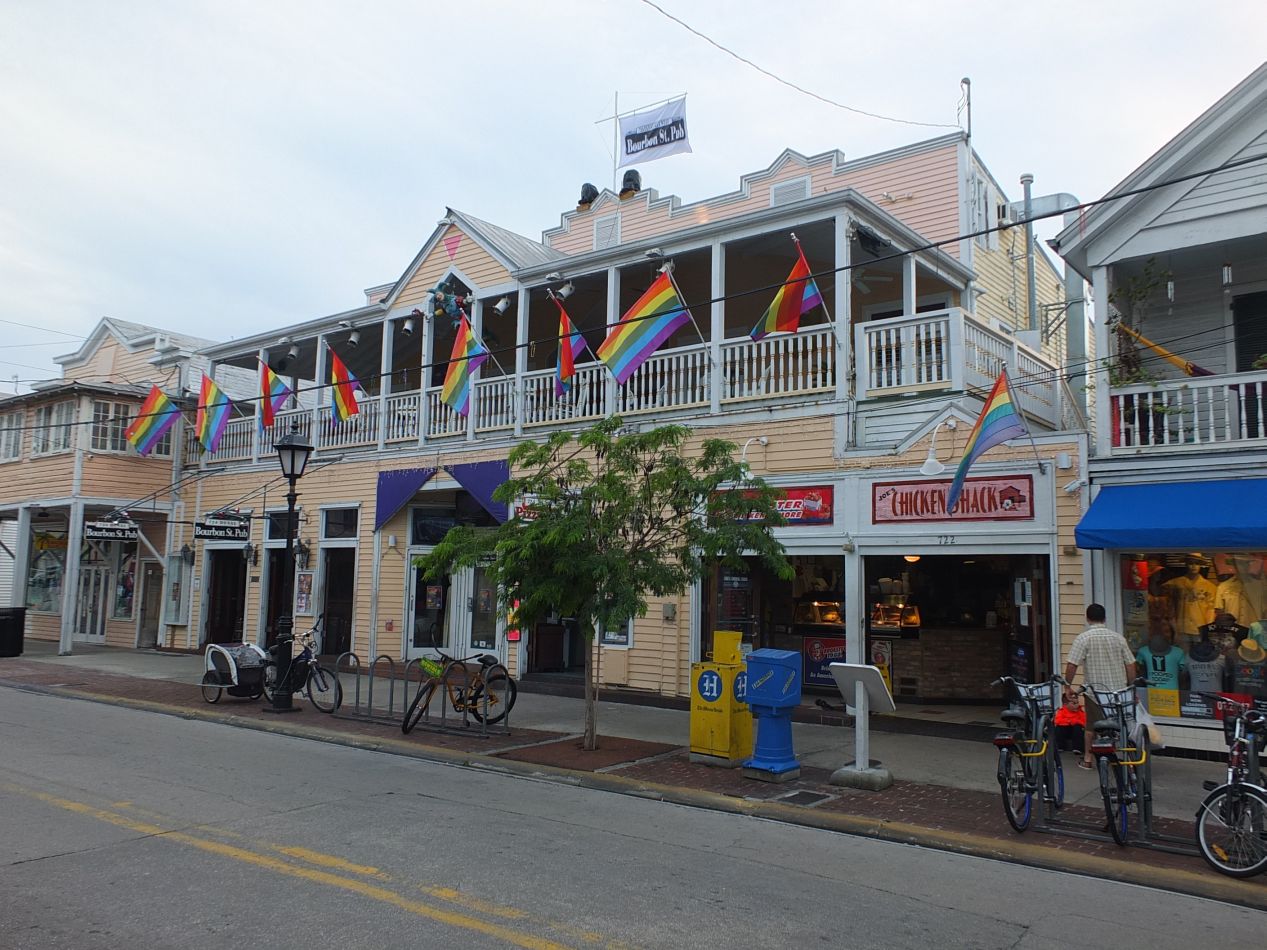
Along with all of the bars, there are a number of historic homes along Duval Street that have been preserved and repurposed for contemporary use. Several of the huge Victorian era mansions have been turned into hotels or bed and breakfasts. I was reminded of some of the architecture on display in the old parts of New Orleans, only the climate here in Key West was even more tropical. Moss grew on the sides of buildings and long vines dangled down from the treetops. These houses felt a bit like colonial outposts in the middle of some exotic faraway destination. It also bears repeating that Key West has a long reputation of being one of the most gay-friendly cities in the United States, and there were plenty of rainbow flags on display throughout the town. In one place, the pedestrian crosswalk had even been painted on the street with rainbow colors which I thought was a nice gesture.
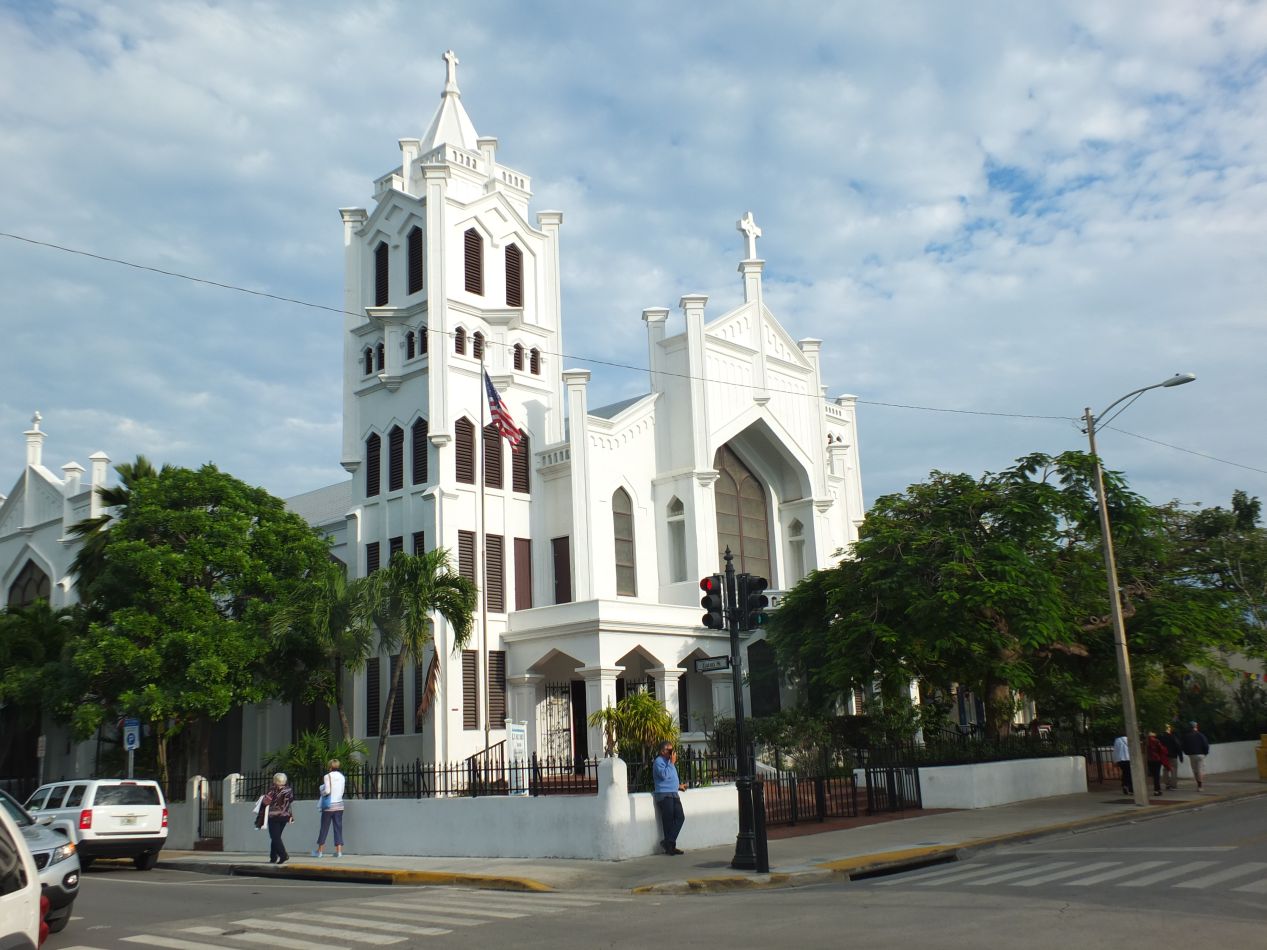
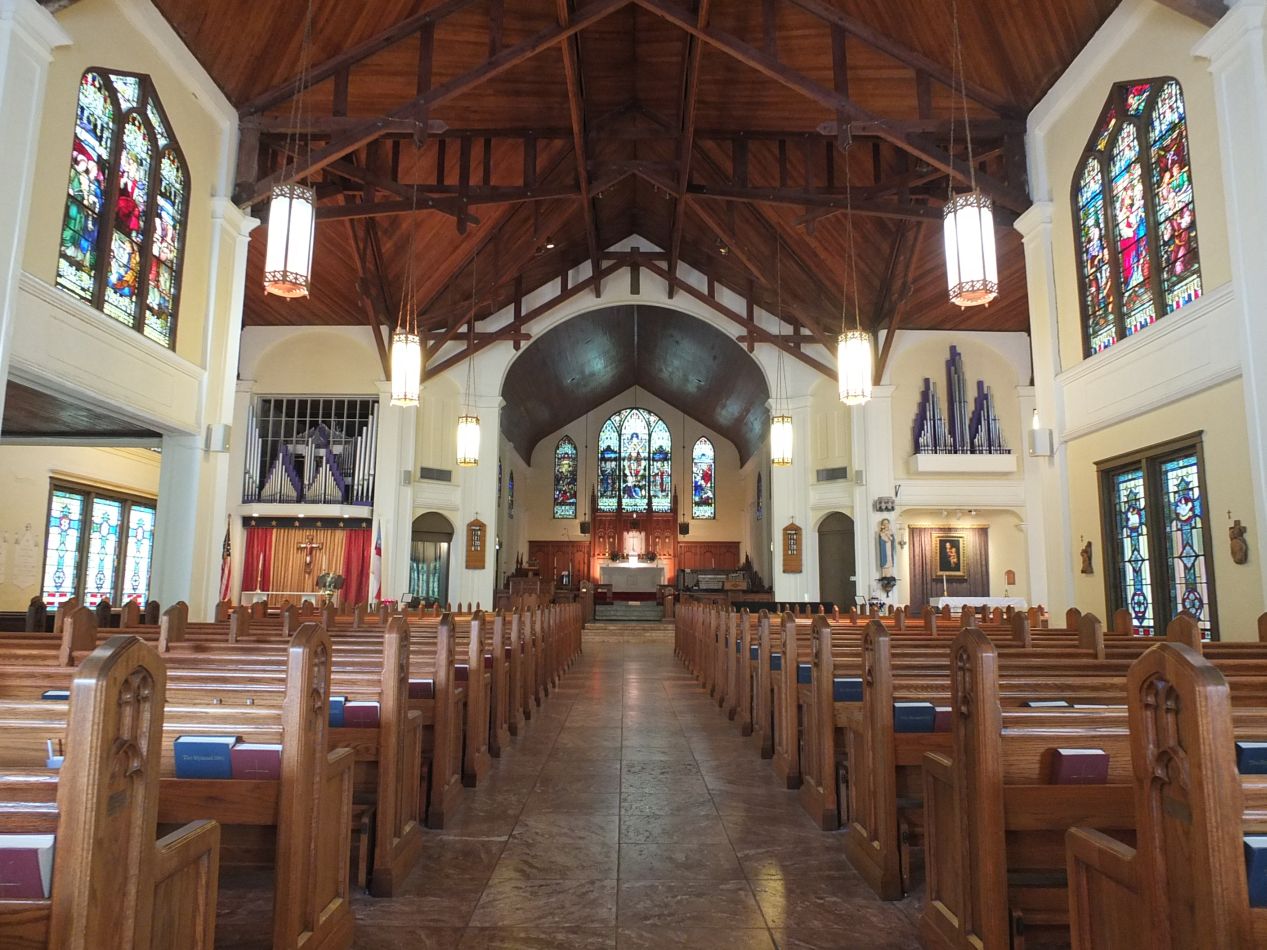
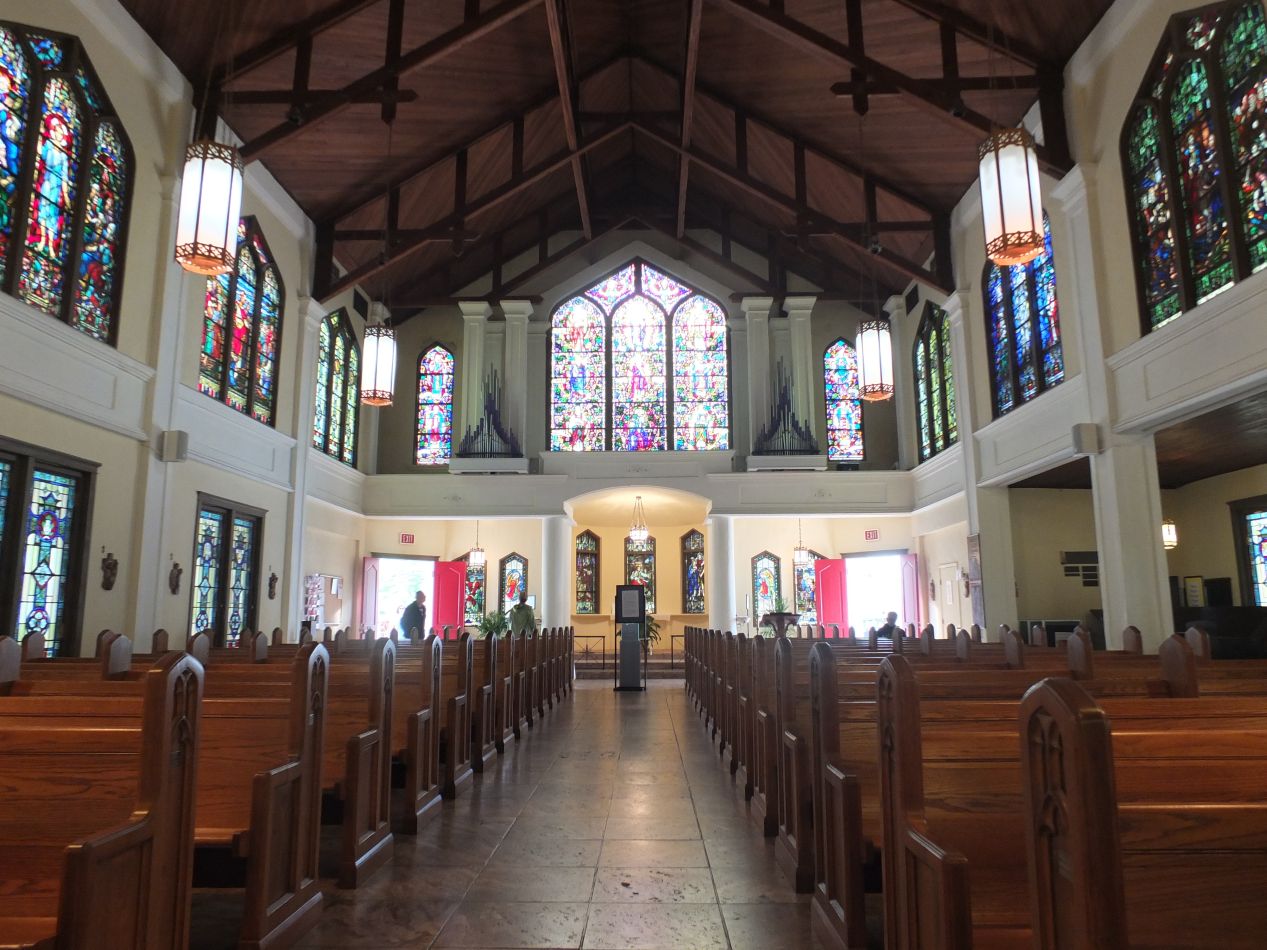
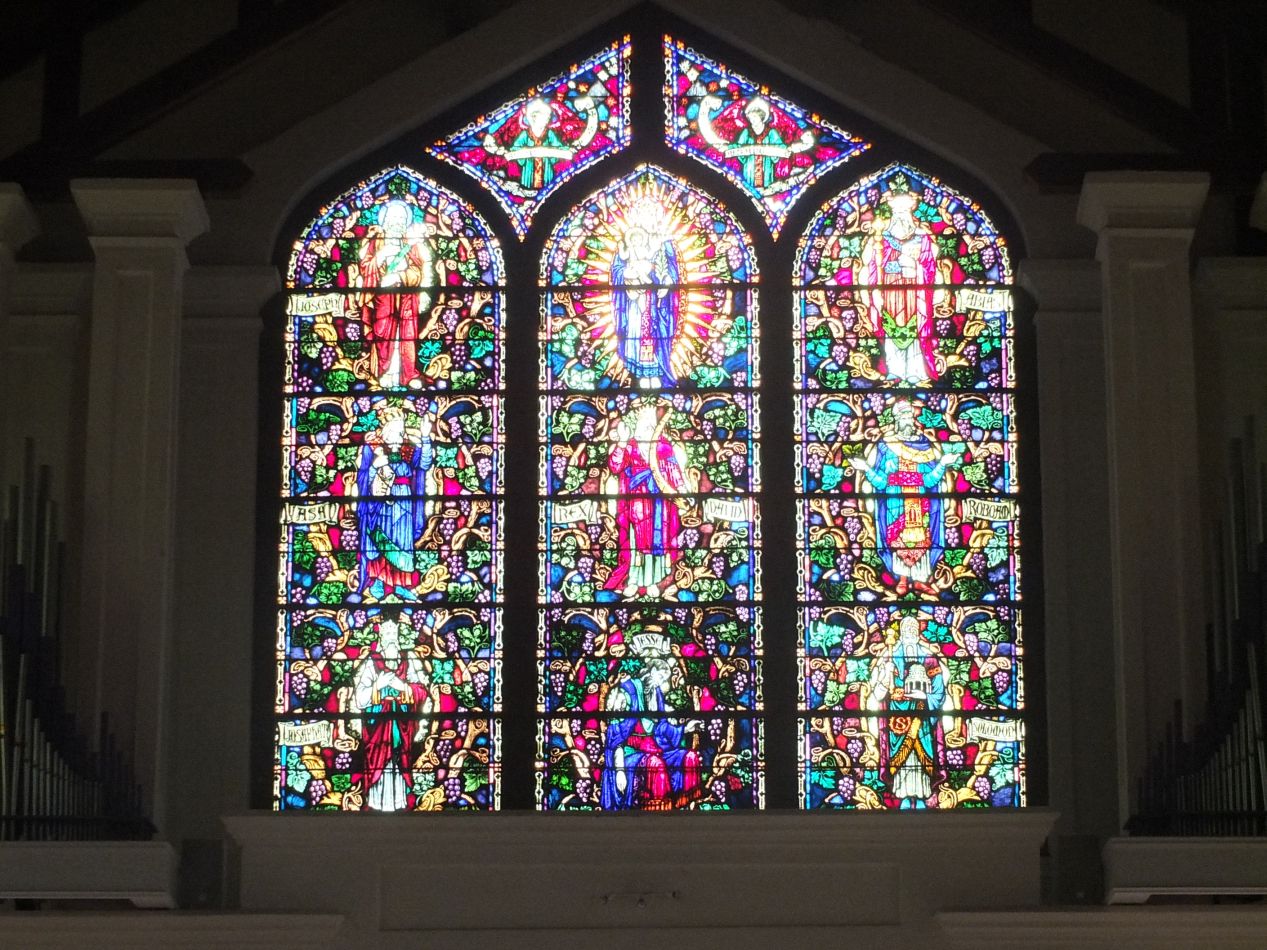
Seemingly out of place amid all the festivities along Duval Street was this church known as St. Paul's. An Episcopal chuch by denomination, the particular incarnation of St. Paul's dates from 1912 and is the fourth church to stand on the site. The three previous churches were destroyed by some combination of fires and hurricanes, with Atlantic storms being a major risk in the Keys. St. Paul's seemed to be another structure influenced by Spanish architectural elements, and the bright white color made it stand out from the greenery that surrounded the building. Like most houses of worship that I've come across while traveling, it was open to the public and welcoming of visitors. The interior somewhat surprisingly had a wooden ceiling, and that ceiling along with the liberal use of stained glass helped give this place a distinctive feeling.
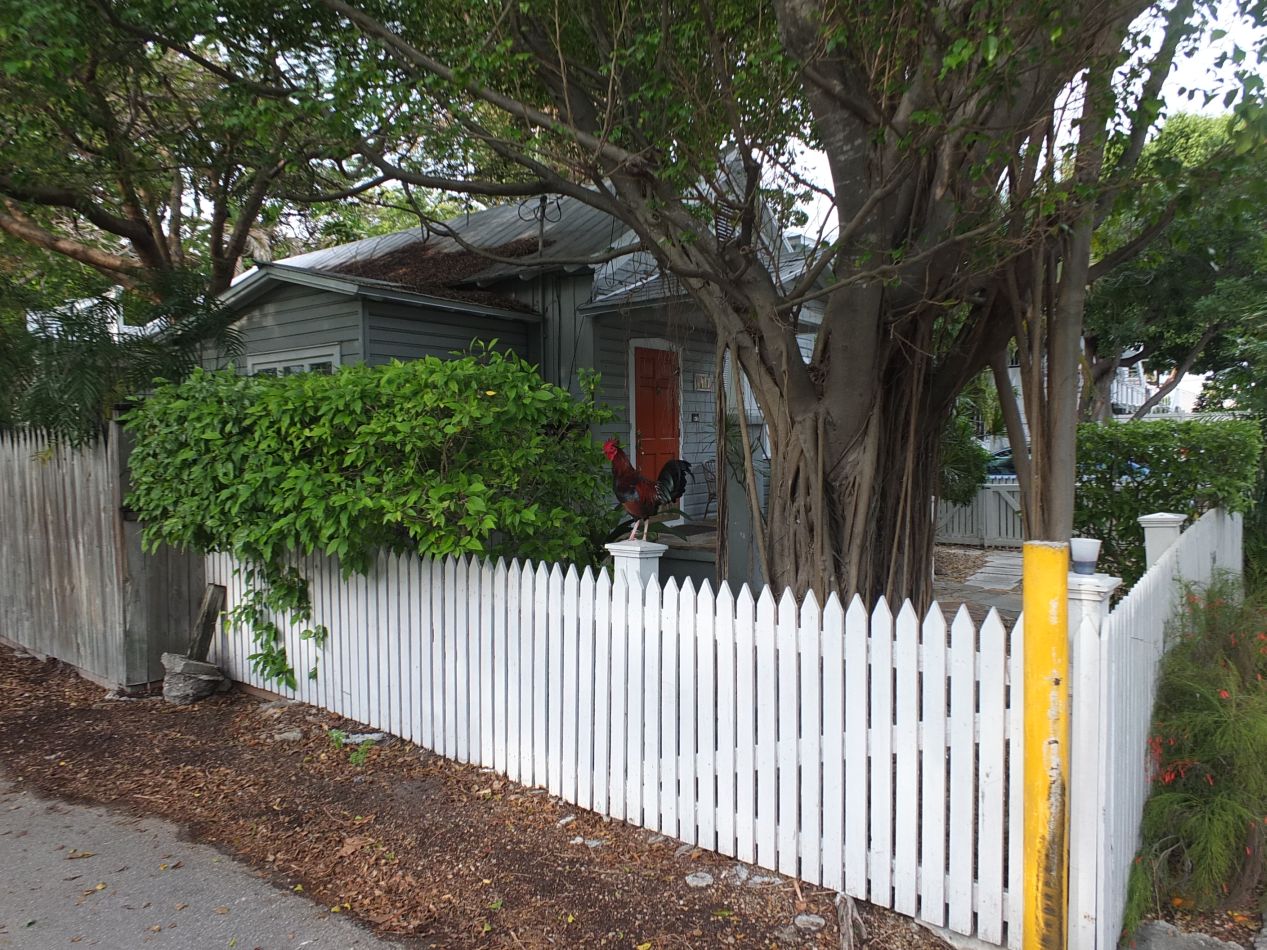
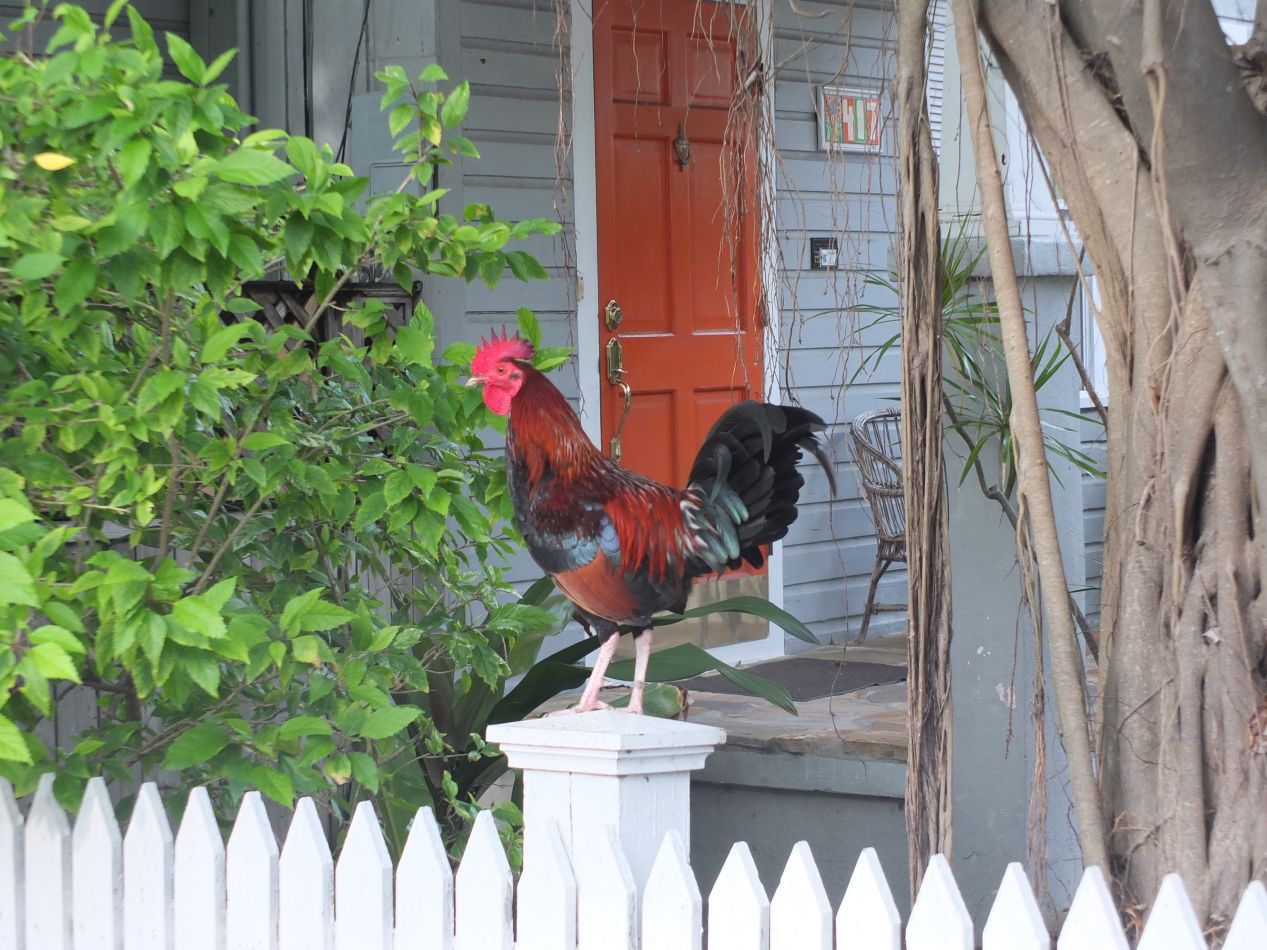
One other thing that I should mention about Key West are the roosters and chickens. These birds strut about all over the place in town, and they can be heard clucking to one another anywhere that they aren't drowned out by the noise from automobile traffic. This is another indication of the Spanish (and specifically Cuban) influence on Key West, as the birds were originally brought to the islands for cockfighting and have remained ever since. The birds are a bit of a public nuisance between the noise and the way that they leave droppings all over the place, but they're seen as one of the iconic elements of Key West and there's strong public sentiment to keep them around. When the city government tried to hire a chicken catcher to reduce the population, the occupation was voted down after only a single year in office. All that I can say from my brief visit to Key West is that these birds are omnipresent and like to swarm newcomers in the hopes of getting food donations.
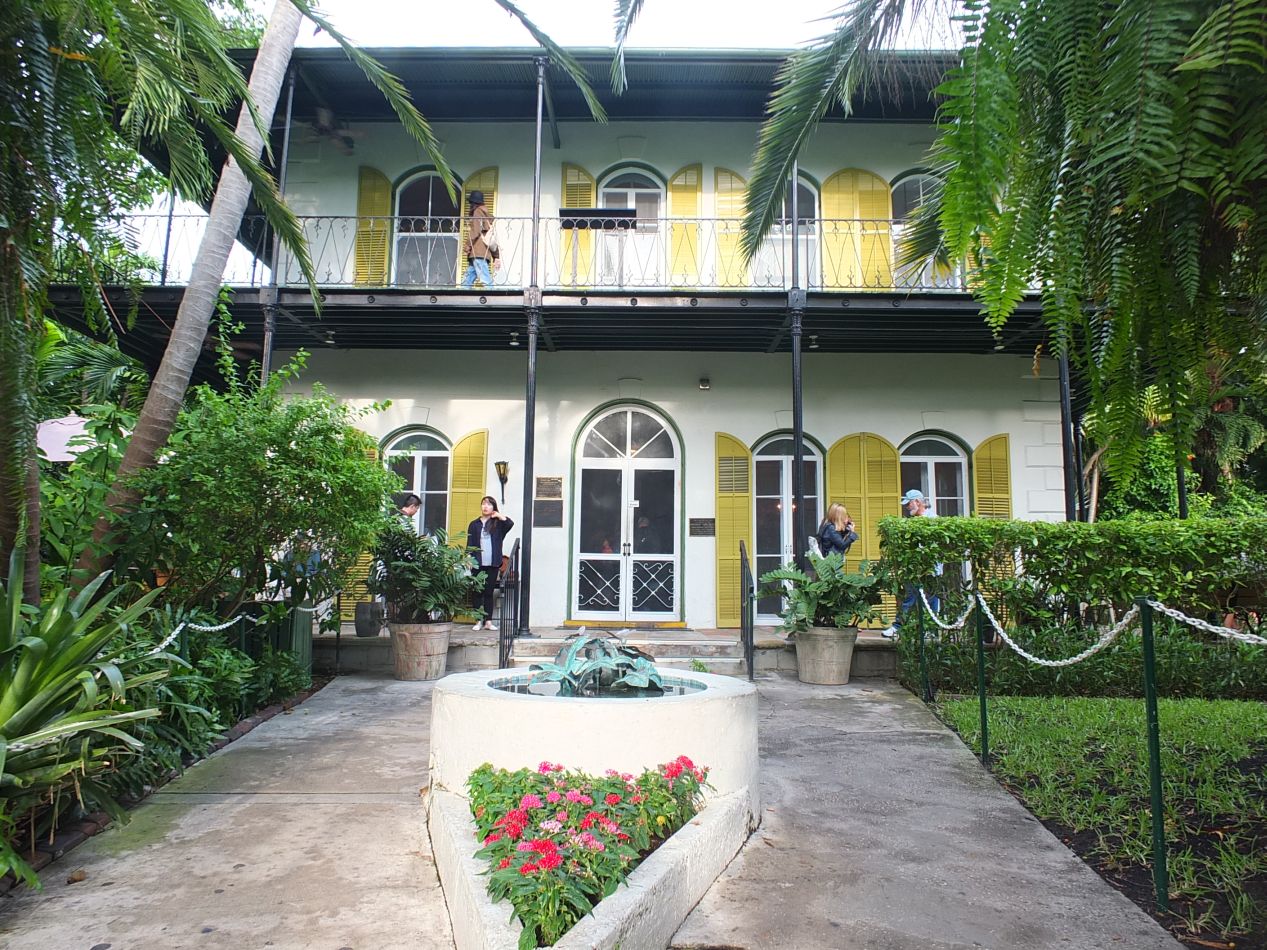
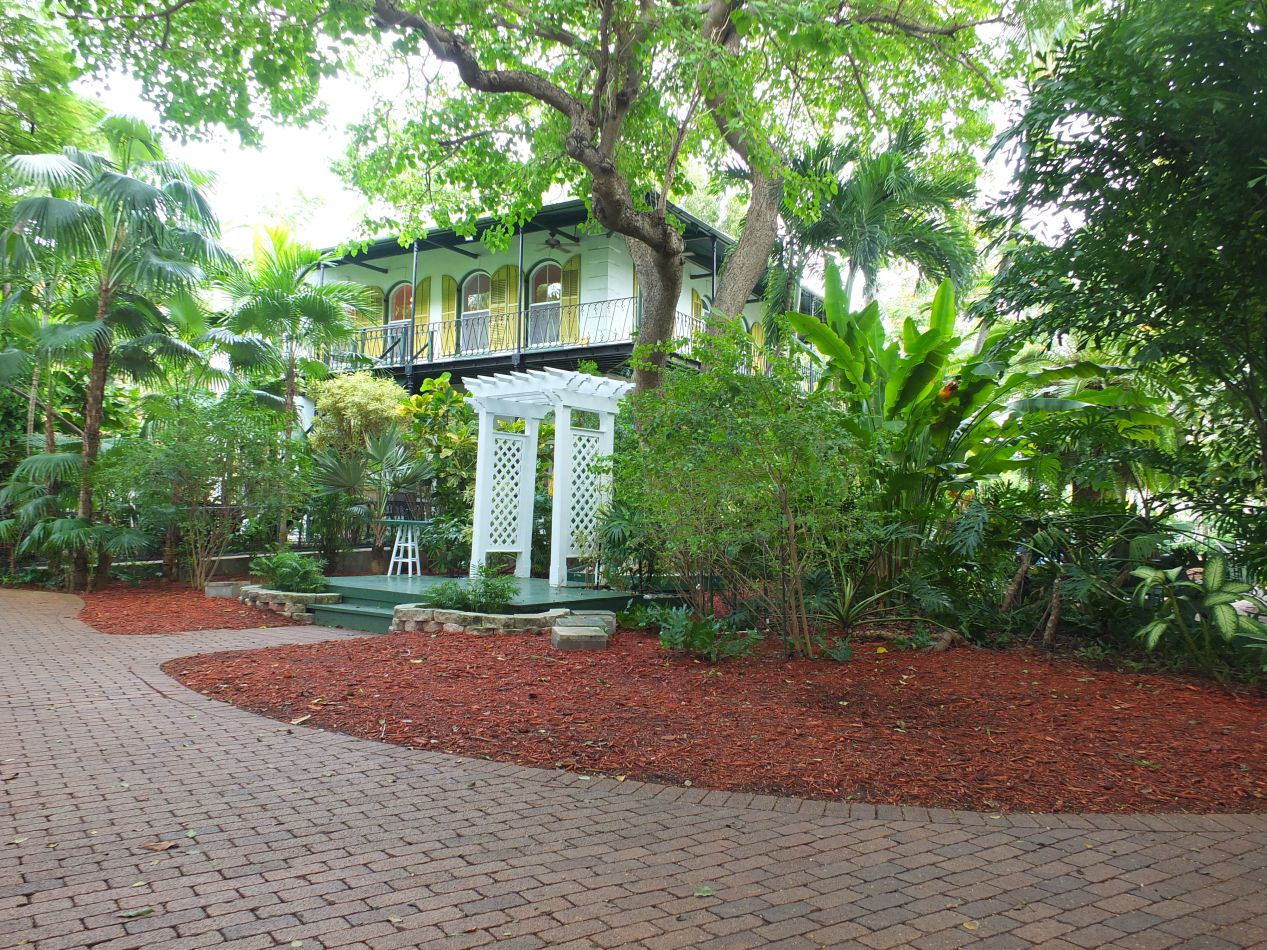
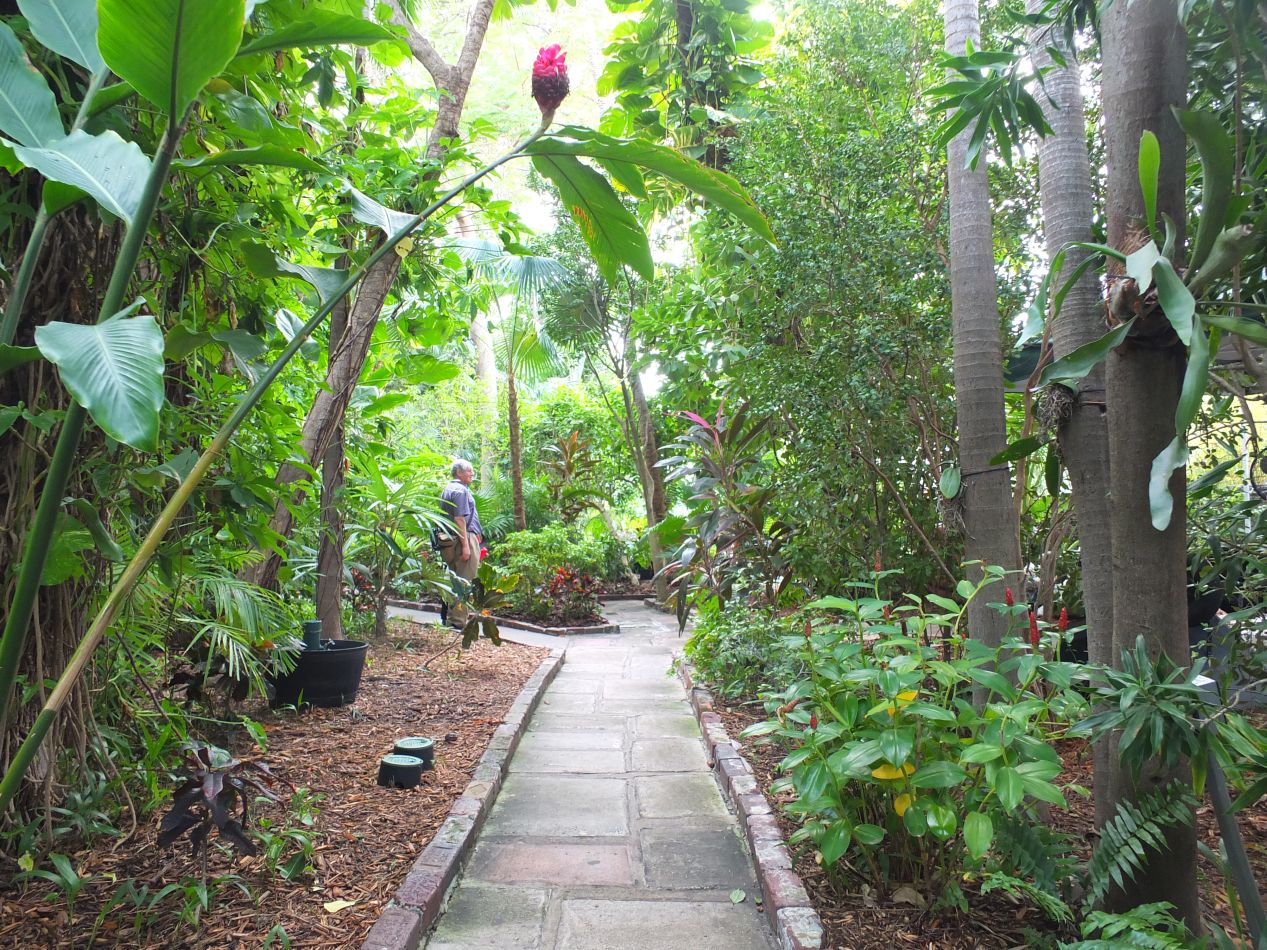
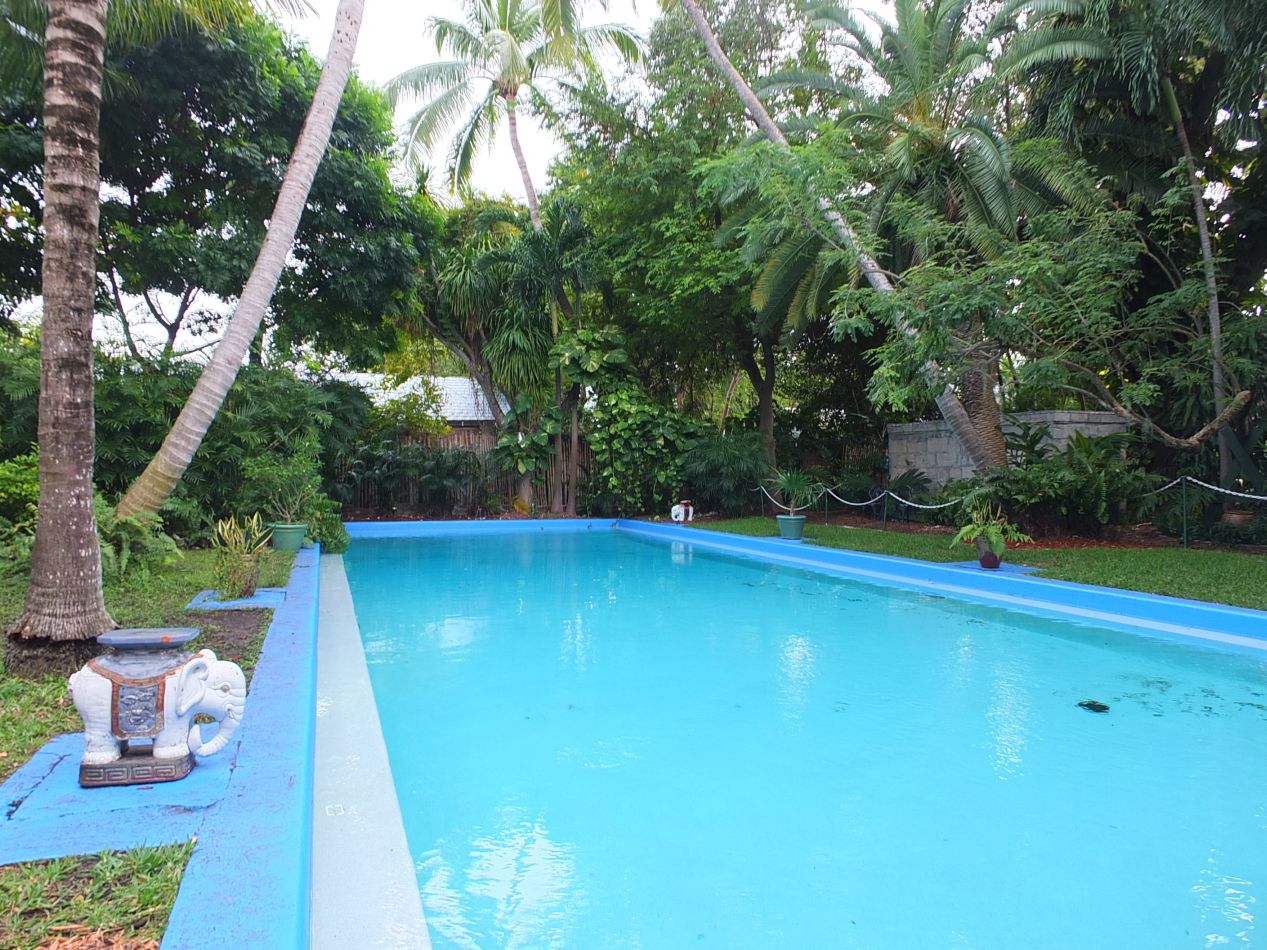
I managed to make it to my last sightseeing destination about 30 minutes before it closed for the day. This was the Ernest Hemingway House, the residence of the famous author during the 1930s when he wrote some of his best-known works. The Hemingway House has been converted into a privately owned museum and it's one of the most popular tourist attractions in Key West. The structure of the house was originally built in 1851 in French Colonial style, although it has been updated numerous times since the initial construction. The building has fortuitously survived many hurricanes over the years without collapsing. The Hemingway House sits inside a small walled enclosure full of tropical plants. The dense greenery holds numerous tropical flowers and makes it difficult to see the surrounding streets from the inside of the complex. There's also a pool outside which was an extravagent luxury when it was first built by Hemingway's wife, the only pool to be found anywhere in the Florida Keys for decades thereafter. Hemingway supposedly had a boxing ring set up and would spar with locals when he lived here, which is one feature of the house that hasn't been preserved.
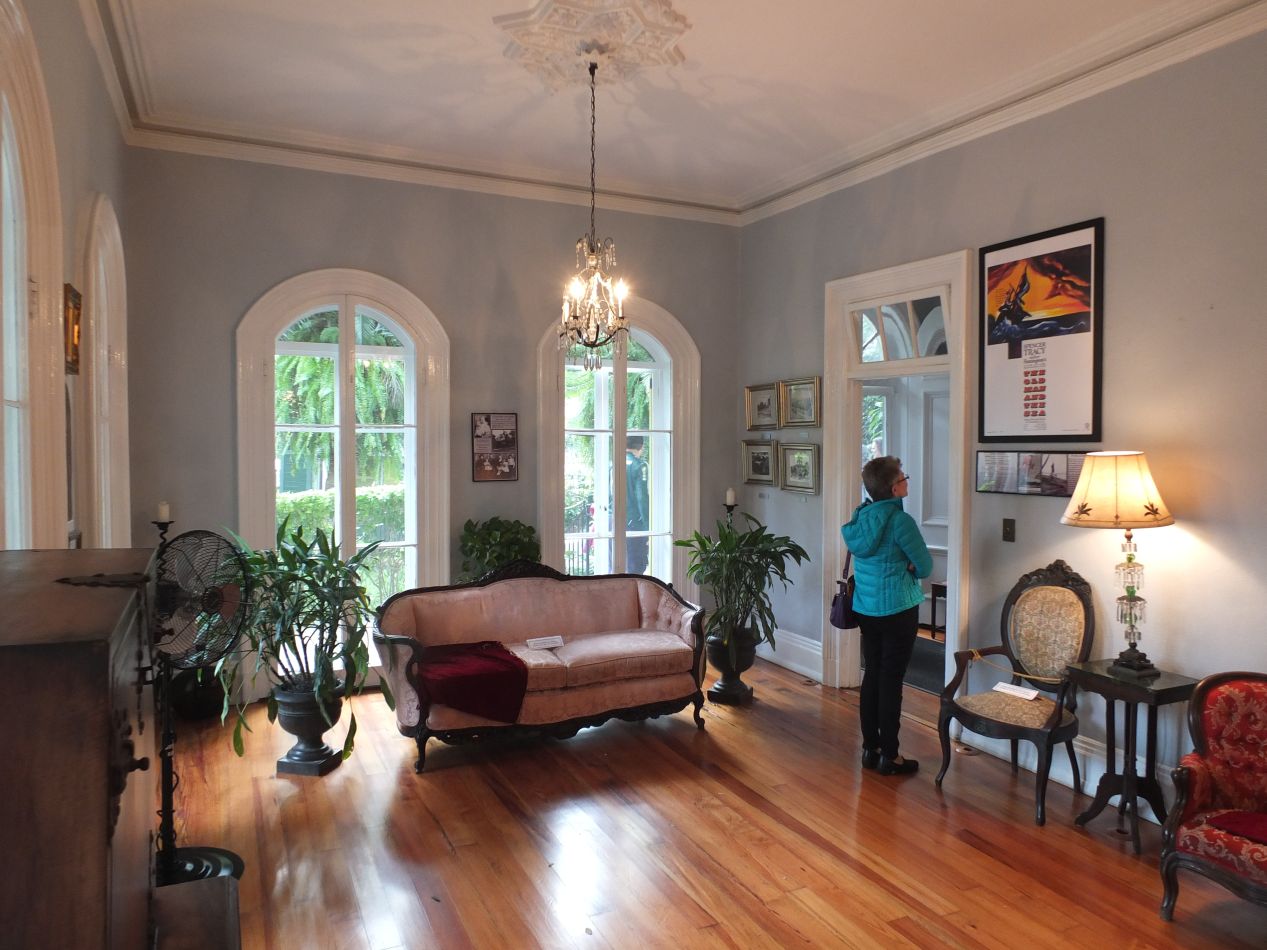
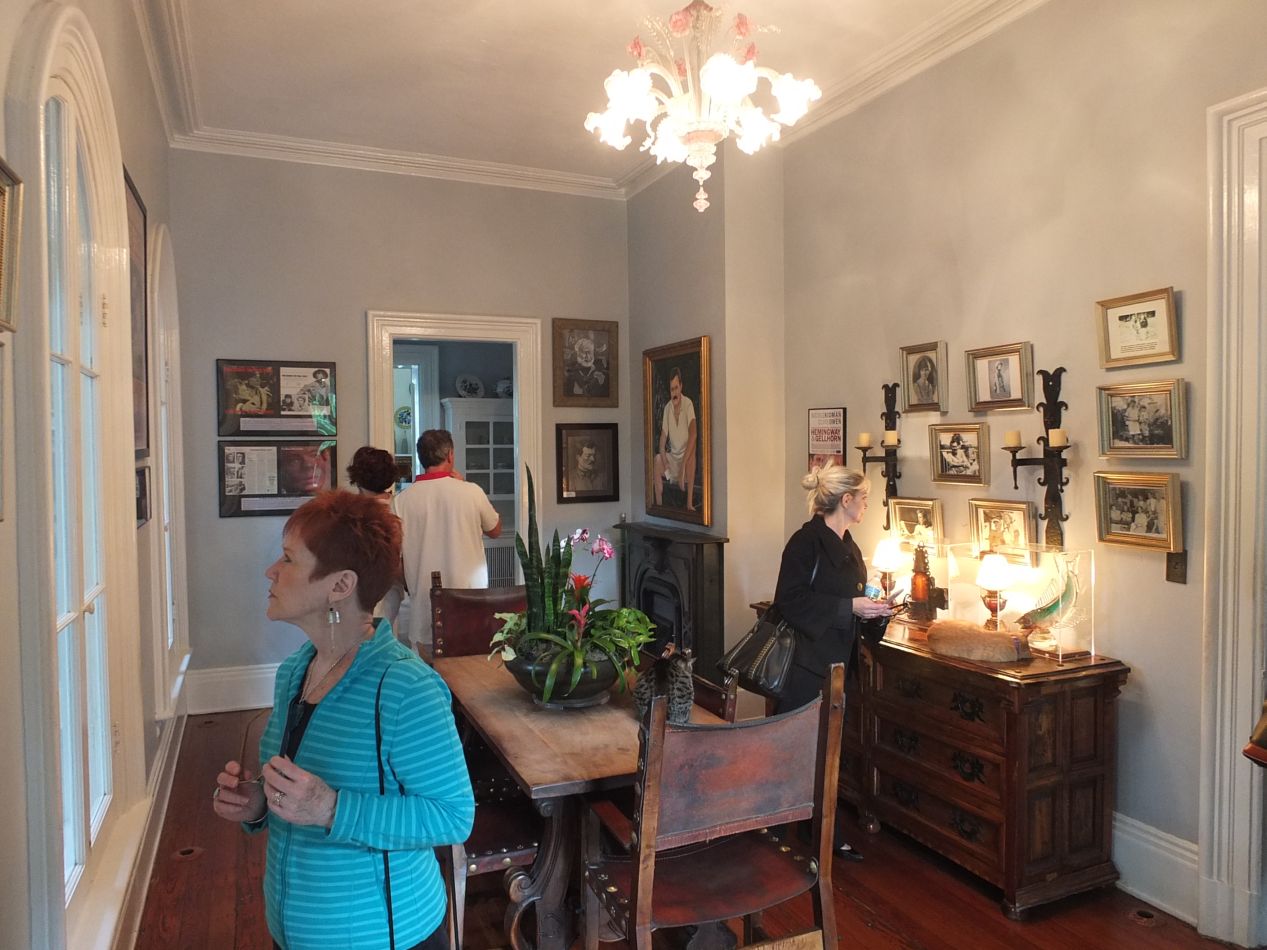
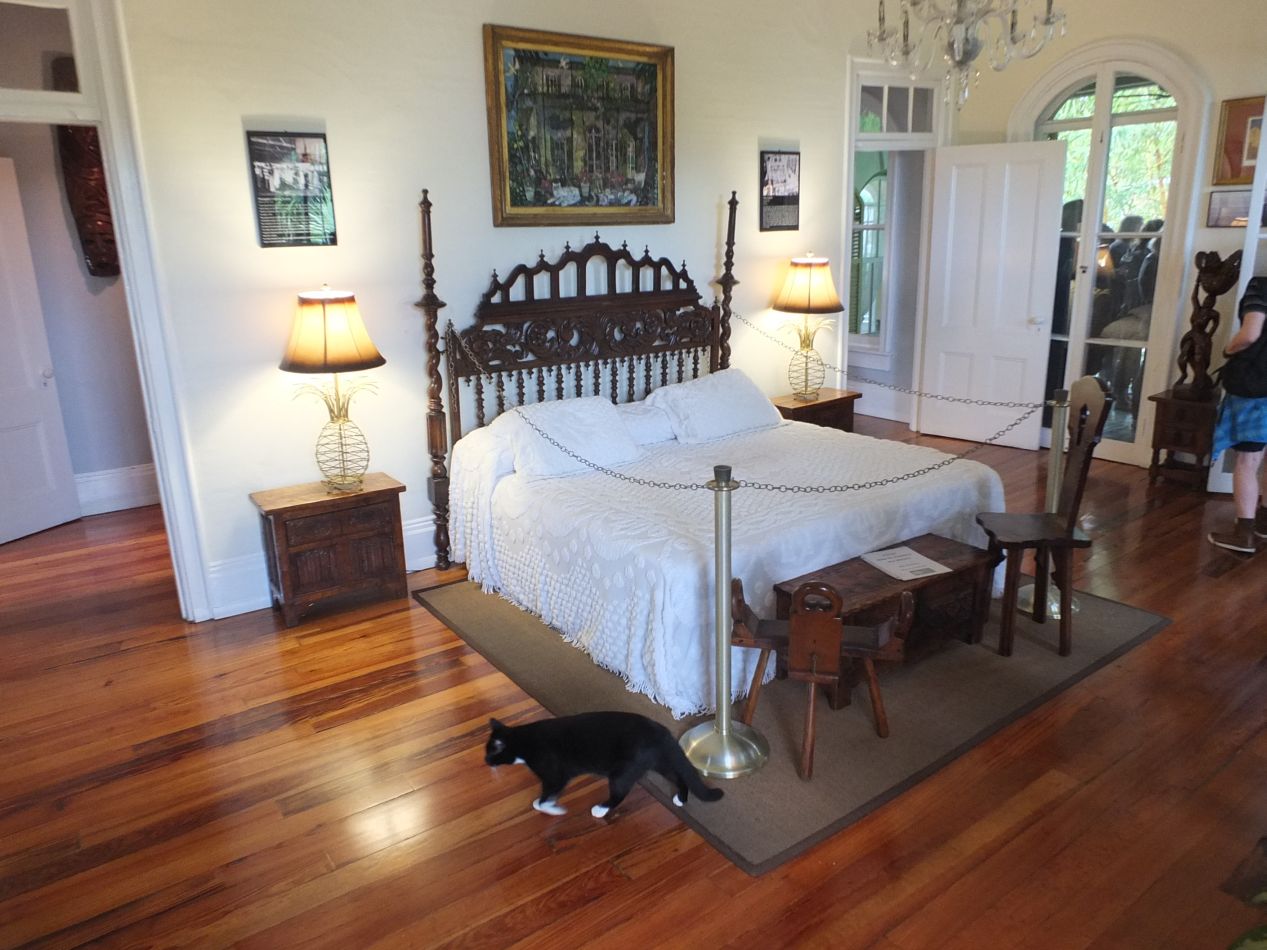
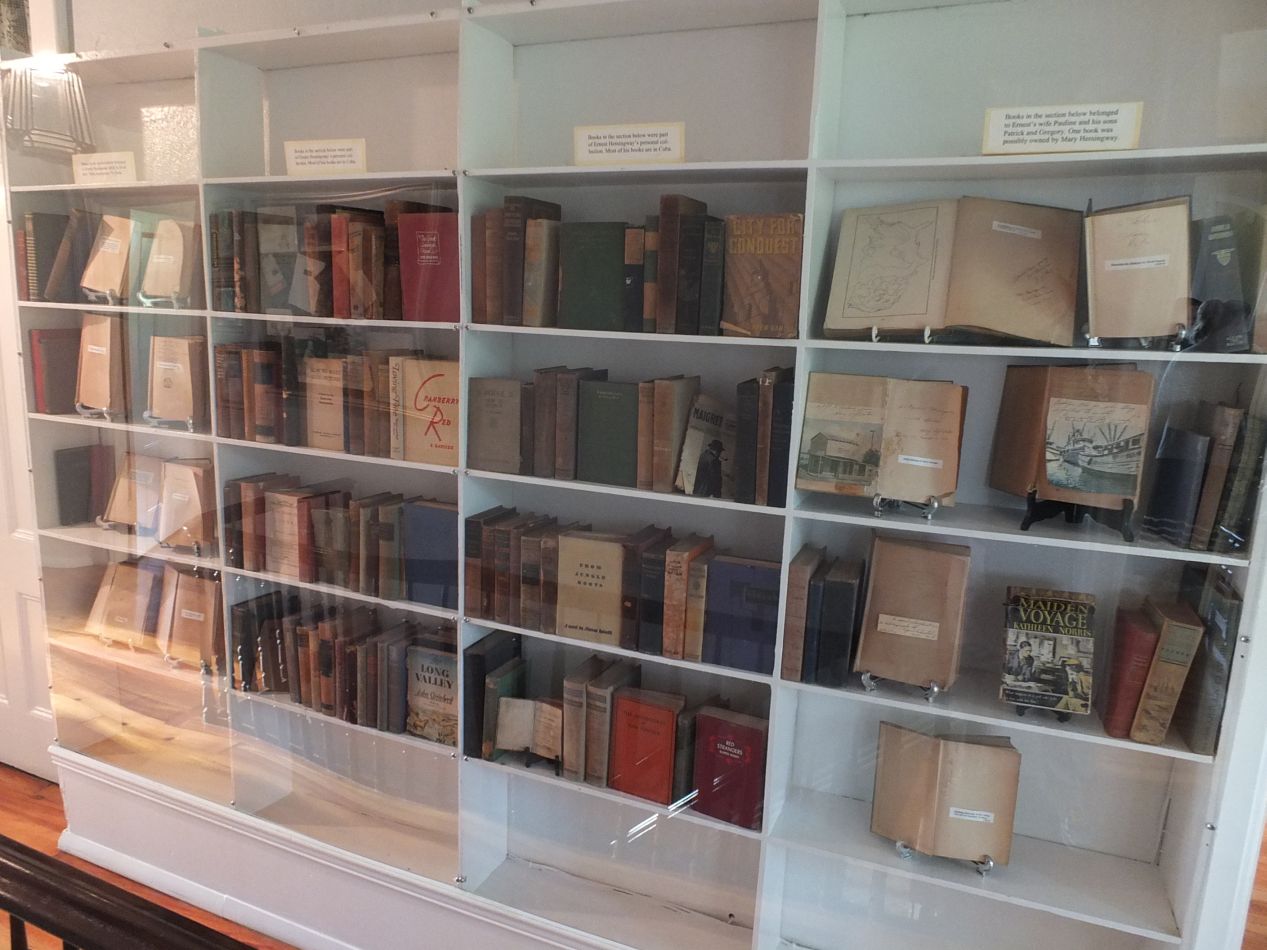
The interior of the house has been furnished to resemble the way that it would have looked in the 1930s when the Hemingways lived here. It's full of the expected Hemingway memorabilia, lots of signed letters and photographs and such. I found the book collection to be the most interesting, due to my curiosity about what novels a famous author would have chosen to keep in his own personal library. This is the house where Hemingway wrote For Whom The Bell Tolls and The Snows of Kilamanjaro among other works; he supposedly worked on A Farewell to Arms while renting a smaller apartment elsewhere in Key West before purchasing this expensive home.
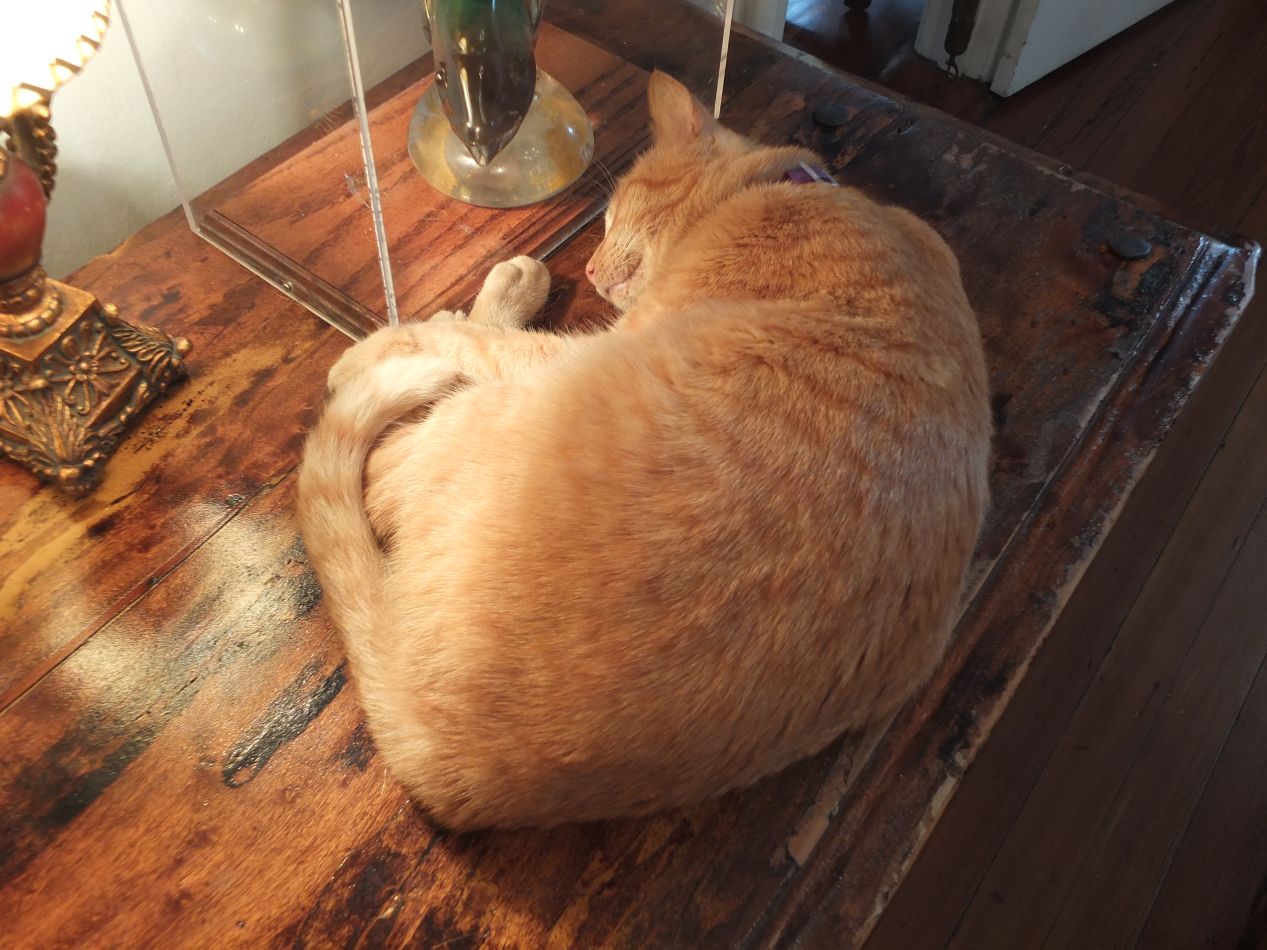
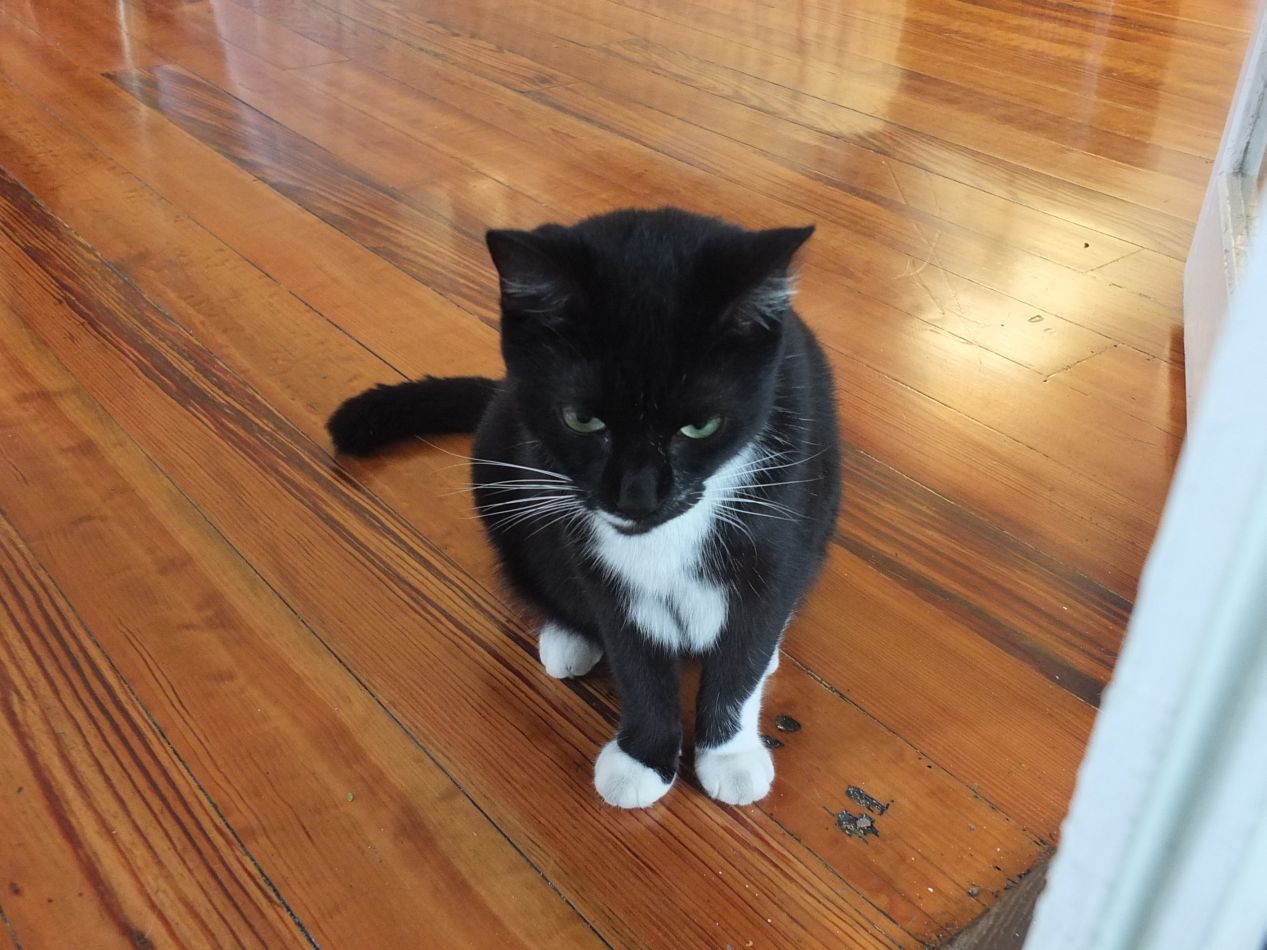
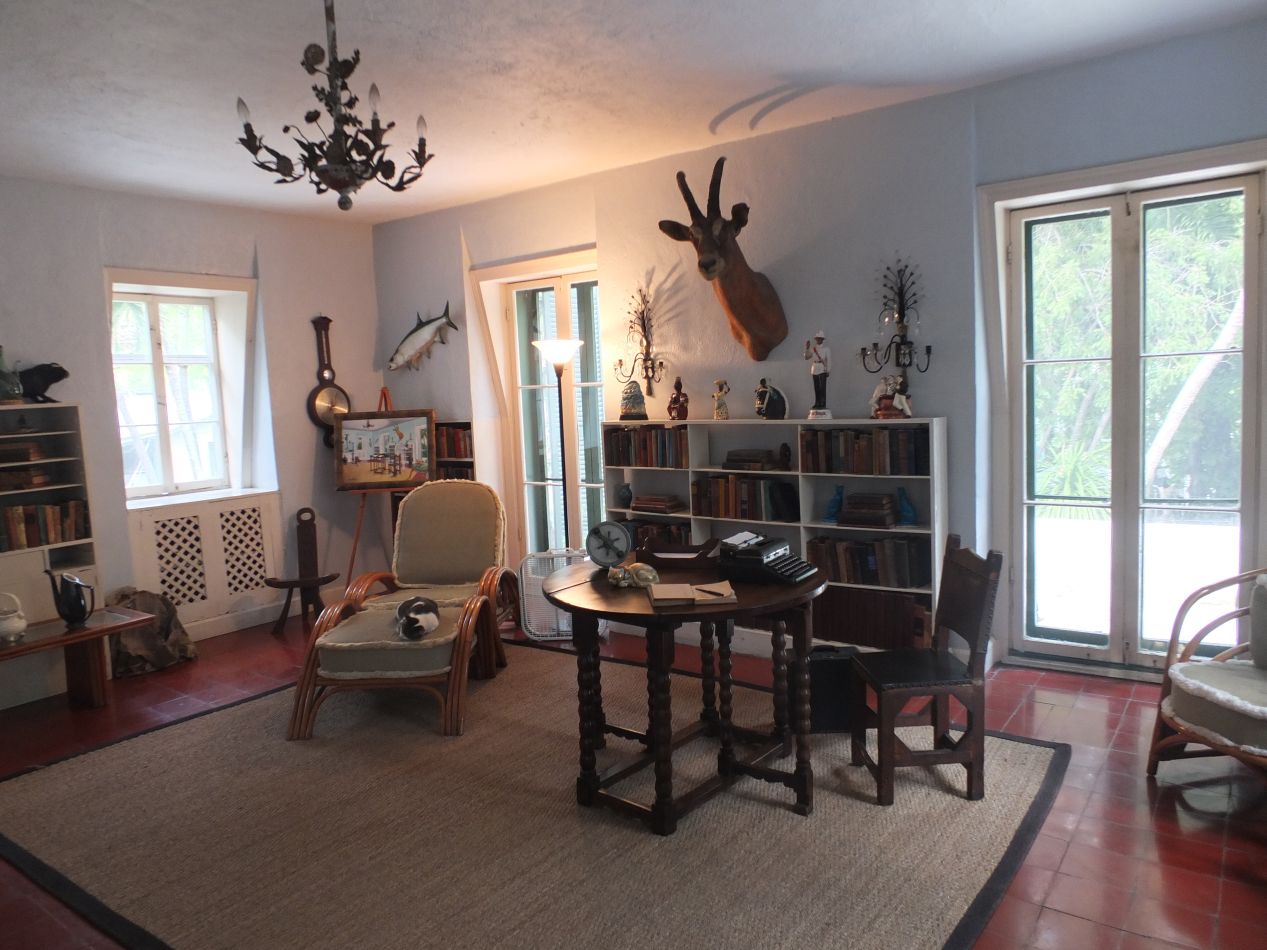
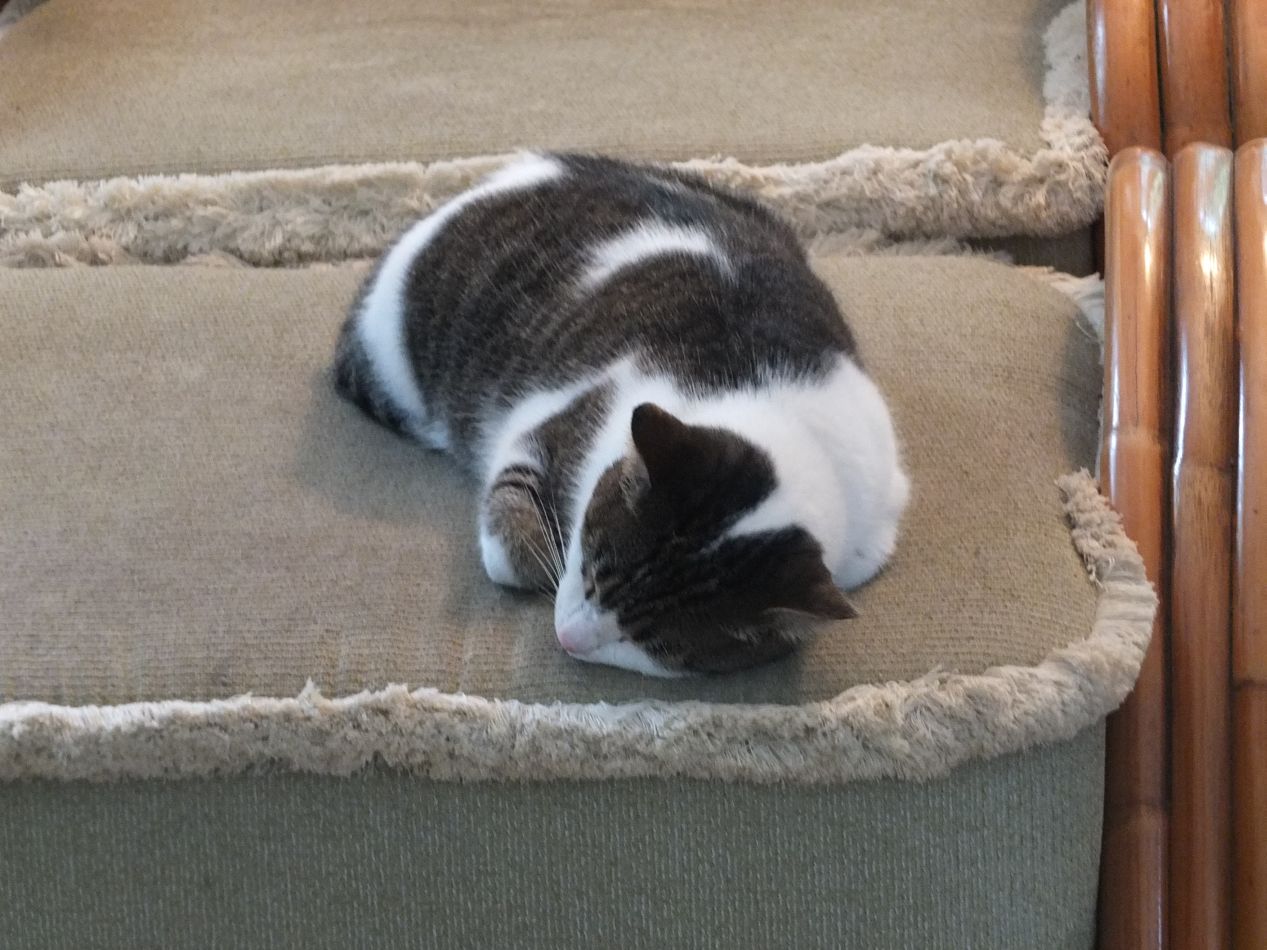
The Hemingway House is also somewhat famous for hosting the descendants of the author's cats. While the cats don't legally own the place as I've seen falsely claimed at times, they do walk around as if they own the house and there are several dozen of them on the premises. These cats are all descended from cats that were owned by the Hemingways, and about half of them are polydactyl animals with six or seven toes on their feet. I tried to capture that in a photograph but it was tough because cats in general are pretty much death on anyone messing with their paws, and there were lots of signs specifically telling visitors not to touch any of the cats. These animals are very well treated and essentially get to live a life of indolent luxury on the estate. They seemed to spend most of their time searching out comfortable places to sleep throughout the house.
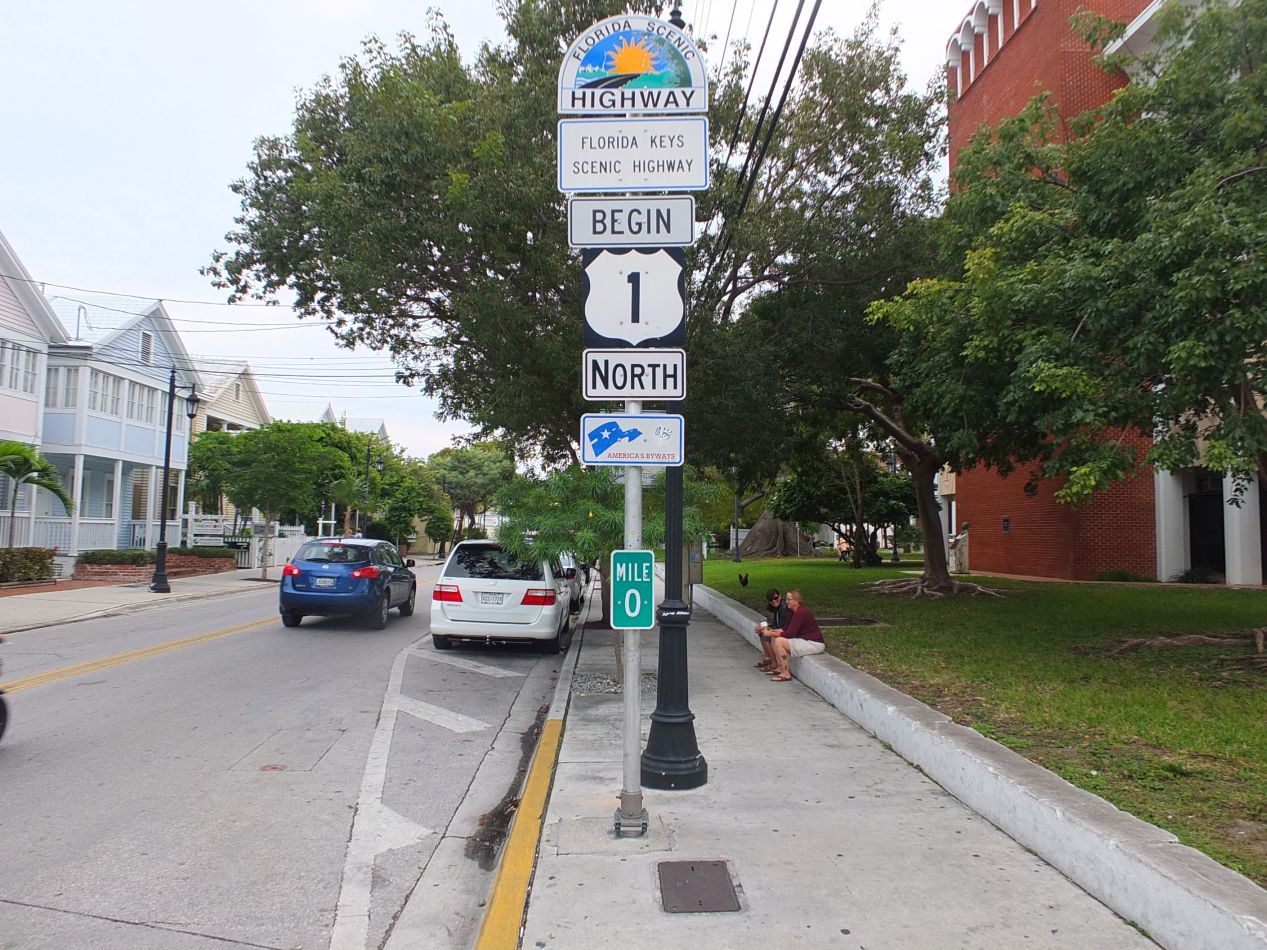
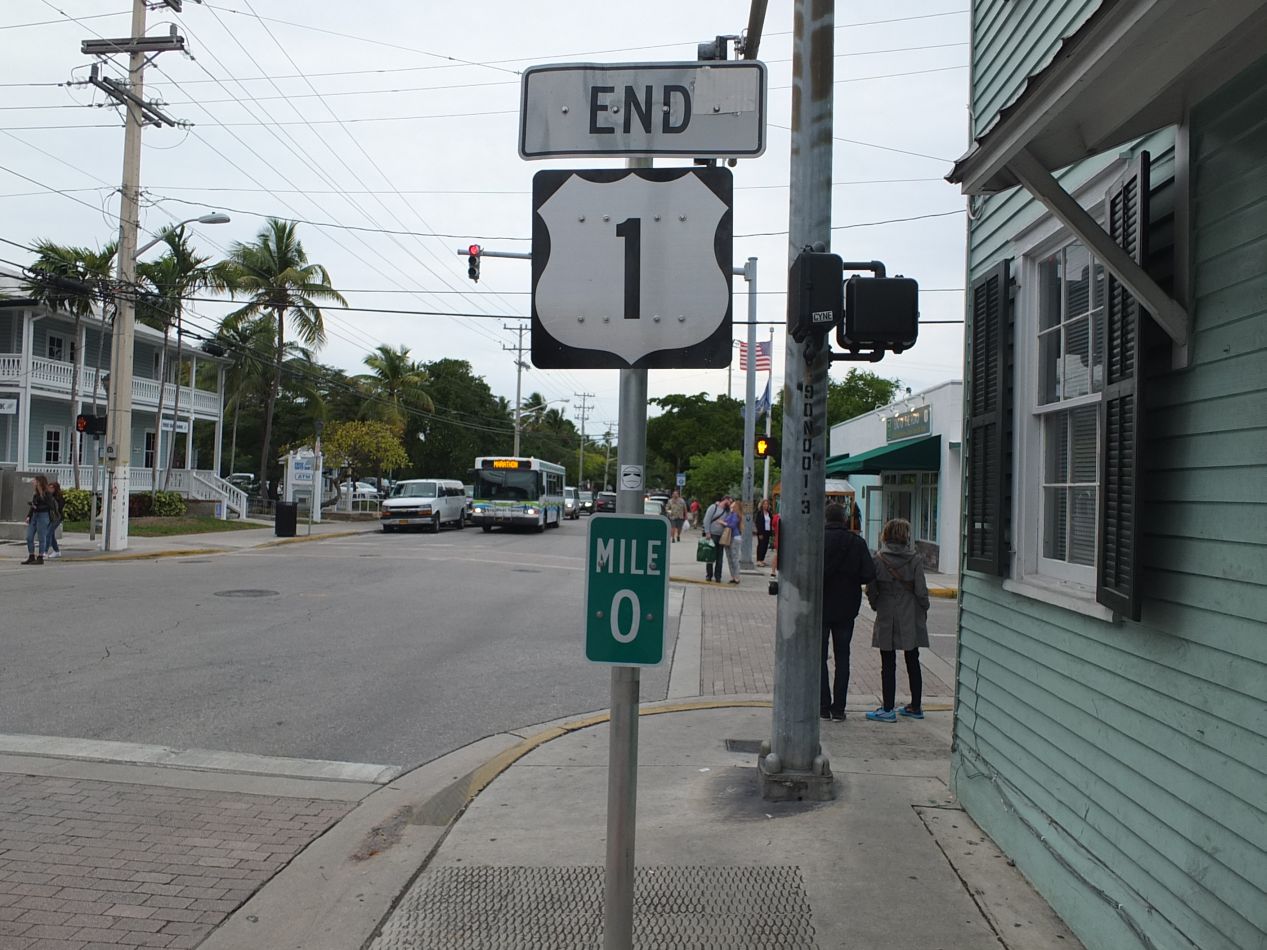
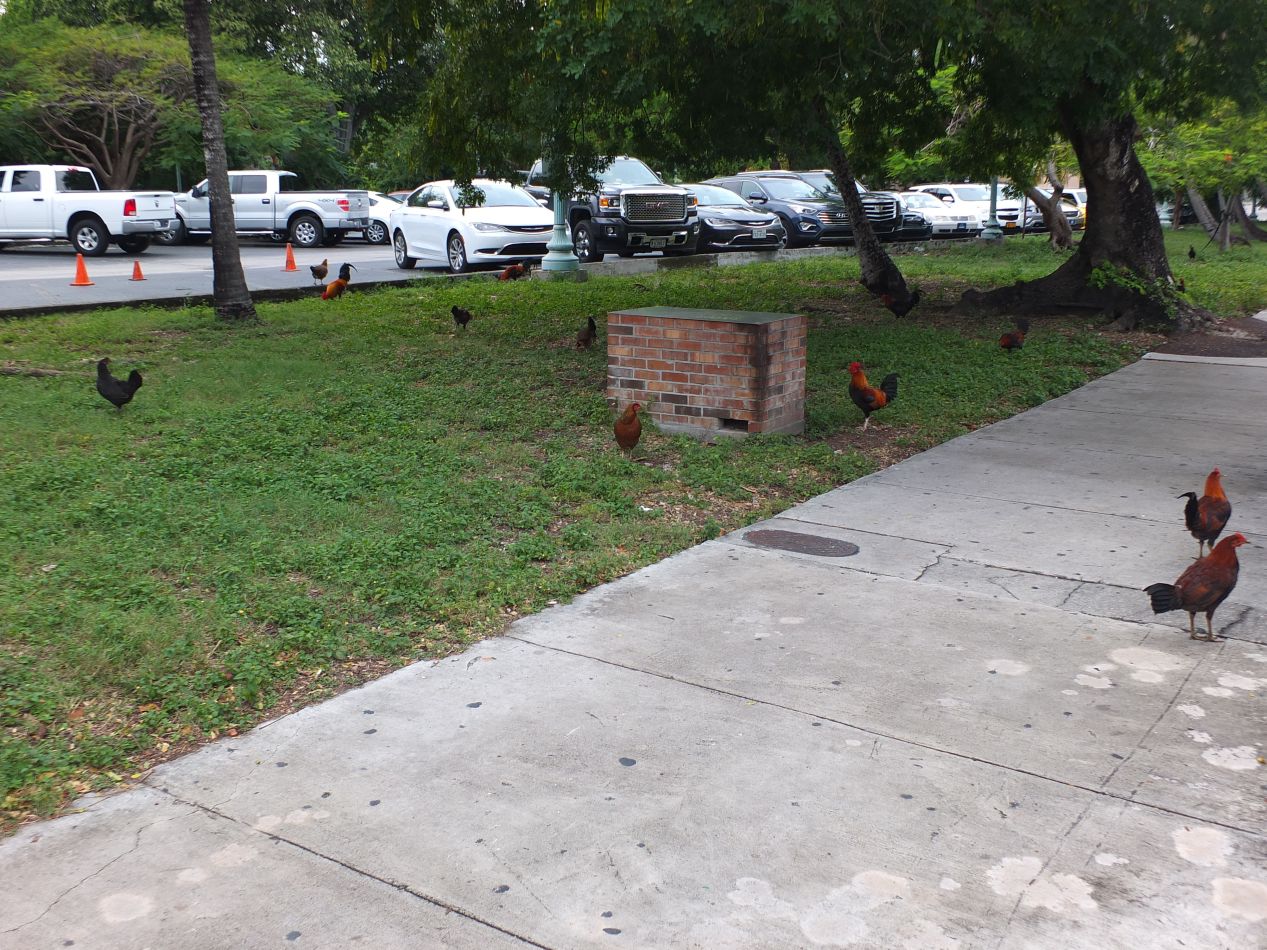
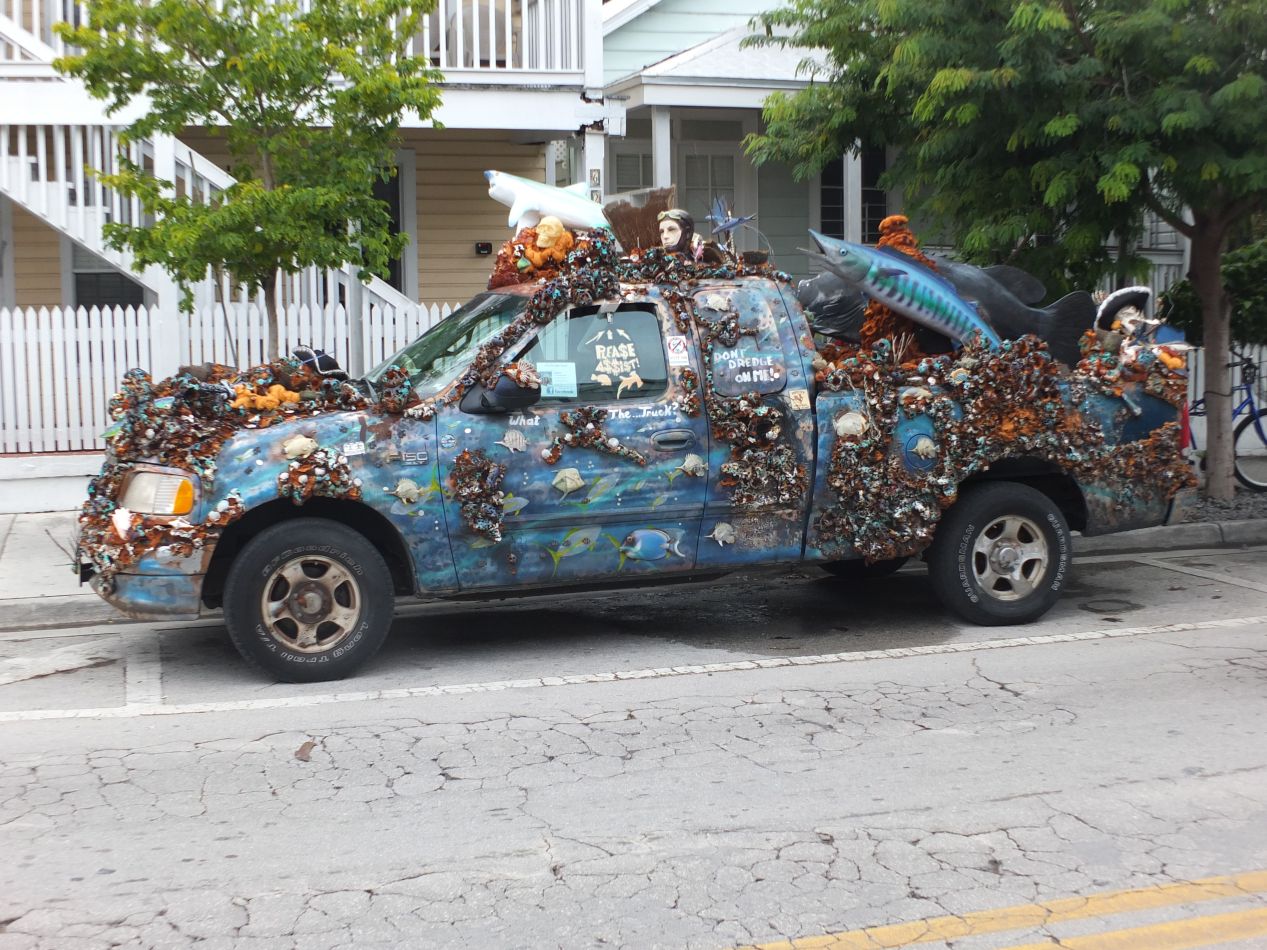
The Hemingway House was the last place that I was able to visit in Key West. I left right as the attraction was closing at 5:00 PM, and I still had about four hours of driving ahead of me to get back to Miami for the night. That driving would be taking place on US Highway 1, the same road that I had taken to get down to Key West earlier in the day, and the town makes a big deal about the starting point of this road at the "Mile 0" marker. Of course, it's also the ending point for the same highway when viewed from the opposite direction although that side didn't seem to attract as much attention. When I returned to my rental car in the parking lot, I took another picture of the chickens and roosters clucking around in the grass nearby. The birds really are everywhere in town. As I drove out of Key West, I was caught in the evening rush hour traffic jam, which might seem strange for such a small population. However, since there's only one road out of Key West and it's mostly one lane of traffic in each direction, the highway can get backed up pretty badly at times. In retrospect, I should have headed down to the attractions on the southern coast of Key West, Fort Zachary Taylor and Edward Knight Pier where the southernmost point in the continental US is located. I could have spent half an hour here checking the area out while the traffic died down a bit. Oh well, something to remember for the next trip if I ever come back again.
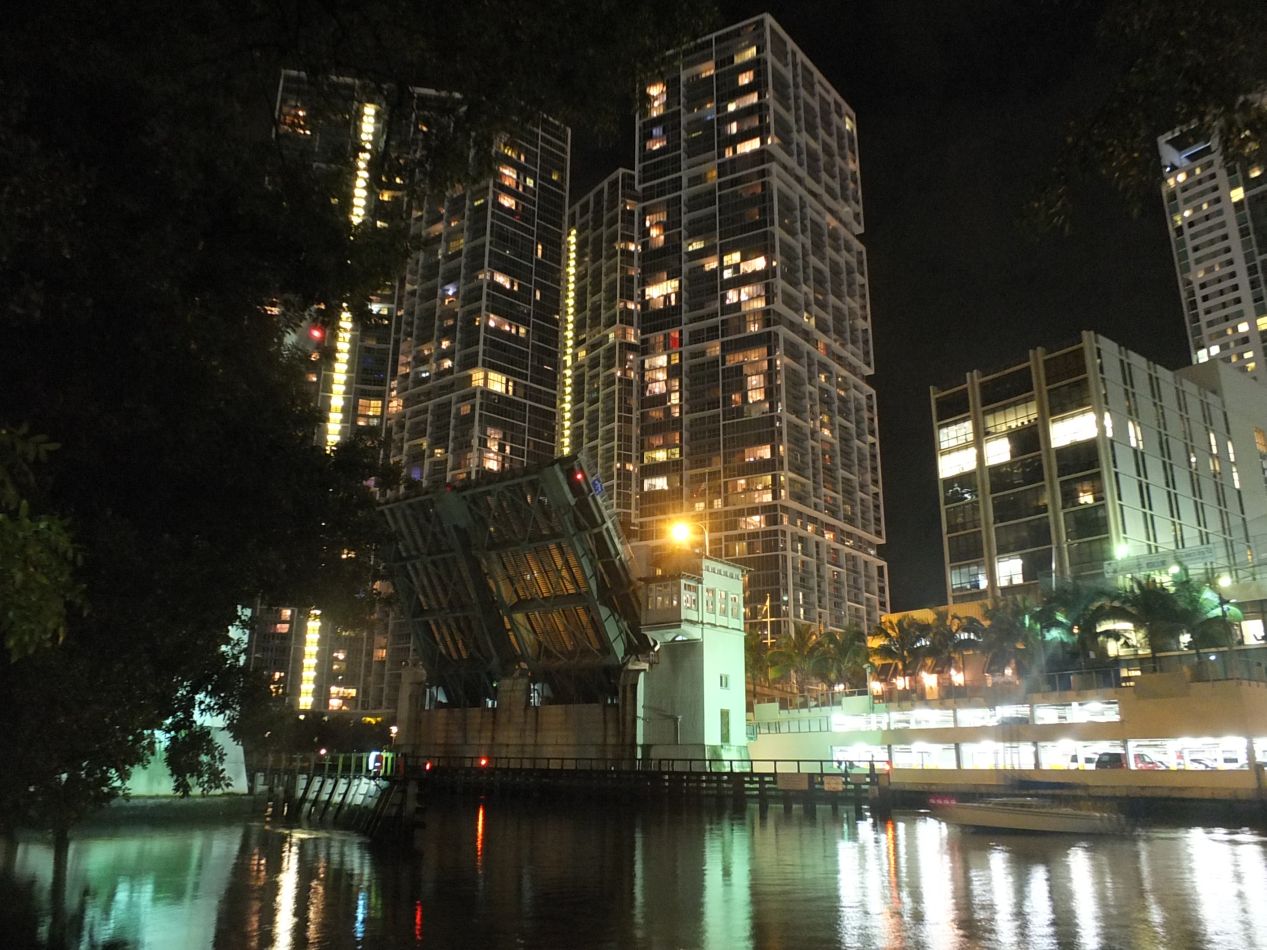
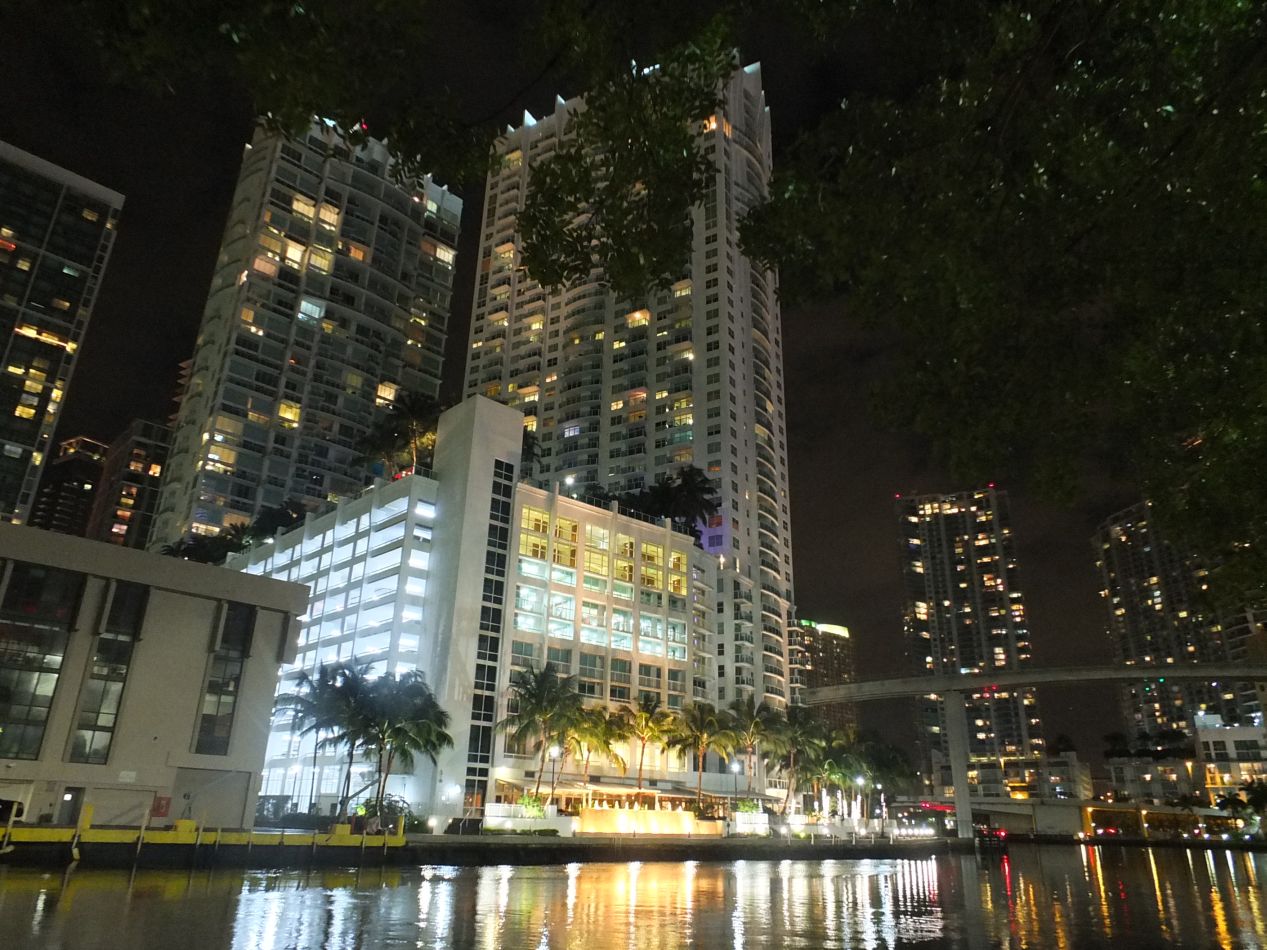
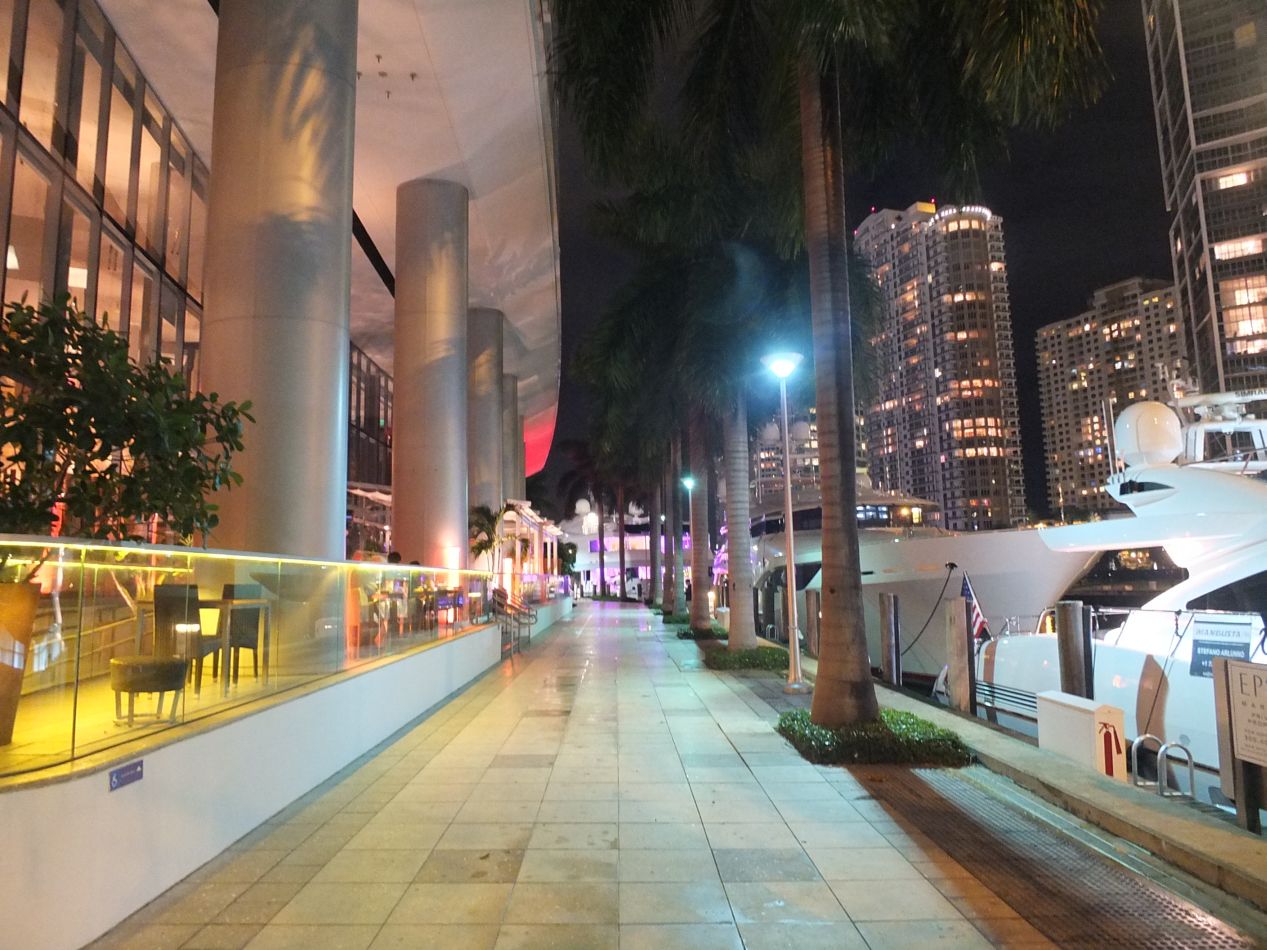
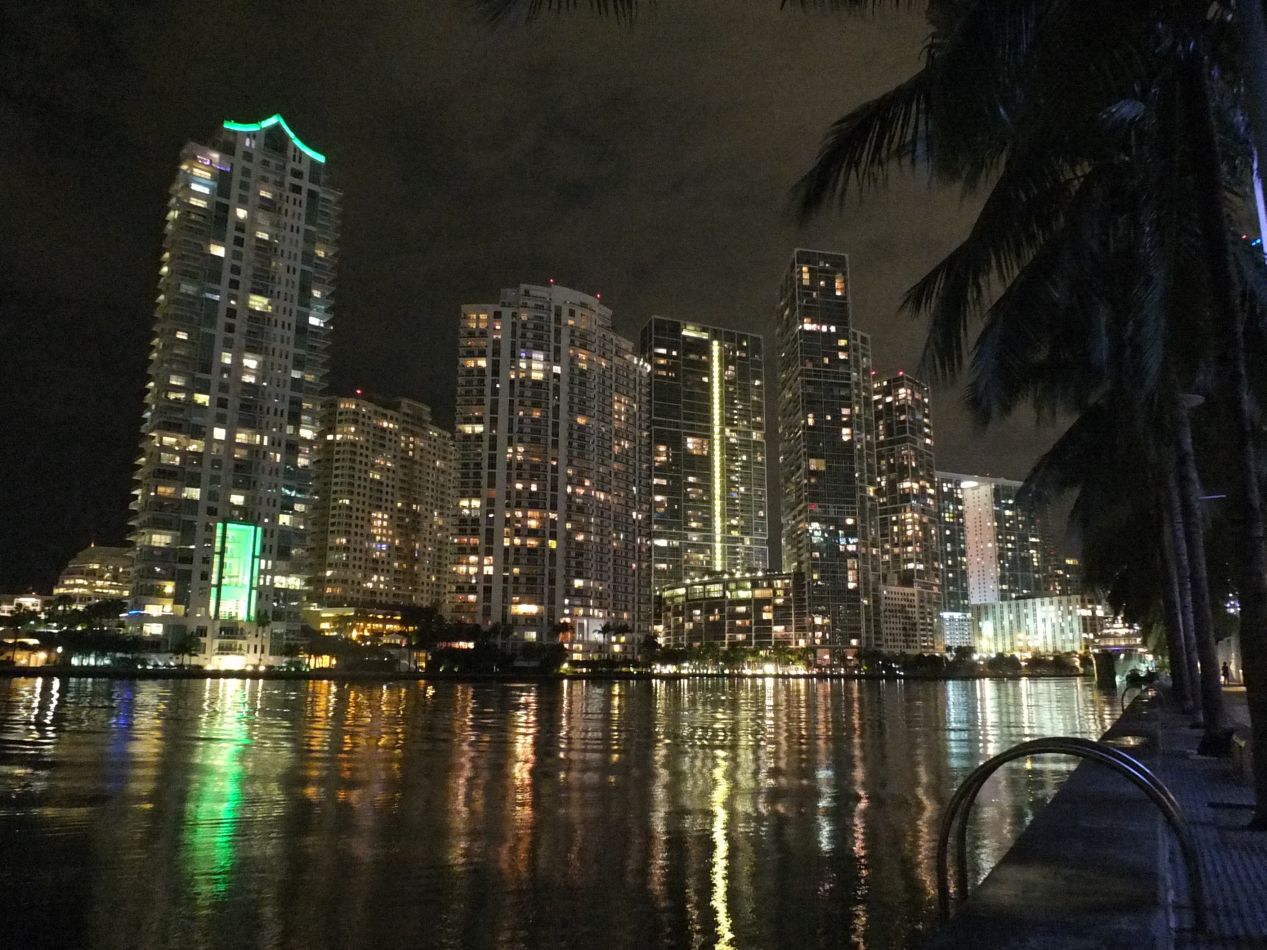
The drive back up to Miami was long and tedious. Due to the overcast weather conditions, I wasn't even able to see a sunset while driving back through the Keys, only more clouds that slowly faded into darkness. The weather on this trip had been a bit of a bummer, and it didn't get any better over the following days as it rained throughout virtually this whole work trip. This was strange because January is usually the dry season in southern Florida; it's actually the month that gets the least precipitation out of all twelve. Luck of the draw I suppose, and it didn't matter that much since I was inside working at the conference for 10-12 hours each day regardless. Anyway, the one night that it wasn't raining, I slipped out of the hotel in the evening to take a walk outside. These pictures were taken along the banks of the Miami River just before it emptied into Biscayne Bay. This part of the downtown area was heavily built up with hotels and condominiums that looked very expensive indeed. At one part of the waterfront, I came across some stupidly large luxury yachts that were being stored for some kind of VIPs. This urban environment was a major departure from the small town environment of Key West and the rest of the Keys.
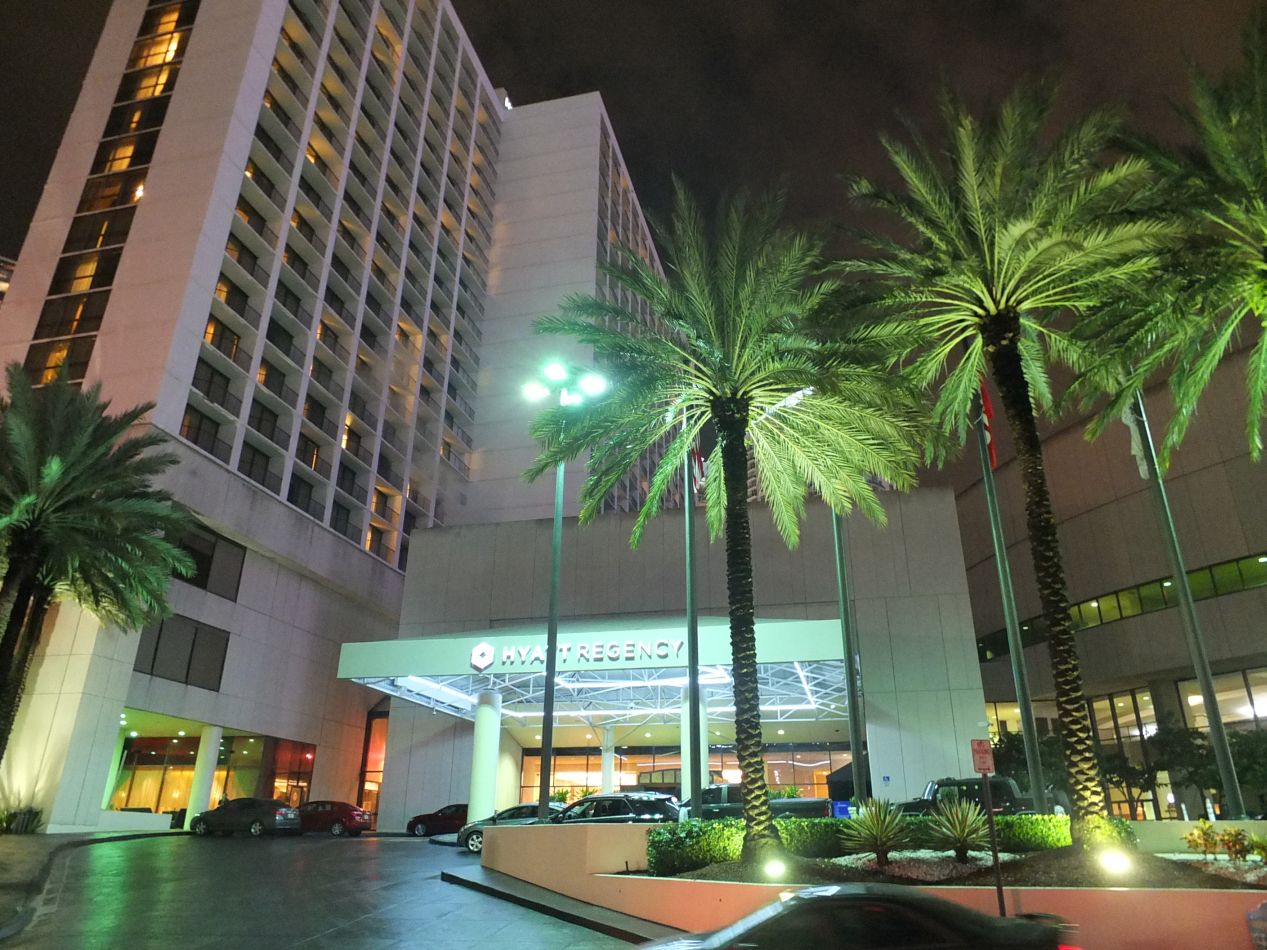
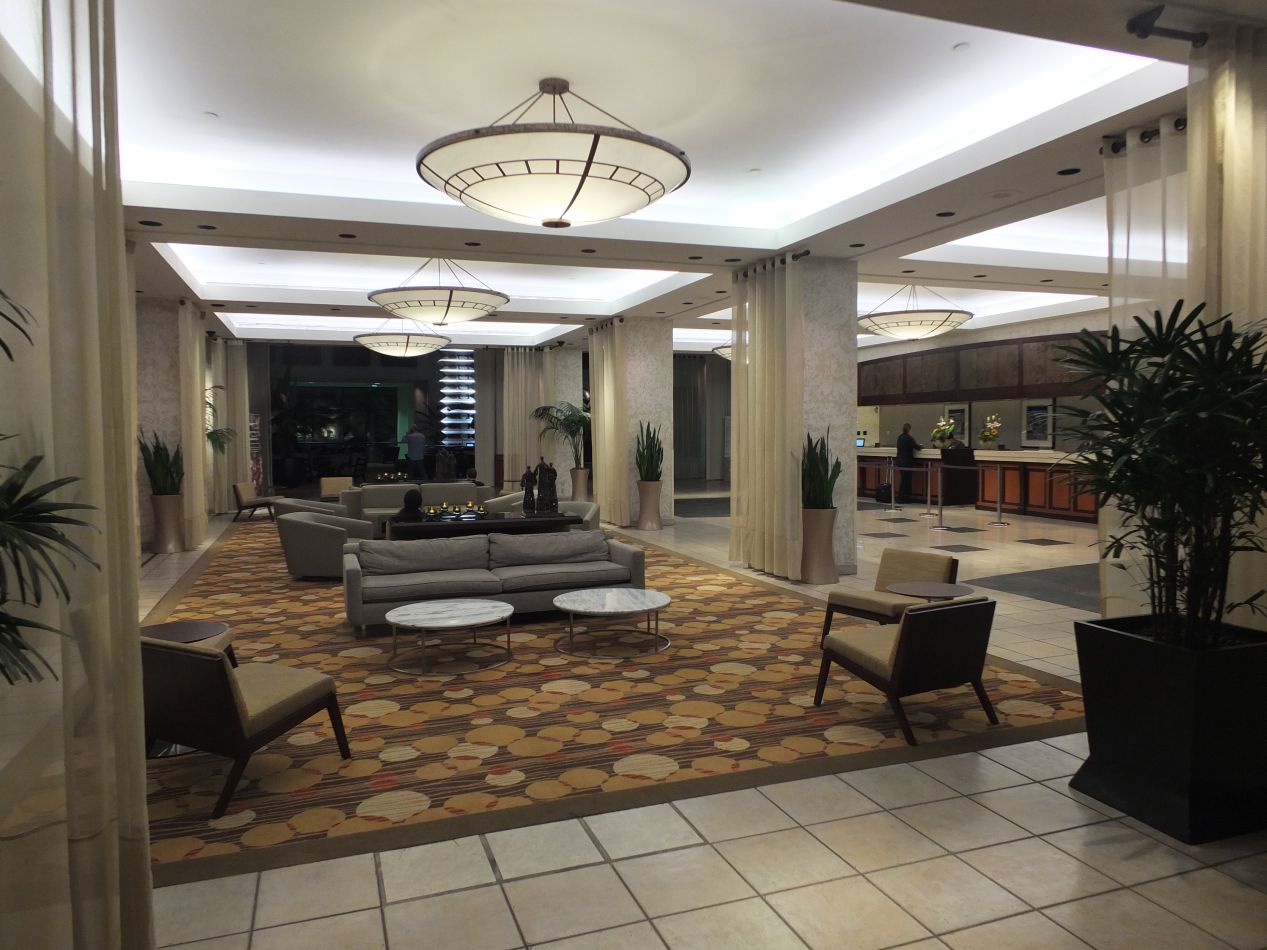
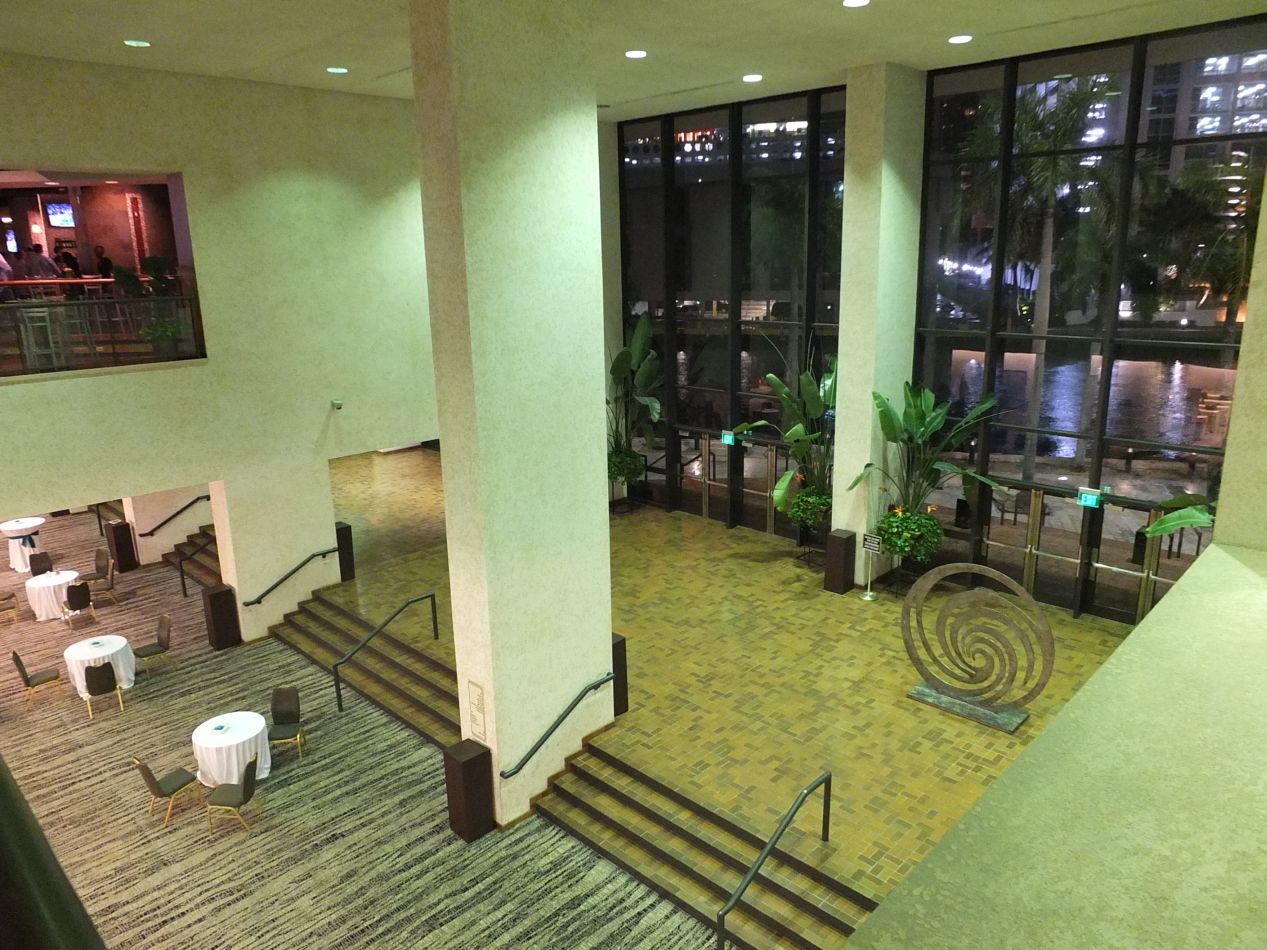
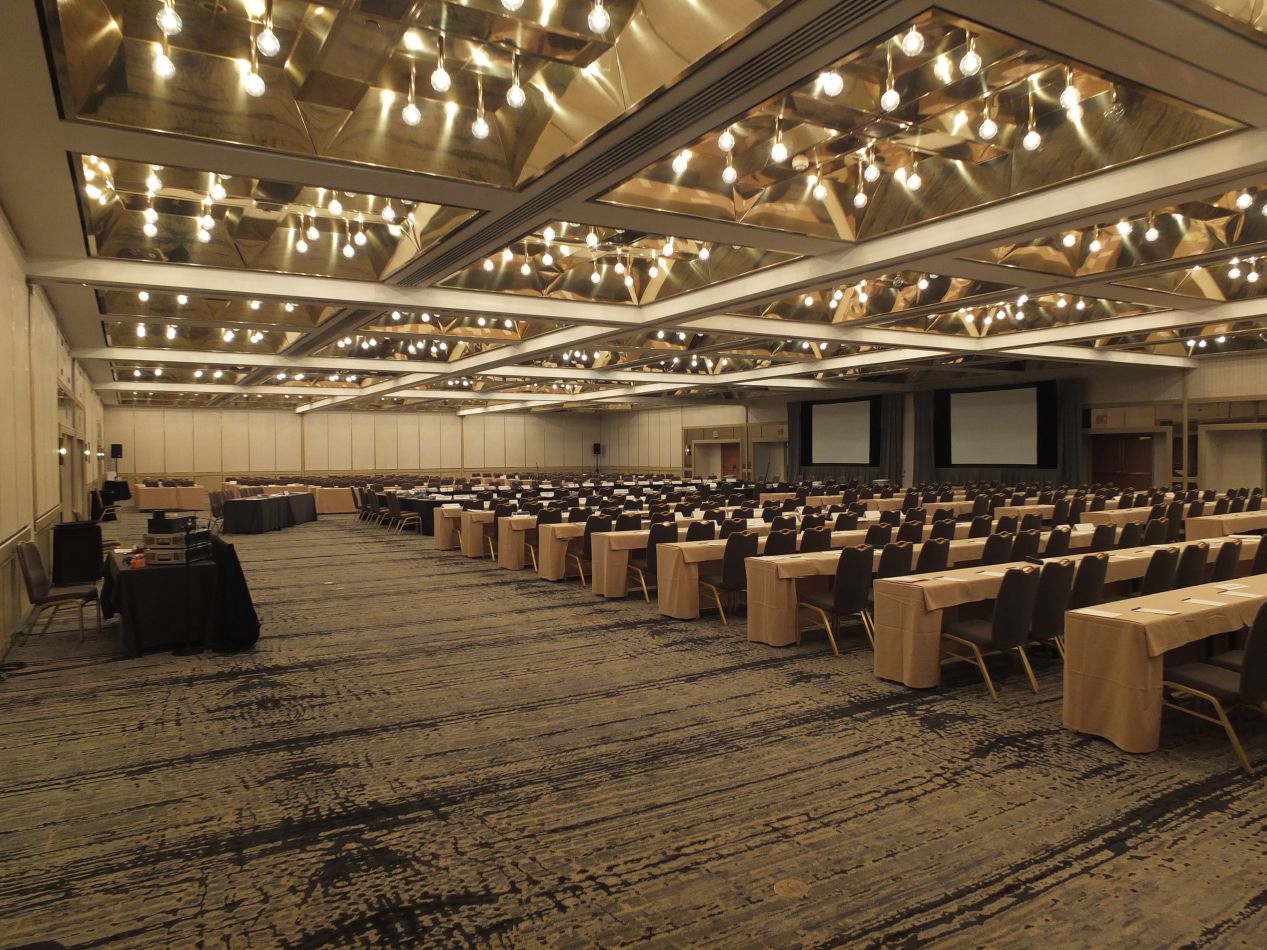
This was the hotel where I was staying for my work conference, the Hyatt Regency in downtown Miami. It was quite nice and well above what I would be spending if I were traveling on my own. This was the kind of venue used to hosting large conferences, and the meeting that I was attending was only one of several taking place. The last picture is the cavernous ball room where the conference was taking place, a room where I spent several dozen hours over the course of the five days that I attended this meeting. It was an American Medical Association gathering where I was serving as a representative for my job with Medicare. Government representatives are non-voting observers at these events which the AMA is kind enough to let us attend. I've been to a decent number of these conferences by now, and this one in Miami had the busiest schedule and the longest hours invested. Still, given the chance to get a free trip to southern Florida and see the Keys, it was more than worth it.
I would like to see the Florida Keys again under conditions where the weather was a little bit better and I wasn't quite so time constrained. The drive along the Overseas Highway is one of the most scenic routes to take in North America, and I'd encourage other travelers to experience it for themselves. That said, the Keys didn't have quite as many attractions as I was expecting, and unless you're a serious diver this is an area that's probably more worthy of a three day trip than a week's stay. (For divers, the Keys are supposed to be a paradise and about the best location available in the USA.) In the meantime, thanks again for reading and I hope you enjoyed this travel report.



